#29 April 1521
Explore tagged Tumblr posts
Text
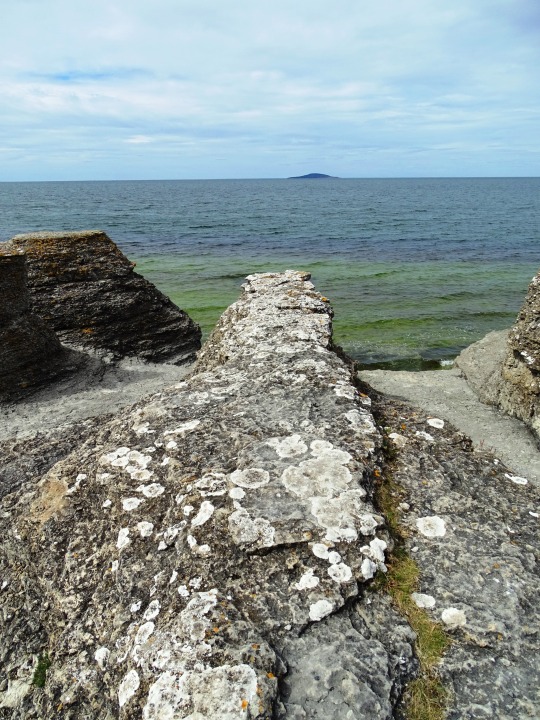


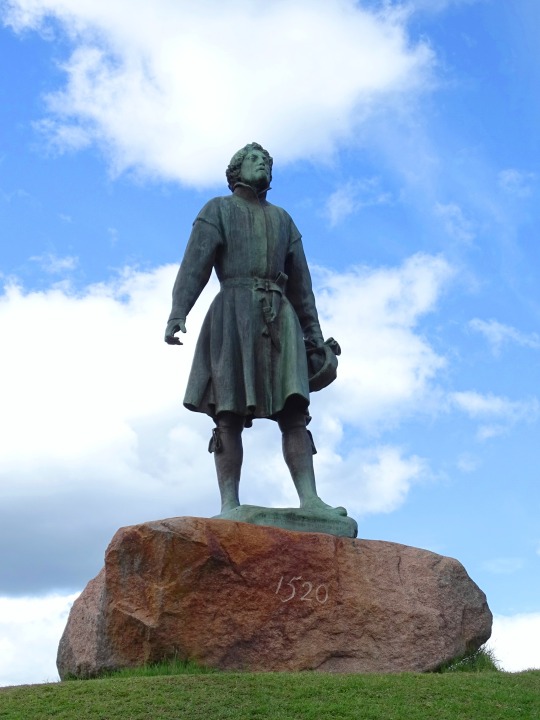


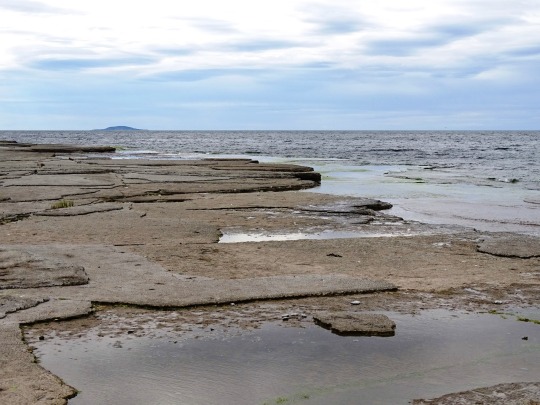
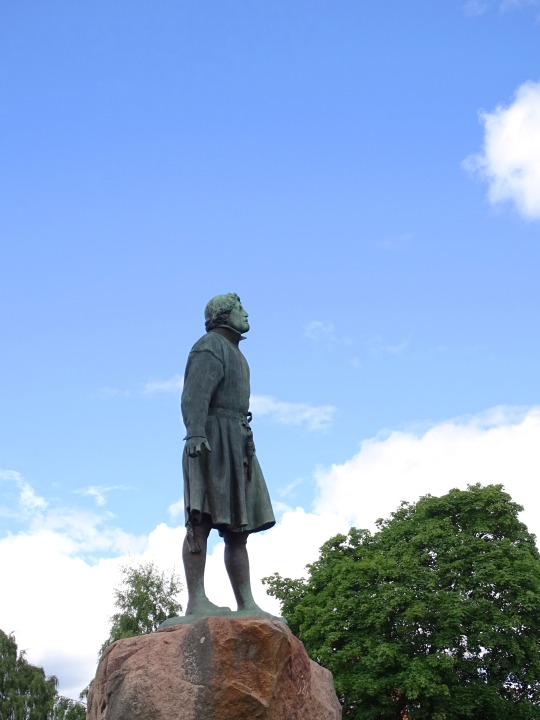


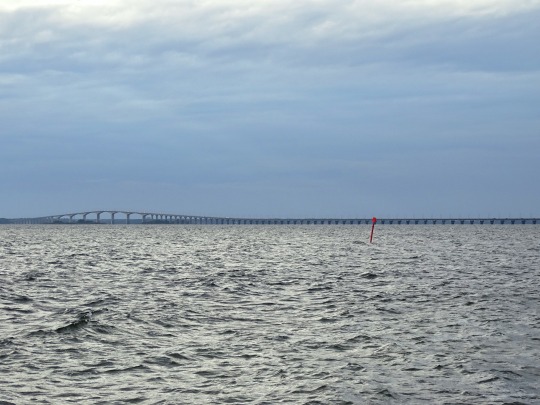
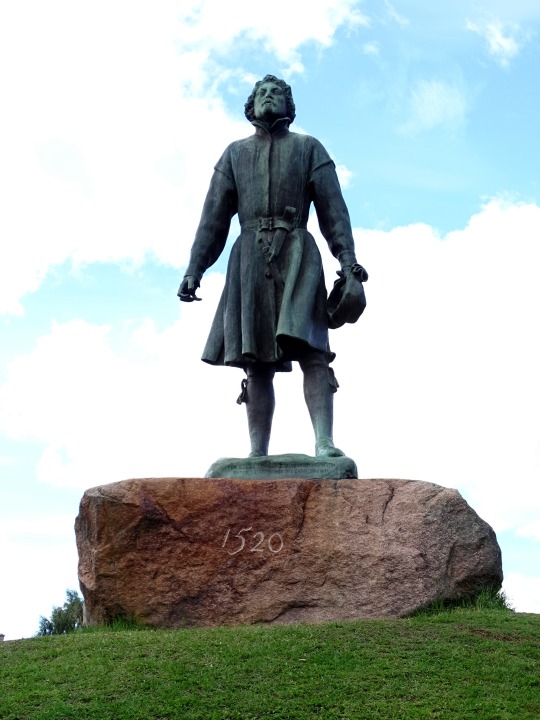
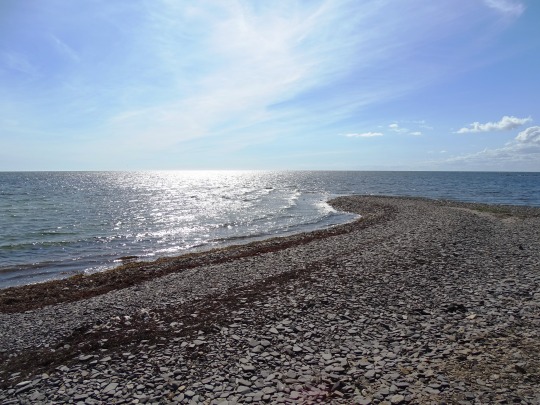

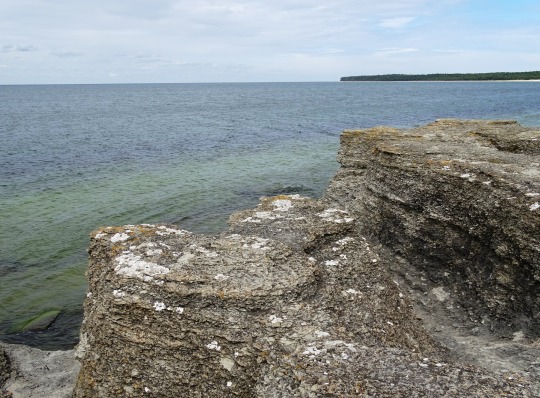
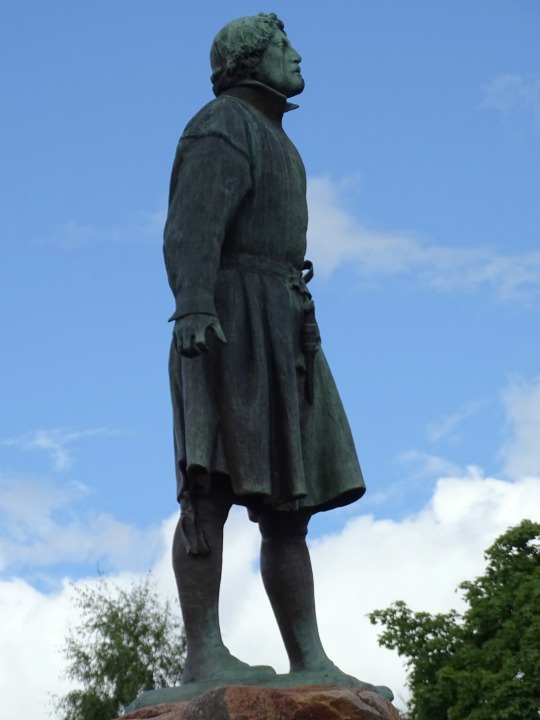
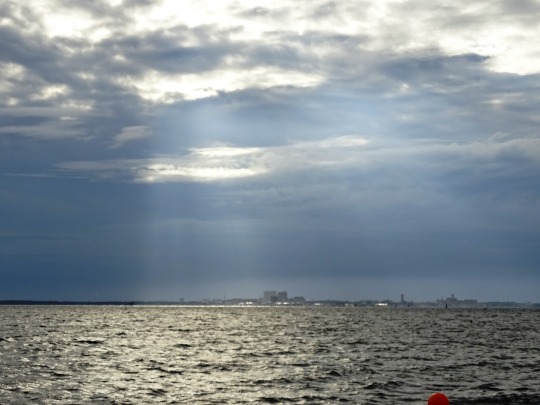


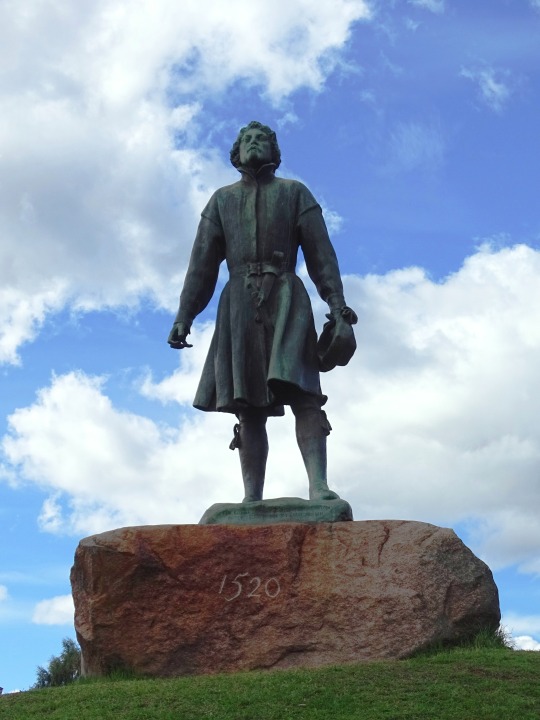



Swedish War of Liberation: Swedish troops defeated a Danish force in the Battle of Västerås on April 29, 1521.
#Gustav Vasa by Anders Zorn#Mora#Lake Siljan#Falun Mine#Kalmar Strait#Baltic Sea#Öland#Sweden#Swedish history#Sverige#summer 2020#travel#original photography#landscape#seascape#cityscape#Old Uppsala Archaeological Area#Långbryggan#Rättvik#Byrums Raukar#Neptune's Fields#Swedish War of Liberation#Battle of Västerås#29 April 1521#tourist attraction#landmark#countryside#Scandinavia#Northern Europe#vacation
0 notes
Text

THE SPANISH EXPEDITION TO BORNEO / "CASTILIAN WAR" Date :March–June 1578 Location :Borneo, Mindanao, and Sulu Result :Strategic Brunei Victory
The Portuguese, and later the Spaniards, tried to find an alternative route by sea to Southeast Asia, so they could trade in spices and other products with the Malays. The Portuguese in particular did this by conquering Malacca in 1511, two years after their arrival in the region.
The Spaniards arrived later in the mid-16th century. Their arrival to the archipelago now part of the modern-day Philippines, as well as Spain's intention to spread Christianity, caused a conflict with Brunei, then ruled by Sultan Saiful Rijal, which eventually led to the Castilian War. At the time, Brunei Darussalam was a powerful maritime empire extending from Borneo Island to most parts in the Philippines.
From their ports in Mexico, Spain sent several expeditions to the Philippines and in 1565 under Miguel Lopez de Legazpi, settled in Cebu. For a time Cebu became the capital of the archipelago and the main trading post. It was also the first city for spreading Christianity in the islands.
Because of this, the Spanish aspirations came to clash with those of Brunei. Between 1485 and 1521, the Sultanate of Brunei led by Sultan Bolkiah had established the state of Kota Serudong (otherwise known as the Kingdom of Maynila) as a Bruneian puppet state opposed to the local Kingdom of Tondo. Islam was further strengthened by the arrival to the Philippines of traders and proselytisers from present-day Malaysia and Indonesia.
Despite the influence of Brunei, the multiple states that existed in the Philippines simplified Spanish colonisation. In 1571, Miguel Lopez de Legazpi of Spain attacked and Christianised Islamic Manila, which was made the capital of the Philippine Islands, also becoming a hub for trade and evangelisation. The Visayans, (people from the Kedatuan of Madja-as and Rajahnate of Cebu) which before the Spaniards came, had waged war against the Sultanate of Sulu and the Kingdom of Maynila, now became allies of the Spaniards against the Sultanate of Brunei.
Notwithstanding their retreat from Brunei, Spain managed to keep Brunei from regaining a foothold in Luzon.[16] A few years later, relations improved and Spain began trading with the Sultanate, as evidenced by a letter from Don Francisco de Tello de Guzmán, Governor General of Manila, dated 1599 asking for a return of normal relationship.[17] The end of the Castilian War also allowed Spain to focus their attention on the Spanish-Moro war.
THE AFTERMATH: The Sultanate of Brunei would cease to be an empire at sea, eventually turning into a city-state, letting aside any previous territorial expansion policies, and had to give the territory to James Brooke because of the riots in Brunei territory until becoming one of the smallest nations in the world today. This new policy of sustained caution in their dealings with European powers allowed it to survive and become the oldest continuous Islamic political state.
SOURCES: 1. Ollé, Manel (2000). La invencion de China / The invention of China: Percepciones Y Estrategias Filipinas Respecto a China Durante El Siglo XVI / Philippine Perceptions and Strategies Towards China During the Sixteenth Century. Otto Harrassowitz Verlag. p. 94. ISBN 3447043369. Retrieved 29 December 2015. 2. "Pusat Sejarah Brunei" (in Malay). Government of Brunei Darussalam. Archived from the original on 15 April 2015. Retrieved 4 March 2010. 3. Agoncillo 1990, p. 22 4. McAmis 2002, p. 35. 5. Nicholl, Robert (1975). European sources for the history of the Sultanate of Brunei in the Sixteenth Century. Muzium Brunei. OCLC 4777019.
#planetputo#planet puto#rp brunei#rp aadila#rp philippines#rp emildephil#rp spain#rp cristobal#rp armm#rp cenvis#rp vis
19 notes
·
View notes
Text
My dad emailed me a link to a site projecting the remaining course of the COVID-19 epidemic.
Here’s what they think will happen in the US as of this writing (early morning April 30):

The way to read this projection is that they think that 97% of COVID-19 cases that will ever (well, this epidemic, anyways?) happen in the USA will happen by May 16, 2020.
I think this is rather optimistic. I spot-checked against the current epidemic course here in Washington state. Here’s what I sent my dad in reply:
#1:
Washington state has been locked down for like a month - this has radically slowed the course of the outbreak, but this almost tautologically means that most of the population is still in the S bucket of the standard SIR model. If we lift the lockdown, presumably the virus will go straight back to exponential growth, and then we'll all get it over the course of two months, at which point the epidemic will be over. If we continue lockdown, we'll keep seeing a steady flow of cases as our slightly-below-one R_0 means the infection slowly comes to a halt over months and months.
As far as I can tell, there's no realistic path to getting the statewide new case rate below a hundred per day in the next two weeks (we've had about 200 cases recorded per day, every day, for the past week).
#2:
We're currently stacking up, say, 200 new cases a day against a total confirmed case count of 14,070. Let's assume that we miraculously run at 100 cases per day on average for the entire month of May. That means about 15*100 = 1,500 cases in the second half of May. 1,500 / 14,070 = 11% of cases will still be in our future as of May 16.
I am highly skeptical of this curve-fitting. I think I would bet at 80% (4:1 odds) that the US epidemic will be less than "97% over" on May 16.
#3
To put some more color on what I think is happening here in WA:
Almost all of the population remains uninfected.
The current lockdown has reduced "number of new infections each infected person creates" (R_0) to slightly below 1.
Consequently, you can model the current course of infection as an exponential function, something like this:
New cases per day = 217 cases/day * (9/10)^(# days after now / (7 days))
i.e. figure that the spread is almost completely unaffected by the tiny fraction of people who have gotten it and recovered, and instead the spread is solely about how fast the virus can spread when the baseline rate of interpersonal contact is super low.
Where did 9/10 come from? Well, I kinda eyeballed the cumulative case count and testing graphs here and ballparked when I first wrote that equation, but let's do the math explicitly:
4/14: 10807 cumulative cases 4/21: 12549 cumulative cases (+1742) 4/28: 14070 cumulative cases (+1521) (1521 / 1742 = ~87%)
So we might figure that, each week, we'll see 87% (round that off to 90%) as many new cases as we did last week. Hence about 9/10 ^ (number of weeks after today)
I got 217 cases/day by taking the 1521 of the past week and dividing by 7.
So this ballparked model says something like the following for 17 days (May 16) from now (extremely early in the day on April 30):
217*(9/10)^(17/7) = ~168 cases/day
And for 30 days from now (May 29):
217*(9/10)^(30/7) = ~138 cases/day
So what do I think the website you linked missed? Well, I think they're assuming an SIR model with constant coefficients and fitting a curve to that, but the current SIR coefficients are completely different than they were a month ago due to a great deal of the US locking down. So an SIR curve-fit looks at the early US rapid spread, says, "ah, yes, this is extremely infectious" and then looks at the post-lockdown slowed growth to conclude "the only way this is possible, given the extremely high infectiousness, is if the susceptible population is so extremely low that the epidemic has almost completely run out of victims, meaning that it's just about over", and predicts a "soon" endpoint.
But what really happened is that the effective infectiousness (R_0) went way down in late March due to social distancing. Contra the SIR curve-fit, there are still tons of uninfected potential victims left for the virus. Its greatly reduced effective infectiousness means that the virus will take quite a while to get to the rest of these potential victims, but it will get to them eventually unless something else changes.
Posting this explicitly so y’all can call me out if I got this way wrong (in a month when the actual numbers arrive, if not sooner).
26 notes
·
View notes
Text
Death and funerals/Halál és temetés
Death was also a very important part of the life of Ottoman Empire, especially because violent death was extremely common among male members of the dynasty. We are all familiar with the law of fratricide, which has led to the death of hundreds of princes (in many cases infants, children) by being strangled with a silk string. In my post today, however, I would rather talk about those for whom the cause and time of death are not so clear. I brought you some interesting, possibly suspicious deaths, and tried to gather everything about the causes of death of each sultan, prince, and sultana; and I also brought a brief history of the funerals: who was buried where, when there were unusual changes in funeral habits…

In general, very little is known about the deaths of the sultans of the early period. In many cases, we are left with guesses about the cause of death. However, the death of Murad I. (r. 1362-1389) is, for example, a refreshing exception, as several descriptions of his death have been made. He was killed by a Serbian nobleman during or before the Battle of Rigómező (1389). “… Absolutely unexpectedly, Milos Obilic who, out of cunning and intrigue, said he had adopted Islam, asked us to (…) kiss the shining lord’s foot, but instead of doing so, he inevitably stabbed a poisoned knife hidden in his dress into the glorious body of the lord, and seriously wounded him, and drank him with the serbet of the martyrs.” Of course, it is not certain that everything happened as described, but it is certain that he was victim of murder by the hands of Milos Obilic.
The death of Bayezid I (r. 1389-1402) himself is also interesting. Some believe that he committed suicide in the captivity of Timur Lenk (r. 1370-1405) after Timur humiliated his wife, Maria before his eyes. Others say he was poisoned during captivity.
Either way, the deaths of the sultans always marked the beginning of something new. If the sultan died, there was no time to mourn. For their wives, concorts, and chief pashas had a different matter after death: to immediately notify the crown prince, or the prince whom they themselves wanted to see on the throne. The sultan became the one who reach the capital first and ascended the throne. In the early days, sultans often died during a campaign away from their home - the imperial capital - so it was their pashas who informed the princes about the situation. The princes did everything they could to get to the capital first. In many cases, they also received help from the pashas who supported them. For example, Bayezid II (r. 1481-1512), who had previously married his daughters to influential pashas. His sons-in-laws did everything they could to slow down Bayezid’s biggest rival, one of his brothers, on the road to Istanbul. They succeeded and Bayezid ascended the throne, so the pashas received their reward for it.
Unlike Bayezid II, at the death of Sultan Süleyman I (r. 1520-1566), there was no longer a competitor to his son, Selim II (r. 1566-1574). Yet Süleyman still died at a very bad moment - right in the middle of a battle - caused by the health problems by his gout. To avoid rebellion and loss of soldier's motivation, the grand vezir, Sokollu Mehmed Pasha concealed the sultan's death. He clothed servants in the sultan's robes, he dictated commands written by similarly handwritten scribes on behalf of the sultan until Selim II finally arrived to the camp and became a sultan.
In later periods, after his death the sultan's consorts played the main role, not his pashas, as the sultans died more and more often in the capital. One particularly interesting example of this is Selim II's death, which he suffered after slipping in the bath and which his wife, Nurbanu Sutan (⁓1525-1583), shared only with the Grand Vizier, and secretly sent a message to Nurbanu's son Murad (r. 1574-1595) to come to the capital. This was necessary because Murad's younger brothers were in the capital at the time of Selim's death.
The sultans were always buried in the current imperial capital. Bursa, as a former capital, played an important role even after the conquest of Constantinapole, as the princes who had been executed or died by natural causes were buried there. Of course, there were exceptions, during the reign of Süleyman I (r. 1520-1566) there was two. His favorite son, Mehmed (1521-1543), died of illness in Manisa, but breaking with customs, Süleyman not only buried him in the capital instead of Bursa, but had made a mosque to him, which vied with the mosques of the sultans. His other son, the rebellious Bayezid (1525-1562) was less fortunate. Because he was executed near the Iranian border, Süleyman even refused him the Bursa funeral so he was buried with his sons near to the Iranian border. His youngest son, who was an infant and could not flee to Iran with his him, was buried in Bursa among other princes of similar destiny.
Before we scrutinize the sultanas, here is a brief summary of the period of the “Sultanate of women” and the period immediately preceding it, about the causes of death of the sultans and princes, without claiming completeness*:
Bayezid II (b. 1447): 24 April 1512, most probably poisoning or natural causes
Selim I (d. 1470): 22 September 1520, most probably tumor or anthrax but plague is also an option
Süleyman I (b. 1494): 7 September 1566, gout but some sources suggest stroke also beside the gout
Şehzade Mahmud (b. 1512): 29 October 1521, smallpox or plague
Şehzade Musztafa (b. 1515): 6 october 1553, strangled
Şehzade Mehmed (b. 1546): 10 october1553, strangled
Şehzade Ahmed (b. ?): 1552, illness
Şehzade Murad (b. 1519): 12 October 1521, smallpox or plague
Şehzade Mehmed (b. 1521): 6 November 1543, smallpox or plague
Şehzade Abdullah (b. ⁓1525): c. 1527, maybe smallpox or plague
Şehzade Bayezid (b. ⁓1525 ): 23 July 1562, strangled
Şehzade Orhan (b. ⁓1543): 23 July 1562, strangled
Şehzade Osman (b. ⁓1545): 23 July 1562, strangled
Şehzade Abdullah (b. ⁓1548): 23 July 1562, strangled
Şehzade Mehmed (b. ⁓1544): 23 July 1562, strangled
Şehzade Murad (b. ⁓1556): 23 July 1562, strangled
Şehzade ? (b. ⁓1560/1): July 1562, strangled
Şehzade Cihangir (b. 1531): 27 November 1553, chronical illness and some kind of acut desease
Selim II: 12/15 December 1574, head injury after slipping
Şehzade Mehmed (b. ⁓1570): 1573/74, illness
Şehzade Szulejmán (b. ⁓1570): 22 December 1574, strangled
Şehzade Abdullah (b. ⁓1570): 22 December 1574, strangled
Şehzade Ali (b. ⁓1572): 1572, soon after his death
Şehzade Oszmán (b. ⁓1573/4): 22 December 1574, strangled
Şehzade Cihangir (b. ⁓1573/4): 22 December 1574, strangled
Murad III (b. 1546): 16 January 1595, natural causes
Şehzade Selim (b. 1567): 1595. január 28, megfojtás
Şehzade Mahmud (b. 1568): c. 1581, illness
Şehzade Süleyman, Cihangir, Ahmed died after their birth
Şehzade Abdullah (b. 1585): 28 January 1595, strangled
Şehzade Mustafa (b. 1585): 28 January 1595, strangled
Şehzade Bayezid (b. 1586): 28 January 1595, strangled
Şehzade Cihangir (b. 1587): 28 January 1595, strangled
Şehzade Abdurrahman (b. ?): 28 January 1595, strangled
Şehzade Alemşah (b. ?): 28 January 1595, strangled
Şehzade Aleaddin Davud (b. ?): 28 January 1595, strangled
Şehzade Ali (b. ?): 28 January 1595, strangled
Şehzade Hasan (b. ?): 28 January 1595, strangled
Şehzade Hüseyin (b. ?): 28 January 1595, strangled
Şehzade Ishak (b. ?): 28 January 1595, strangled
Şehzade Murad (b. ?): 28 January 1595, strangled
Şehzade Oszmán (b. ?): 28 January 1595, strangled
Şehzade Ömer (b. ?): 28 January 1595, strangled
Şehzade Yusuf (b. ?): 28 January 1595, strangled
Mehmed III (b. 1566): 21 December 1603, natural causes but some suggest he died because of health problems caused by his overweight
Şehzade Selim (b. 1585): 1597, illness
Şehzade Mahmud (b. 1587): summer of 1603, strangled
Şehzade Süleyman (b. ?): 1597, illness
Şehzade Cihangir (b. ?): 1602, illness
Ahmed I (b. 1590): 22 November 1617, typhus or gastric bleeding
Şehzade Mehmed (b. 1605): 12 January 1621, strangled
Şehzade Bayezid (b. 1612): 27 July 1635, strangled
Şehzade Kasim (b. 1614): 17 February 1638, strangled
Şehzade Süleyman (b. 1615): 27 July 1635, strangled
Şehzade Hasan, Orhan, Selim, Hüseyin, Cihangir and possibly others also died an infants or young children
Mustafa I (b. ⁓1600): 1639, natural causes most probably, but epilepsy os also an option
Osman II (b. 1604): murder
Şehzade Ömer (b. 1621): 1622, there are more than one options: accident, shock, murder, illness
Murad IV (b. 1612): 8 February 1640, cirrhosis and other chronical illnesses
He had lot of sons, but all of them died as infants. Evliya Celebi suggest that all of them were born with a bad health and they died soon. This suggests an extreme situation, poisoning or genetical desease are also options.
Ibrahim I (b. 1615): 18 August 1648, strangled
Şehzade Murad, Osman, Bayezid, Cihangir died as infants caused by illness
Şehzade Selim (b. 1644): 1669, most probably by illness
Mehmed IV (b. 1642): / November 1693, natural causes
Süleyman II (b. 1642): 22 June, 1691, his body got swollen then he fall into coma and later died.
Ahmed II (b. 1643): 6 February 1695, natural causes or stress-caused stroke/heart-attack
It is especially rare when the exact cause and date are both available for the sultanas. We know their lives primarily from registers that list their possessions and salaries. Thus, in many cases, we can only conclude that when they disappeared from the registers, they may have died. However, these registers are often incomplete, sometimes missing for several years, decades, and they can even be fragmentary. In addition, the cause of death was recorded even less frequently. To this we can usually deduce from if there was a child born, or there was a fresh marriage immediately before the time of death, or possibly was there a huge epidemic at the time of death? About the influential sultanas, the historians and ambassadors have occasionally recorded the supposed cause of death. However, this is quite rare, as will become clear from reading the list at the bottom of the chapter.
The burial of sultans has always evoked double feelings in the people, because on the day of the funeral, the ascension of the new sultan was celebrated and meanwhile the new sultan's brothers were executed by the new sultan so the people moruned them. In contrast, the mourning and funeral customs of the sultanas were much calmer, receiving more attention in this sense. At the time of their death, the needy were often given alms and food for the sake of the sultana's soul. For example, the burial of Handan Valide Sultan (⁓1570-1605) after her death on November 9, 1605, the Venetian ambassador recorded the vast amount of alms distributed among the people. In addition, the death and burial of a valide sultan was always associated with a public mourning, as the people could express their sympathy for the sultan, who had lost his mother at that time. After the death of Ayşe Hafsa (⁓1475-1534), the mother of Süleyman I, for example, the city mourned for several days. Süleyman’s mother Hafsa Sultan had been an honored member of the royal family. In describing her funeral, the royal chancellor and historian Celalzade Mustafa honored her with a long series of formulas of praise, among which are the most exalted that can be applied to a Muslim woman, likening her to the Prophet Muhammad’s first wife Khadija, his daughter Fatima, and his third and favorite wife ‘A’isha: “[S]he was a woman of great ascetism and a lady of righteous thought, queen of the realm of chastity and the Khadija of the capital of purity, builder of charitable foundations and doer of pious deeds, the Fatima of the era and the ‘A’isha of the age.”
In the case of sultanas, instead of violent death, childbirth was the leading death-cause. Many died in labour and childbirth... Although the palace’s doctors and midwives were the bests in the world, childbirth was a dangerous activity in those days. The fact is, however, that far fewer women from the dynasty of the Ottoman Empire died of childbirth compared to the western empires. The most famous birth-related death belongs to Esmehan Kaya. Kaya Sultan (1633-1658) was the daughter of Murad IV (r. 1623-1640), and she inherited the nature of her father, this is why she was considered by many to be Murad’s most worthy child. Legend has it that Esmehan Kaya was predicted that she would die in childbirth, which is why she did not allowed her husband close to her for years. However, over time true love developed between her and her husband, which of course was fulfilled physically. Esmehan Kaya gave birth to two children, so perhaps he had already forgotten the prophecy and breathed a sigh of relief. However, there were complications at the birth of her third child. The placenta did not detached, even though the midwives tried various tortures, so a few days after giving birth, she died by sepsis after horrible sufferings. Her little daughter didn't live too long either. One of Kaya’s sisters, Safiye (⁓1540-1580), also died during childbirth.
However, not Kaya and her sister were the only ones who died during childbirth, Two daughters of Selim II (r. 1566-1574) died in a similar way: Fatma Sultan (1558-1580), who died along her daughter after giving birth, at a fairly young age; and Esmehan Sultan (⁓1545-1585) who died of complications after the birth of his fourth child. Her son survived her just with a month. In her case, the complications may also have been related to the fact that she gave birth in a relatively old age compared to the customs of the period, at about forty years of age. It is interesting, by the way, that Selim's other daughter, Şah (1544-1580), also died at a relatively young age due to illness, so of Selim's daughters, only Gevherhan (⁓1545-1622?) was the one who died in old age and presumably by natural causes.
According to legends, Murad III's (r. 1574-1595) favourite consort, Safiye Sultan(⁓1550-1620?), also almost died in one of her miscarriages, but as we know she eventually survived and was able to rule for many, many more years. The less fortunate Mahfiruze Hatun (⁓1590-1608 / 12?), concubine of Ahmed I, and the mother of his eldest son, presumably also died in childbirth, although in her case several alternatives arose as to the cause of death, including epidemic also.
Interestingly, among the sultan’s favorites, we know even fewer cases where a concubine died during childbirth. However, the reason for this is presumably not that this has not happened ever… The reason is that when the concubine died in childbirth she was simply forgotten. After all, the average concubine did not give birth to a large number of children, especially as long as the one-concubine-one-son rule was followed. Thus, in all likelihood, when they died during childbirth, they either had no other children or only daughters, so they were less important persons, their names were recorded less, and then they disappeared from the public consciousness.
From the period of the “Sultanate of women” I also collected the causes and dates of the death of the most famous sultanas, without claiming completeness, as many sultanas were left out of the list because neither the year nor the reason of their death is known and in many cases not even their names *:
Ayşe Hafsa Sultan (b. ⁓1475): 19 March 1534, illness, most probably stroke or cancer since she suffered for months
Beyhan Sultan (b. ⁓1492): c. 1559, most probably natural causes
Hatice Sultan (b. ⁓1491): ?
Fatma Sultan (b. ⁓1493): 1557, most probably natural causes or illness
daughters of Selim I
Hafsa Sultan (b. ⁓1495/1500): 10 July 1538, most probably illness
Şah-i Huban Sultan (sz. ⁓1500): 1572, natural causes
Hürrem Sultan (b. ⁓1503): 15 April 1558, most probably cancer and maybe malaria also
Mihrimah Sultan (b. 1522): 25 January 1578, most probably natural causes or illness
Ayşe Hümaşah Sultan (b. 1541): 1594, natural causes or illness
Şehzade Mehmed’s daughter
Hümaşah Sultan (b. 1543): 1582, natural causes or illness
Fatma Hanimsultan (b. 1567): 29 July 1588, illness or complications during childbirth
Raziye Sultan (b. ⁓1515): October 1521, smallpox or plague
Mahidevran Hatun (b. ⁓1500): 3 February 1581, natural causes
Mahidevran Hatun’s granddaughters:
Fatma Sultan (b. ⁓1545): 1577, illness or childbirth
Nergiz-Şah Sultan (b. ⁓1536): c. 1592, natural causes or illness
Gülfem Hatun (b. ⁓1495): 1562, natiral causes or execution
Nurbanu Sultan (b. ⁓1525): 7 December 1583, most probably a sudden illness, or stroke/heart-attack, but poisoning is also an options
Esmehan Sultan (b. ⁓1545): 8 August 1585, complications after childbirth
Şah Sultan (b. 1544): September 1580, illness
Gevherhan Sultan (b. ⁓1545): after 1604, maybe in 1622, natural causes
Selim II’s daughter, Fatma Sultan (b. 1558): September 1580, after childbirth (maybe complications after a still-birth)
Safiye Sultan (b. ⁓1550): c. 1520, natural causes
Ayşe Sultan (b. ⁓1565): 15 May 1605, most probably illness
Hümaşah Sultan (b. ⁓1565): after 1580, illness or childbirth
Fatma Sultan (b. ⁓1565): c. 1620, natural causes
Murad III’s daughters:
Fahriye Sultan (b. ⁓1588): after 1641, natural causes
Rukiye Sultan (b. ⁓1593): c. 1623, most probably illness or childbirth
Handan Sultan (b. ⁓1570): 9 November 1605, gastric problems
Halime Sultan (b. ⁓1570): after 1623, ?
Kösem Sultan (b. ⁓1590): 2 September 1651, strangled
Hanzade Sultan (b. ⁓1609): 23 September 1650, illness or natural causes
Ayşe Sultan (b. ⁓1605/7): c. 1657, most probably natural causes
Fatma Sultan (b. ⁓1606): c. 1670, most probably natural causes
I. Ahmed’s daughters
Gevherhan Sultan (b. ⁓1605): 1660, natural causes
Abide Sultan (b. 1618): c. 1648, most probably illness (or she lived longer just retired and became forgotten)
Atike Sultan (b. ⁓1614): c. 1670, most probably natural causes
Ayşe Sultan (b. ⁓1610): c. 1680, natural causes
Esmehan Kaya Sultan (b. 1633): 1658, complications after giving birth
IV. Murad’s daughters:
Safiye Sultan (b. 1635):1680, complications after giving birth
Rukiye Sultan (b. ⁓1640): 1696, most probably natural causes
Hanzade Sultan (b. 1631): 1675, most probably natural causes
Turhan Hatice Sultan (b. ⁓1627): 1683, natural causes by some chronical illness.
Fatma Sultan (b. 1642): 1657, illness
Ibrahim I’s daughters:
Gevherhan Sultan (b. 1642): 21 September 1694, long illness
Beyhan Sultan (b. 1645): 5 March 1701, natural causes
Hatice Muazzez Sultan (b. ⁓1627): 12 September 1687, heart attack or stroke
Saliha Dilaşub Sultan (b. ⁓1627): 4 December 1689, long illness maybe cancer
Telli Hümaşah Sultan (b. ⁓1630): c. 1672, most probably illness
Emetullah Rabia Gülnüs Sultan (b. ⁓1642): 6 November 1715, illness
A short discussion about the history and customs of funerals
For a long time, the sultans were the only "inhabitants" of their tomb. In this Murad III made a change, burying his executed siblings next to his father, Selim II. But over time, Murad broke another tradition when he buried his mother, Nurbanu, next to his father in his tomb. For in the past centuries the wifes and consorts of the sultans had not been placed in a tomb with their master, and for a long time not even in their mosque. An early exception to this was Süleyman I's mother Ayşe Hafsa, who was buried in Süleyman I's father's mosque. Over time, Süleyman buried his only wife, Hürrem, in his own mosque in a separate tomb. And later Nurbanu was the first woman to rest right next to her husband in the same tomb. Importantly, however, Murad had already done a similar thing before Nurbanu. When Mihrimah Sultan passed away, knowing how close she was to his father, Murad buried her in Süleyman’s tomb, right next to her father. This is particularly interesting because Mihrimah’s husband Rüstem also had a mosque where Mihrimah could have been buried, but the mosque of Mihrimah’s brothers, the Şehzade Mosque, would also have been suitable for her. All indicate that Murad buried Mihrimah next to his father with a reason, as he later did with his mother and father.
Back to Nurbanu, in her case, another tradition was broken. It was not only in life but in death as well that Nurbanu Sultan enjoyed extraordinary honors. Contrary to the custom whereby the sultan remained in the palace during a funeral, Murad accompanied his mother’s coffin on foot, weeping as he walked, to the mosque of Mehmed the Conqueror, where funeral prayers were said. The choice of the Conqueror’s mosque, the most distant of the sultanic mosques from the imperial palace, ensured both a maximum number of bystanders’ prayers for Nurbanu’s soul and maximum appreciation by the capital’s residents of this display of royal piety and respect for the valide sultan. According to the historian Selaniki, the “whole world” crowded into the mosque for the funeral prayers. For forty days high-ranking statesmen and religious officials were required to pay their respects at the valide sultan’s tomb, while the Qur’an was read continuously. The extraordinary nature of this funeral is suggested by the fact that in the extensive collection of the Topkapı Palace Library, the only miniature that depicts an event in the life of a female member of the dynasty is one illustrating the emergence of Nurbanu Sultan’s funeral cortège from the imperial palace.
*PS: The dates in the lists are not always widely accepted. There are dates of birth and death that historians are still debating to this day. In these cases, I have mentioned the dates I consider most plausible.
Used sources: Leslie Peirce – The imperial harem, Women and Sovereignty in the Ottoman Empire; Leslie Peirce – Empress of the east; Colin Imber – The Ottoman Empire, 1300-1650; Günhan Börekçi – Factions and Favorites at the courts of Sultan Ahmed (r. 1603-17) and his immediate predecessors; Douglas A. Howard – A History of the Ottoman Empire.
* * *
A halál is nagyon komoly részét képezte az Oszmán Birodalomnak, különösen mert rendkívül gyakori volt az erőszakos halál a dinasztia férfitagjai között. Mindannyian ismerjük a testvérgyilkosság törvényét, mely okán több száz herceget (sok esetben csecsemőket, gyermekeket) fojtottak meg a selyemzsineggel. Mai posztomban azonban inkább azokról szeretnék szólni, akik esetében nem ennyire egyértelmű a halál oka, ideje. Néhány érdekes, esetleg gyanús halálesetet hoztam el számotokra, illetve megpróbáltam összeszedni mindent az egyes szultánok, hercegek és szultánák halálának okairól; valamint a temetkezés rövid történetét is elhoztam: kiket hová temettek, mikor álltak be rendhagyó változások a temetkezési szokásokban…

Az általánosságban elmondható, hogy a korai periódus szultánjainak haláláról igen keveset tudunk. Nagyon sok esetben csak találgatások maradtak ránk a halál okáról. I. Murad (u. 1362-1389) halála azonban például egy üdítő kivétel, esetében ugyanis több leírás is készült haláláról. Egy szerb nemes gyilkolta meg tőrrel a Rigómezei csata (1389) alatt vagy előtt. „… teljesen váratlanul egy bizonyos Milos Obilic, aki ravaszságból és cselszövésből azt mondta, hogy felvette az iszlámot, arra kért bennünket, hogy (…)megcsókolja a fénylő nagyúr lábát, ahelyett, hogy ezt tette volna, elháríthatatlanul ruhájába elrejtett mérgezett kést szúrt a fénylő nagyúr dicső testébe, s súlyosan megsebezvén megitatta őt a mártírok serbetjével.” Természetesen nem bizonyos, hogy minden a leírtak szerint történt, az azonban biztos, hogy gyilkosság áldozata lett Milos Obilic keze által.
I. Bayezid (u. 1389-1402) halála maga szintén érdekes, egyesek úgy vélik, hogy öngyilkos lett Timur Lenk (u. 1370-1405) fogságában, miután az, szeme láttára alázta meg feleségét Mariát. Mások szerint megmérgezték a fogság idején. Akárhogyan is, a szultánok halála mindig valami új kezdetét jelentette. Ha a szultán meghalt, nem volt idő gyászolni. Asszonyaiknak, feleségeiknek és a főbb vezíreinek ugyanis más dolga volt a halál beállta után: azonnal értesíteni a koronaherceget, vagy azt a herceget, akit ők maguk a trónon akartak látni. A szultán ugyanis az lett, aki először ért a fővárosba és foglalta el a trónt. A korai időszakban a szultánok gyakran az otthonuktól – a birodalmi fővárostól – távol, hadjárat során hunytak el, így vezíreik voltak azok, akik értesítették a hercegeket a helyzetről. A hercegek pedig mindent megtettek, hogy egymás előbb érhessenek a fővárosba. Ebben pedig sok esetben segítséget is kaptak az őket támogató pasáktól. Így kerülhetett például trónra II. Bayezid (u. 1481-1512) is. Lányait korábban befolyásos pasákhoz adta nőül, vejei pedig mindent megtettek, hogy Bayezid legnagyobb vetélytársát, egyik testvérét lelassíthassák az Isztambulba vezető úton. Sikerrel jártak és Bayezid elfoglalta a trónt, ők pedig megkapták érte jutalmukat.
II. Bayeziddel ellentétben, I. Szulejmán szultán (u. 1520-1566) halálakor nem volt már vetélytársa fiának, II. Szelimnek (u. 1566-1574). Azonban Szulejmán mégis nagyon rossz pillanatban – épp egy csata kellős közepén – hunyt el a köszvénye okozta egészségügyi problémákban. Hogy elkerülje a lázadást és a katonák motivációjának elvesztését, a fővezír a szultán halálát eltitkolta. Szolgálókat öltöztetett be a szultán ruháiba, hasonló kézírású írnokokkal íratott parancsokat a szultán nevében, amíg II. Szelim megérkezett végre a táborba és szultánná lett.
A későbbi periódusokban már a szultán asszonyaié volt a főszerep, hiszen a szultánok egyre gyakrabban hunytak el a fővárosban. Erre egyik különösen érdekes példa II. Szelim halála, mely egy fürdőben történő elcsúszás után érte, és amit felesége Nurbanu szultána (⁓1525-1583) csak a nagyvezírrel osztott meg, és titokban üzentek Nurbanu fiának Muradnak (u. 1574-1595), hogy igyekezzen a fővárosba. Erre azért volt szükség, mert Murad gyermeköccsei a fővárosban tartózkodtak II. Szelim halálakor.
A szultánokat mindig az éppen aktuális birodalmi fővárosban helyezték örök nyugalomra. Bursa, mint korábbi főváros egyébként Isztambul elfoglalása után is fontos szerepet őrzött, ugyanis a kivégzett vagy természetes módon elhunyt hercegeket itt helyezték örök nyugalomra. Természetesen ebben is akadt kivétel, I. Szulejmán (u. 1520-1566) uralkodása alatt rögtön kettő is. Kedvenc fia, Mehmed (1521-1543) betegségben halt meg Manisában, ám a szokásokkal szakítva Szulejmán nem csak, hogy a fővárosban temette el Bursa helyett, de egyenesen szultánokéval vetekedő mecsetet építtetett fia számára. Másik fia, a lázadó Bayezid (1525-1562) kevéssé volt szerencsés. Mivel az iráni határ mellett végezték ki, Szulejmán még a Bursai temetést is megtagadta tőle, és az iráni határ mellett lelt örök nyugalomra fiai mellett. Legkisebb fia, aki csecsemő volt és nem tudott apjával együtt Iránba menekülni, kivégzése után Bursába lett eltemetve a többi hasonló sorsú herceg között.
Mielőtt tovasuhannánk és a szultánákat vennénk górcső alá, itt egy kis összefoglaló a „Nők szultánátusának” időszakából és az azt közvetlenül megelőző időszakból, a szultánok és hercegek halálának okairól, a teljesség igénye nélkül*:
II. Bayezid (sz. 1447): 1512. április 24, feltehetőleg mérgezés, de a természetes halál is felmerül
I. Szelim (sz. 1470): 1520. szeptember 22, feltehetőleg daganatos betegség vagy lépfene, de a mérgezés és pestis is opció
I. Szulejmán (sz. 1494): 1566. szeptember 7, köszvény, de ráadásnak az agyvérzés is felmerült
Şehzade Mahmud (sz. 1512): 1521. október 29, himlő vagy pestis
Şehzade Musztafa (sz. 1515): 1553. október 6, megfojtás
Şehzade Mehmed (sz. 1546): 1553. október 10, megfojtás
Şehzade Ahmed (sz. ?): 1552, betegség
Şehzade Murad (sz. 1519): 1521. október 12, himlő vagy pestis
Şehzade Mehmed (sz. 1521): 1543. november 6, feltehetőleg himlő
Şehzade Abdullah (sz. ⁓1525): c. 1527, talán himlő vagy pestis
Şehzade Bayezid (sz. ⁓1525 ): 1562. július 23, megfojtás
Şehzade Orhan (sz. ⁓1543): 1562. július 23, megfojtás
Şehzade Osman (sz. ⁓1545): 1562. július 23, megfojtás
Şehzade Abdullah (sz. ⁓1548): 1562. július 23, megfojtás
Şehzade Mehmed (sz. ⁓1544): 1562. július 23, megfojtás
Şehzade Murad (sz. ⁓1556): 1562. július 23, megfojtás
Şehzade ? (sz. ⁓1560/1), 1562. július ?, megfojtás
Şehzade Cihangir (sz. 1531): 1553. november 27, krónikus betegségek és valamilyen fertőzés
II. Szelim: 1574. december 12/15, elesést követő fejsérülés
Şehzade Mehmed (sz. ⁓1570): 1573/74, betegség
Şehzade Szulejmán (sz. ⁓1570): 1574. december 22, megfojtás
Şehzade Abdullah (sz. ⁓1570): 1574. december 22, megfojtás
Şehzade Ali (sz. ⁓1572): 1572, születése után
Şehzade Oszmán (sz. ⁓1573/4): 1574. december 22, megfojtás
Şehzade Cihangir (sz. ⁓1573/4): 1574. december 22, megfojtás
III. Murad (sz. 1546): 1595. január 16, természetes okok
Şehzade Szelim (sz. 1567): 1595. január 28, megfojtás
Şehzade Mahmud (sz. 1568): c. 1581, betegség
Şehzade Szulejmán, Cihangir, Ahmed és feltehetőleg más hercegek is: születésük után egyből
Şehzade Abdullah (sz. 1585): 1595. január 28, megfojtás
Şehzade Musztafa (sz. 1585): 1595. január 28, megfojtás
Şehzade Bayezid (sz. 1586): 1595. január 28, megfojtás
Şehzade Cihangir (sz. 1587): 1595. január 28, megfojtás
Şehzade Abdurrahman (sz. ?): 1595. január 28, megfojtás
Şehzade Alemşah (sz. ?): 1595. január 28, megfojtás
Şehzade Aleaddin Davud (sz. ?): 1595. január 28, megfojtás
Şehzade Ali (sz. ?): 1595. január 28, megfojtás
Şehzade Hasan (sz. ?): 1595. január 28, megfojtás
Şehzade Hüseyin (sz. ?): 1595. január 28, megfojtás
Şehzade Ishak (sz. ?): 1595. január 28, megfojtás
Şehzade Murad (sz. ?): 1595. január 28, megfojtás
Şehzade Oszmán (sz. ?): 1595. január 28, megfojtás
Şehzade Ömer (sz. ?): 1595. január 28, megfojtás
Şehzade Yusuf (sz. ?): 1595. január 28, megfojtás
III. Mehmed (sz. 1566): 1603. december 21, természetes okok (egyesek szerint túlsúlyhoz köthető egészségügyi problémák)
Şehzade Szelim (sz. 1585): 1597, betegség
Şehzade Mahmud (sz. 1587): 1603, megfojtás
Şehzade Szulejmán (sz. ?): 1597, betegség
Şehzade Cihangir (sz. ?): 1602, betegség
I. Ahmed (sz. 1590): 1617. november 22, feltehetőleg tífusz vagy gyomorvérzés
Şehzade Mehmed (sz. 1605): 1621. január 12, megfojtás
Şehzade Bayezid (sz. 1612): 1635. július 27, megfojtás
Şehzade Kasim (sz. 1614): 1638. február 17, megfojtás
Şehzade Szulejmán (sz. 1615): 1635. július 27, megfojtás
Şehzade Hasan, Orhan, Selim, Hüseyin, Cihangir és feltehetőleg más hercegek is csecsemőként agy gyermekként
I. Musztafa (sz. ⁓1600): 1639, természetes okok (de az epilepszia is felmerül)
II. Oszmán (sz. 1604): brutális gyilkosság
Şehzade Ömer (sz. 1621): 1622, több opció is létezik: baleset, gyilkosság, betegség, sokk
IV. Murad (sz. 1612): 1640. február 8, májzsugor és feltehetőleg egyéb krónikus betegségek
Rengeteg fia született, ám Evliya Celebi szerint mindannyian gyenge egészséggel születtek, majd haltak meg nem sokkal később. A háttérben egyesek mérgezést sejtenek, de lehetett genetikai betegség is, amely a fiúkat érintette.
I. Ibrahim (sz. 1615): 1648. augusztus 18, megfojtás
Şehzade Murad, Osman, Bayezid, Cihangir gyermekként elhunytak betegség következtében
Şehzade Selim (sz. 1644): 1669, feltehetőleg betegség
IV. Mehmed (sz. 1642): 1693. november 6, természetes okok
II. Szulejmán (sz. 1642): 1691. június 22, teste felduzzadt, kómába esett majd meghalt valamilyen betegségtől
II. Ahmed (sz. 1643): 1695. február 6, természetes okok, de a stressz okozta szívroham/agyvérzés is opció
Különösen ritka, mikor a pontos ok és időpont is rendelkezésünkre áll a szultánák esetében. Az ő életüket elsősorban feljegyzésekből ismerjük, melyek a tulajdonaikat és fizetéseiket listázzák. Így sok esetben csak következtetni tudunk rá, hogy amikor eltűntek a feljegyzésekből, akkor hunyhattak el. Azonban ezek a feljegyzések gyakran hiányosak, előfordul, hogy több évre, évtizedre sincsenek meg, esetleg töredékesek. Emellett a halál okát még ritkábban jegyezték fel. Erre általában onnan tudunk következtetni, hogy született e gyermek, volt e friss házasság a halál idejét közvetlenül megelőzően, volt e esetleg hatalmas járvány a halál ideje alatt? Valamint a befolyásosabb szultánák esetében a történetírók, követek előfordult, hogy feljegyezték a halál feltételezett okát. Ez azonban meglehetősen ritka, ahogy a fejezet alján található listát olvasva is egyértelművé válik.
A szultánok temetése mindig kettős érzéseket váltott ki az emberekből. Egyrészt a temetés napján új szultán trónra lépését ünnepelték, és az új szultán kivégzett testvéröccseit gyászolták. Ezzel szemben a szultánák gyászszertartásai és temetési szokásai sokkal nyugodtabbak voltak, nagyobb figyelmet kaptak ilyen értelemben. Halálukkor a nincsteleneknek gyakran osztottak lelki üdvükért alamizsnát, ételt. Erre például Handan valide szutána (⁓1570-1605) 1605. november 9-i halálát követően temetése remek példa. A velencei követ feljegyezte, hogy milyen hatalmas mennyiségű alamizsnát osztottak szét az emberek között. Emellett egy valide szultána halála és temetése mindig nyilvános gyászszertartáshoz volt köthető, hiszen a nép így ki tudta fejezni együttérzését a szultánnal, aki édesanyját veszítette el ekkor. Ayşe Hafsa (⁓1475-1534), I. Szulejmán édesanyjának halála után például a város több napra gyászba borult. Mindemellett a temetését leíró Celalzade Mustafa serint nagyon hosszú imákkal búcsúztatták, amelyben a legtiszteltebb muszlim asszonyokhoz tették őt hasonlatossá, mint például Mohamed próféta első felesége Hatice, leánya Fatma és harmadik, egyben kedvenc felesége Ayşe: „Nagyon vallásos asszony volt, az igazlelkű cselekedetek asszonya, a tisztaság királynője, korának Haticéje; jótékony intézetek alapítója, korának Fatmája és Ayşéje.”
A szultánák esetében az erőszakos halál helyett a gyermekszülés volt vezető halálok. Sokan a szülésbe haltak bele, mert bár a palota orvosai és bábái a világ legjobbjai voltak, a szülés veszélyes tevékenység volt azokban az időkben. Tény azonban, hogy a nyugati birodalmakhoz képest jóval kevesebb asszony halt bele a szülésbe vagy gyermekágyi lázba az Oszmán Birodalom dinasztiájából. A leghíresebb szüléshez kapcsolódó halál Esmehan Kayáé. Kaya szultána (1633-1658) IV. Murad (u. 1623-1640) leánya volt, aki örökölte apja természetét, sokan őt tartották Murad legméltóbb gyermekének. Legendák szerint Esmehan Kayának megjövendölték még fiatal korában, hogy a szülésbe fog belehalni, emiatt évekig nem engedte közel magához a férjét. Férjével azonban idővel igazi szerelem alakult ki, mely természetesen testileg is beteljesült. Esmehan Kaya két gyermeknek is életet adott, így talán már el is felejtette a jövendölést és fellélegzett. Harmadik gyermeke születésekor azonban komplikációk léptek fel. A placenta nem akart leválni, hiába próbálkoztak különféle tortúrákkal a bábák, így a szülést követően néhány nappal vérmérgezésben elhunyt, borzalmas szenvedések után. Kislánya sem élte túl sokkal. Kaya egyik testvére, Safiye (⁓1540-1580) szintén gyermekszülésbe halt bele.
Azonban nem Kaya és húga volt az egyetlen, hasonló módon halt meg II. Szelim (u. 1566-1574) két leánya is: Fatma szultána (1558-1580), aki kislánya születésébe halt bele a gyermekkel együtt, meglehetősen fiatalon; Esmehan szultána (⁓1545-1585) pedig negyedik gyermeke szülése után fellépő komplikációkba halt bele, fia alig egy hónappal élte túl csupán. Esetében a komplikációknak köze lehetett ahhoz is, hogy a kor szokásaihoz képest viszonylag későn, nagyjából negyven évesen szült. Érdekes egyébként, hogy Szelim másik leánya, Şah (1544-1580) is viszonylag fiatalon hunyt el betegség következtében, így Szelim leányai közül egyedül Gevherhan (⁓1545-1622?) volt az, aki megérte az időskort és feltehetőleg természetes okoktól hunyt el.
Legendák szerint egyébként III. Murad (u. 1574-1595) kedvese, Safiye szultána (⁓1550-1620?) is majdnem belehalt egyik vetélésébe, ám mint tudjuk ő végül túlélte és még sok-sok évig uralkodhatott. Kevésbé volt szerencsés Mahfiruze Hatun (⁓1590-1608/12?), I. Ahmed ágyasa, és legidősebb fiának anyja, aki feltehetőleg szintén a szülésbe halt bele, igaz esetében több alternatíva is felmerült halálának okával kapcsolatban, így többek között a járvány is egy opció esetében.
Érdekes, hogy a szultán kedvencei között még ennél is kevesebb esetet ismerünk, amikor egy ágyas halt bele a szülésbe. Ennek oka azonban feltehetőleg nem az, hogy ilyen nem történt… Hanem az, hogy ha az ágyas belehalt a szülésébe egyszerűen feledésbe merült. Hiszen az átlag ágyasok nem adtak életet nagyszámú gyermeknek, különösen, amíg az egy ágyas – egy herceg szabályt betartották. Így nagy eséllyel, ha belehaltak a szülésbe, akkor vagy nem volt más gyermekük vagy csak leányuk, így kevésbé voltak fontos személyek, kevesebb feljegyzésbe került bele a nevük, majd eltűntek a köztudatból.
„Nők szultánátusának” időszakából szintén összegyűjtöttem a legismertebb szultánák halálának okait és idejét, a teljesség igénye nélkül, hiszen sok szultána kimaradt a listából, mert esetükben sem az évszám, sem az ok nem ismert, sőt sok esetben még neveik sem*:
Ayşe Hafsa szultána (sz. ⁓1475): 1534. március 19, betegség, feltehetőleg agyvérzés vagy daganatos betegség
Beyhan szultána (sz. ⁓1492): c. 1559, valószínűleg természetes okok
Hatice szultána (sz. ⁓1491): ?
Fatma szultána (sz. ⁓1493): 1557, természetes okok vagy betegség
I. Szelim leányai
Hafsa szultána (sz. ⁓1495/1500): 1538. július 10, feltehetőleg betegség
Şah-i Huban szultána (sz. ⁓1500): 1572, természetes okok
Hürrem szultána (sz. ⁓1503): 1558. április 15, feltehetőleg daganatos betegség, maláriával nehezítve
Mihrimah szultána (sz. 1522): 1578. január 25, természetes okok vagy hasonló betegség, mint édesanyjánál
Ayşe Hümaşah (sz. 1541): 1594, természetes okok
Şehzade Mehmed leánya
Hümaşah szultána (sz. 1543): 1582, természetes okok vagy betegség
Fatma Hanimsultan (sz. 1567): 1588. július 29, betegség vagy szülés során fellépő komplikációk
I. Szulejmán kislánya, Raziye szultána (sz. ⁓1515): 1521 októbere, himlő vagy pestis
Mahidevran Hatun (sz. ⁓1500): 1581. február 3, természetes okok
Mahidevran Hatun unokái:
Fatma szultána (sz. ⁓1545): 1577, szülés vagy betegség következtében
Nergiz-şah szultána (sz. ⁓1536): c. 1592, természetes okok vagy betegség
Gülfem Hatun (sz. ⁓1495): 1562, természetes okok vagy gyilkosság
Nurbanu szultána (sz. ⁓1525): 1583. december 7, mérgezés vagy valamilyen hirtelen természetes ok (talán agyvérzés, szívroham)
Esmehan szultána (sz. ⁓1545): 1585. augusztus 8, gyermekszülést követő komplikációk
Şah szultána (sz. 1544): 1580. szeptember, betegség
Gevherhan szultána (sz. ⁓1545): 1604 után, lehetséges, hogy 1622, természetes okok
II. Szelim leánya:
Fatma szultána (sz. 1558): 1580. szeptember, gyermekszülés (valószínűleg komplikációs koraszülés)
Safiye szultána (sz. ⁓1550): c. 1520, természetes okok
Ayşe szultána (sz. ⁓1565): 1605. május 15, feltehetőleg betegség
Hümaşah szultána (sz. ⁓1565): 1580 után, feltehetőleg betegség vagy szülés
Fatma szultána (sz. ⁓1565): c. 1620, természetes okok
III. Murad leánya:
Fahriye szultána (sz. ⁓1588): 1641 után, természetes okok
Rukiye szultána (sz. ⁓1593): c. 1623, feltehetőleg betegség vagy gyermekszülés
Handan szultána (sz. ⁓1570): 1605. november 9, emésztőrendszeri problémák
Halime szultána (sz. ⁓1570): 1623 után, ?
Kösem szultána (sz. ⁓1590): 1651. szeptember 2, megfojtás
Hanzade szultána (sz. ⁓1609): 1650. szeptember 23., betegség vagy természetes okok
Ayşe szultána (sz. ⁓1605/7): c. 1657, feltehetőleg természetes okok
Fatma szultána (sz. ⁓1606): c. 1670, feltehetőleg természetes okok
I. Ahmed leányai
Gevherhan szultána (sz. ⁓1605): 1660, természetes okok
Abide szultána (sz. 1618): c. 1648, feltehetőleg betegség
Atike szultána (sz. ⁓1614): c. 1670, feltehetőleg természetes okok
Ayşe szultána (sz. ⁓1610): c. 1680, természetes okok
Esmehan Kaya szultána (sz. 1633): 1658, szülés után fellépő komplikációk
IV. Murad leányai
Safiye szultána (sz. 1635):1680, szülés után fellépő komplikációk
Rukiye szultána (sz. ⁓1640): 1696, valószínűleg természetes okok
Hanzade (sz. 1631): 1675, valószínűleg természetes okok
Turhan Hatice szultána (sz. ⁓1627): 1683, természetes okok, feltehetőleg betegség következtében
Fatma szultána (sz. 1642): 1657, betegség következtében
Ibrahim leányai:
Gevherhan szultána (sz. 1642): 1694. szeptember 21, hosszas betegség
Beyhan szultána (sz. 1645): 1701. március 5, természetes okok
Hatice Muazzez szultána (sz. ⁓1627): 1687. szeptember 12, feltehetőleg szívroham
Saliha Dilaşub szultána (sz. ⁓1627): 1689. december 4, betegség
Telli Hümaşah szultána (sz. ⁓1630): c. 1672, feltehetőleg betegség
Emetullah Rabia Gülnüs szultána (sz. ⁓1642): 1715. november 6, hosszas betegség után
A temetésekről néhány szó végezetül
A szultánok hosszú ideig türbéjük egyedüli lakó voltak. Ebben III. Murad hozott változást, aki kivégeztetett testvéreit is apja mellé temette. De idővel újabb tradíciót szegett meg Murad, amikor édesanyját, Nurbanut apja mellé temette annak türbéjébe. Korábban ugyanis a szultánok asszonyai nem kerültek a szultánjukkal közös türbébe, sőt sokáig még annak mecsetjében sem temethették el őket. Erre egy korai kivétel I. Szulejmán édesanyja Ayşe Hafsa volt, akit Szulejmán apja mecsetjébe temetett el. Idővel Szulejmán egyetlen feleségét, Hürremet is a saját mecsetjében helyezte örök nyugalomra egy különálló türbébe. Ezekután Nurbanu volt az első asszony, aki közvetlenül férje mellett nyugodhatott. Fontos azonban, hogy Murad már Nurbanu előtt is tett hasonlót. Amikor Mihrimah szultána elhunyt, tudva, hogy a szultána mennyire közel állt édesapjához, Szulejmán türbéjébe temette el, közvetlenül édesapja mellé. Ez különösen érdekes, mert Mihrimah férjének Rüsztemnek is volt mecsetje, ahová Mihrimaht temethették volna, de Mihrimah testvéreinek mecsetje a Şehzade mecset is alkalmas lett volna a szultána számára. Minden jel arra mutat, hogy Murad okkal temette apja mellé Mihrimaht.
Nurbanuhoz visszatérve, esetében még egy tradíció megszakadt. Nurbanu ugyanis nem csak életében viselhetett különleges jogokat, de halálakor is különleges tiszteletben részesült. Fiával való szoros kapcsolata jól ismert mindenki számára, ennek pedig tökéletes megnyilvánulása volt, amikor holtteste elhagyta a Topkapi Palotát. A hagyományok szerint a koporsót befolyásos pasák vitték és kísérték az imahelyre, a szultán pedig ez alatt a palotában maradt gyászolni. Murad azonban nem akarta édesanyját egyedül elengedni, ezért maga ment a koporsó előtt és zokogott. Nurbanu gyászszertartásának helye is érdekes volt, ugyanis Hódító Mehmed mecsetjét választották e célra, ami a legtávolabb feküdt a birodalmi palotától. Ennek célja az volt, hogy a legtöbb ember láthassa a temetést és imádkozhasson a valide szultána lelkiüdvéért. A történész Selaniki szerint az „egész világ” odacsoportosult a mecsetbe a temetési imára. Negyven napig olvastak érte fel a Koránból és negyven napig jártak magas rangú pasák a türbéjéhez. Érdekesség – és ez is jelzi Nurbanu befolyását –, hogy a Topkapi Palota könyvtárában megtalálható az egyelten olyan miniatúra, ami a dinasztia egy nőtagját ábrázolja, ez a miniatúra pedig Nurbanu temetéséről szól.
*UI: A listákban szereplő dátumok nem minden esetben egyezményesek. Vannak olyan születési és halálozási dátumok, melyek esetén a történészek is vitatkoznak mind a mai napig. Ezekben az esetekben az általam leghihetőbbnek vélt dátumot tüntettem fel.
Felhasznált források: Leslie Peirce – The imperial harem, Women and Sovereignty in the Ottoman Empire; Leslie Peirce – Empress of the east; Colin Imber – The Ottoman Empire, 1300-1650; Günhan Börekçi – Factions and Favorites at the courts of Sultan Ahmed (r. 1603-17) and his immediate predecessors; Douglas A. Howard – A History of the Ottoman Empire.
#reallifesultanas#hürrem sultan#hürrem#ayse hafsa sultan#ayse hafsa#süleyman i#fratricide#sultanate of women#death
33 notes
·
View notes
Photo

My little planet, Galust Mkhitaryan
I created a "world list". Even many famous and good people did not get into this work, but they are much more on the list, I'll draw the next time. In the picture all the colors, all the styles in the painting. 252 people, 252 masterpieces, portraits. in this picture are depicted 252 influential people of our planet. People who created our world. The painting is a real museum exhibit, where he painted 252 masterpieces. The very first king from the Mesopotamia, known science Alilum a2 - Lu-Lim XXX BC famous Gilgamesh XXVII-XXVI and the first pharaoh of the first dynasty of Egypt Menes. in my list found the places Iisus Hristos, Muhammad, In the list I painted portraits of great scientists and artists. Great artists and athletes. My heroes, from all over the world and states. There are heroes from China, America, from Central America, from Europe, from Russia. from Armenia and from the East. Successful businessmen of all time, the famous Morgan, Rockefeller and today's Mark Zucemberg. In the picture I drew and negative people in the negative form is Hitler, this is Stalin is Lenin and others. Features of the picture. Thanks to my work, many ancient heroes found their faces. Based on ancient sketches, sculptures and bas-reliefs, I created their faces. Now, Kleopatra,. Tutankhamen, Gilgamesh, Hammurabi have their scientific faces. I was inspired to this work by a portrait of SirWinston Churchill and Charlie Chaplin. After I thought of drawing all the influential people. In the picture, I decided to use different styles, and genres for a change. I also want to show the world to the whole world that the 1915 scum of the Turks cut out such a talented people as the Armenians, and I drew representatives of the Armenian people such as Aram Khacaturyan Charles Aznavour Michel Legrand and many Armenian origins. This is my list of the World, I believe that it is necessary to create such a picture list and make people happy, so that everyone can see on one canvas at once. In the future I will draw even more people, many modern people who did not get into the picture let me be forgiven, because this was the first work. and was very difficult. I think that the picture will be very interesting and attractive. People will walk with phones, turn on the Internet and look for those who are pictured in the picture. At the opening of the exhibition, there will be a queue for viewing portraits. This picture I spent 7 months enjoying the viewers, I dream that people learn from newspapers and from the Internet go and look at this work, in any city where I go to show, there will be numerous views. I specifically tried to draw different styles and techniques. I documented the video snapshots sent by representatives of Guinness World Records. I hope that a positive response will come and I will set a record., The real value of the picture is 1 million Euro. I in other sites exhibited a picture for a million dollars. In Saatchi there is a limit of 100 thousand dollars, so I put out 100 thousand. If in the Saatchi Site the first person who buys something I will sell for 100 thousand dollars. .List of people 1.Gautama Budda Born c. 563 BCE or c. 480 BCE Died c. 483 BCE or c. 400 BCE 2.Maria Mother of Jesus Third quarter of de icentury BC. The middle of the 1st century 3.Iisus Hristos 4 î.Hr. 33 d.Hr. 4. Muhammad April 26, 570 January 8, 632 5 Hayk XXXII or XXX centuries BC. E. 6.Piotr Weliki 30may 1672 28 January 1725 7.Elizabeth I. 7 September 1533 24march 1603 8.Alexandr Graham Bel 3 march 2 August 1922 9.Charlies Robert Darvin 12 February 1809 19 April 1882 10.Enrico Fermi 29 September 1901 - 28 November 1954 11.Tomas Woodrow Wilson 28 Dekember 1856 3 February 1924 12.Winston Churchill Sir 30 November 1874 24 January 1965 13.John F. Kennedy 29 May 1917 - 22 November 1963 14.Charles de Goulle 22 November 1890 9 November 1970 15.William Henri Gates 28 Oktober 1955 16.Minas Avetisyan 20 July 1928 24 February 1975 17.Galust Gulbenkian 23 March 1869 20 Juli 1956 18.Arshille Gorki 15 April 21 July 1948 19.Grigor Shldyan 20 August 1900 1 April 1985 20.Jean Jansem 9 March 1920 27 August 2013 21.Vuslim Magomayev 17 August 1942 25 oktober 2008 22.Demis Roussos 15 1946 25 January 2015 23. Goyko Mitich 13 Junen1940 24.Stiven Frederic Segal 10 April 1952 25. Jean-Claude Van Damme 18 October 1960 26. Alilum a2 - Lu-Lim XXX BC 27. Gilgamesh XXVII-XXVI 28.Menes 2800 BC 2700 BC 29. Kleopatra 2 November 69 12 August 30 BC 30. Nefertiti 1370 BC 1330 BC 31. Tutankhamen XVIII Dynasty of the Nev Kingdom 1332-1323 32. George Washington 22 Febrary 1732 14 December 1799 33. Hammurapi 1820 1750 BC 34. Johann Sebastian Bach 21-31 March 28 July 1750 35. Merritt Singer 27 October 1811 23 July 1875 36. Alfred Bernhard Nobel 21 October 1833 10 December 1896 37. Amerigo Vespucci 9 March 1454 22 February 1512 38. Coco Chanel 19 Augusta 1883 10 January 1971 39. Gianni Versace 2 Dekember 1948 15 July 1997 40. Stive Jobs 24 February 1955 5 October 2011 41. John Davison Rocefeller 8 July 1839 23 May 1937 42. Sr John Pierpont Morgan 17 April 31 March 1913 43. Raymond Alfred «Ray» Kroc 5 October 1902 14 January 1984 44. Andrew Carnegie 25 November 11 August 1919 45. Walter Elias Disney 5 December 1901 15 December 1966 46. Martiros Saryan 28 February 1880 5 May 1972 47. Ciorgio Armani 11 July 1930 48. Jack" Kevorkian 26 May 1928 3 June 1911 49.Garegin Nzhdeh 1 January 1886 21 December 1955 50. Arthur Abraham 20 February 1980 51. Sergei Parajanov 9 January 1924 20 July 1990 52. Tigran Petrosyan 17 June 1929 13 August 1984 53. Alessandro Safina October 14, 1963 54. Antonio Banderas 10 August 1960 55. Mark Elliot Zucemberg 14 May 1984 56. Sir Isaac Newton 25 December 1640 20 March 1726 57. Will Smith 29 September 1968 58. Leonardo Di Caprio 11 November 1974 59. Alla Pugachova 15 April 1949 60. Gyros 590 BC 530 BC 61. Flavius Valerius Aurelius Constantinus 27 Febrary 272 23 May 337 62. Asoka 304 BCE 232 BCE 63. Gaius Julius Cesar 13 July 100 BC 15 March 44 BC 64. Aleksandr Makedonski 356 July 323 BC 65. Genghis Khan 1156 - 1162 25 August 1227 66. Ferdinand Porsche 3 September 1875 January 1950 67. Emest Hemingway 21 Jule 1899 2 Jule 1961 68. Nikolaus Copernicus 19 Feruary 1473 14 May 1543 69. Michelangelo 6 March 1475 18 February 1564 70. Galileo Galilei 15 Feruary 1564 8 January 1642 71. Boris Piotrovski 14 February 1908 15 Oktober 1990 72. Henry Ford 30 July 1863 7 April 1947 73. Baron Amchel Mayer von Rotscchild 23 Febrary 1744 19 September 1812 74. Cornelius Vanderbilt 27 May 1794 4 January 1877 75. Alexander Vasilyevich Suvorov 24 November 1730 18 May 1800 .76. Vasco da Gamma 29 September 1469 24 December 1524 77. Mikhail Gorbachov 2 March 1931 78. Abraham Alikhanian 20 February 1904 8 December 1970 79. Shavarsh Karapetyan 19 May 1953 80. Andre Aggasi 29 April 1970 81. Komitas 26 September 1869 22 Oktober 1935 82. Yurik Vardanyan 13 June 1956 83. Cher Cherlyn Sarkisyan 20 May 1946 84. George Clooney 6 May 1961 85. Jackie Chan 7 April 1954 86. Jean-Paul Belmondo 9April 1933 87. Alain Delon 8 november 1935 88. Elton Jhon March 1947 89. Elvis Presley 8 January 1935 90. Cai Lun 48-62 CE 121 91. Aristotel 384 BC - 322 BC 92. Emperor Wen ot Han 202 BC 157 BC 93. Sui Wendi 21 July 541 AD 13 August 604 94. Erik Raudi Thorvaldsson 950 103 95. Leonardo Da Sir Piero da 15 April 1452 2 May 1519 96. Willam Shakespeare 1564 23 April 1616 97. Ludwig Van Beethoven December 1770 26 March 1827 98. Alexander Dumas 24 July 1802 5 December 1876 99. Mikhail Lomonosov 19 November 1711 15 April 1765 100. Fridtjof Nansen 10 October 1862 30 May 1930 101. Nelson Rolihlahla Mandela 18 July 1918 5 December 2013 102. Mother Tereza 26 August 1910 5 September 1997 103. Indira Gandhi 19 November 1917 31 October 1984 104. Karl Marx 5 May 1918 14 March 1883 105.Viktor Amazaspovich Ambartsumyan 18 September 1908 12 August 1996 106. Ovanes Aivazovski 17 Juny 1817 2 May 1900 107. Arno Babajanyan 22 January 1921 11 November 1983 108. Aram Khacaturyan 6 June 1903 1 May 1978 109. Andranik Zoravar Ozanyan 25 Feebruary 1865 31 August 1927 110. Kirk Douglas 9 December 1916 111. John Winston Lennon 9 October 1940 8 December 1980 112. Louis Daniel Armstrong 4 August 1901 6 July 1971 113. Charlie Chaplin 16 April 1889 25 Dekember 1977 114. Louis de Funes 31 July 1914 27 January 1983 115. Bruce Lee 27 November 1940 20 July 1973 116. Lise Koch 22 September 1906 1 September 1967 117. Lavrenti Pavlovich Beria 29 March 1899 23 Dekember 1953 118. Heinrich Luitpold Himmler 7 October 1900 23 May 1945 119. Lenin 22 April 1870 21 January 1924 120. Adolf Hitler 20 April 1889 30 April 1945 121. Tamerlane 9 April 1336 19 February 1405 122. Spartacus Diet in April 71 BC 123. Hipokrat 1 March 460 CE 370 CE 124. Niccolo Paganini 27 October 1782 27 May 1840 125. Robertino Lorreti 22 October 1946 126. Wolfgang Amadeus Mazart 27 January 1756 5 December 1791 127. Cristopher Columbu 31 October 1451 20 May 1506 128. Albert Einstein 14 March 1879 18 April 1955 129. Andrei Dmitrievich Shakarov 21 May 1921 14 December 1989 130. Ferdinand Magellan 3Februari 1480 27 April 1521 131. James Gamble 3 April 1803 29 April 1891 132. Isbella I de Castille 22 April 1451 26 November 1504 133. Che Guevara 14 June 1928 9 October 1967 134. Micho SUzuki 10 February 1877 27 october 1982 136. Dalai Lama 6 July 1935 137. Mesrop Mashtoch 361 17 February 441 138. Ovanes Bagramyan 2 Dekember 1897 21 September 1982 139. Gevorg Vardanyan 17 February 1924 10 January 2012 140. Hovhannes Toumanyan 19 February 1869 23 March 1923 141Movses Khorenatsi 410 CA 490 142. Raj Kapoor 14 Dekember 1924 2 June 1988 143. Fatima Rashid Nargis Dutt 1 June 1929 3 May 1981 144. Paul Mc Cartney 18 June 1942 145. Alexander Sergeyevich Pushkin 6 June 1799 10 February 1837 146. Garsia Lorca 5 June 1898 19 August 1936 147. Tigranes II 95 CE 55 CE 148. Josep Stalin 18 December 1878 5 March 1953 149. Pol Pot 19 May 1925 15 April 1996 150. Enver Pasha 22 November 1881 4 August 1922 151. Mehmed Talat pasha 10 April 1874 15 March 1921 152. Delphine La Laurie 19 March 1787 7 December 1849 153. Herostratus Diedc 356 BC 154. Amin Idi Dada 1923 16 August 2003 155. Shiro Ishii 25 June 1892 9 October 1959 156. Stiven Allan Spielberg 18 Dekember 1946 157. Julio Iglesias 23 September 1943 158. Monserrat Caballe 12 April 1933 159. John Christopher Depp 9 June 1963 160. Mark Tvain 30 November 1835 21 april 1910 161. Confucus 09 -28 551BC 479 162. Napoleon Bonapart 15 August 1769 5 May 182 163. Mansur Hasan Firdousi Tusi 935 1020 164. Nizami 1141 1209 165. Omar Khayyam 18 May 1040 4 december 1131 166. Quanah Parker 1845- 1852 25 Feburary 1911 167. Robert Bosh 23 September 1861 12 March 1942 168. Jams Clerk Maxvell 13 June 1831 5 Novwmber 1879 169. Martin Luther King 15 January 1929 4 April 1968 170. Lev Nikolaevich Tolstoy 9 September 1828 20 November 1910 171. Armen Dzhigarkhanyan 3 October 1935 172. Charles Aznavour 22 May 1924 173. Jivan Gasparyan 12 October 1928 174. Yousuf Karsh 23 December 1908 13 June 2002 175. Kim Kardashian 21 October 1980 176. Serj Tankian 21 August 1967 177. Luciano Pavarotti 12 October 1935 6 September 2007 178. Viktoria Ronjina 7 December 2011 179. Arnold Schawarzenegger 30 July 1947 180. Mel Gipson 3 January 1956 181. Sylvester Stollone 6 July 1946 182. Amitabh Bachchan 11 October 1942 183. Adriano Celentano 6 January 1938 184. Bridgitte Dordot 28 September 1934 185. Sophia Loren 20 September 1934 186. Sara Brightman 14 August 1960 187. Elizabeth Taylor 27 February 1932 23 March 2011 188. Jean Alfred Villain-Mararis 11 December 1913 8 November 1998 189. Janne d. Arc 6January 1412 30 May 1431 190. Arhimed 287 BC 191. Paul The Apostle 5-10 67 192. Jacques-Yves Cousteau 11 June 1910 25 June 1997 193. Yuri Gagarin 9March 1934 27 March 1968 194. Julius Robert Oppenheimer 22 April 1904 18 February 1967 195. Mikhail Kalashnikov 10 November 1919 23 December 2013 196. Dmitri Ivanovich Mendeleev 8 February 1834 2 February 1907 197. Simon Bolivar 24 July 1783 23 December 1830 198. Salvador Dali 11 May 1904 23 January 1989 199. Wassily Kandinsky 16 Dekember 1866 13 Dekember 1944 200. Andy Warhol 1 August 1928 22 February 1987 201. Michel Jean Legrand 24 February 1932 202. William Saroyan 31 Augusta 1908 18 May 1981 203. Artem Ivanovich Mikoyan 5 August 1905 9 December 1970 204. Larry Gagosyan 19 April 1945 205. Jean Carzou 1 January 1907 17 November 2000 206. Vasily Alekseyev 7 January 1942 25 November 2011 207. Angelina Jolie 4 June 1975 208. Aishwarya Rai 1 November 1973 209. William Bradley Pitt 18 December 1963 210. Jennifer Lynn Lopez 24. July 1969 211. Dahram Singh Deol Dharment dra 8 December 1935 212. Hema Malinini R Chakravarth c 16 Oktober 1948 213. Jordi Cruyff 25 April 1947 24 March 2016 214. Eusebio da Silva Ferrera 25 January 1942 215. Herd Muller 3 November 1945 216. Pele 21 October 1940 217.Sergei Pavlovich Korolev 12 January 1906 14 January 1966 218. Muhammad Ali 17 January 1942 3 June 2016 219. Ronaldinho Gaucho 21 March 1980 220. Adrey Shevchenko 29 September 1976 221. Pablo Picasso 25 October 1881 8April 1973 222. Paul Gauguin 7 June 1848 8 May 1903 223. Vincent Van Gogh 30 March 1853 29 July 1890 224. Zurab Tsereteli 4 January 1934 225. Ayrton Senna 21 March 1960 1 May 1994 226. John Tavares 20 September 1990 227. Lev Ivanovich Yashin 22 October 1929 20 March 1990 228. Wladimir Klitschko 25 March 1976 229. Vitali Klitschko 19 July 1971 230. Carlos Ray Chak Norris 10 March 1940 231. Alfredo James Pacino 25 April 1940 232. Michael Joseph Jackson 29 August 1958 25 June 2009 233. Marilyan Monroe 1June 1926 5 August 1962 234. Diego Armando Maradona 30 October 1960 235.Ronaldo Luis Nazario de Lama 18 September 1976 236. Lionel Andres Messi 24 June 1987 237. Cristiano Ronaldo 5 February 1985 238. Oleh Blokhin 5 November 1952 239. Michel Francois Platini 21 June 1955 240. Alex Ferguson 31 December 1941 241. Steffi Graf 14 June 1969 242. Franz Anton Beckenbauer 11 September 1945 243. Carl Lewis 1 June 1961 244. Irina Rodnina 12 September 1949 245. Michael Jeffrey Jordan 17 February 1963 246. Ezekiel Kemboi Cheboi 25 May 1982 247. Serhii Nazarovych Bubka 4 December 1963 248. Shaguille Rashaun O' Nea 6 March 1972 249. Valeri Kharlamov 14 January 1948 27 August 1981 250. Michael Schumacher 3 January 1969 251. Mike Tyson 30 June 1966 252. Mkhitaryan Galust 1 January 1959
https://www.saatchiart.com/art/Painting-My-little-planet/906390/4318854/view
3 notes
·
View notes
Text
Productivity Log: March 25 to March 31
Starting these up again in hopes that it will help me stay a bit more organized. I am, usually, but well, life’s hardly predictable these days.
Wed, 25: 1516 words for (when i burst into flames) i’ll leave you the dust, my love
Thu, 26: 1037 words for (when i burst into flames) i’ll leave you the dust, my love
Fri, 27: 1521 words for i think there's a flaw in my code (my heart is gold and my hands are cold)
Sat, 28: 1483 words for i think there's a flaw in my code (my heart is gold and my hands are cold)
Sun, 29: Naaaaaada
Mon, 30: 1011 words for i think there's a flaw in my code (my heart is gold and my hands are cold)
Tue, 31: 711 words for i think there's a flaw in my code (my heart is gold and my hands are cold)
Total: 7,279
March was a bitch. Let’s hope April doesn’t listen to T.S Eliot and make it worse.
#productivity log#mcu#stucky#my fic#burst into flames is a fluffy-kinky oneshot#flaw in my code is trashy a/b/o
13 notes
·
View notes
Text
Only a day or two ago I was notified that I was in contact with some people tested for and found positive for Covid-19, this came as nothing un expected, I was in contact with hundreds of people many from Europe recently. Then, as you know we are experiencing, most Universities, Libraries and Book Shows have been indefinitely closed, and because of this; many of us find or try lively-hood’s challenged. In a situation where it seems that there is little to do that will improve the current situation any faster than time will take its course, I have turned to reading and writing. I have been researching, as best as I can from home, fifteen books which are new to my stock. There are many more stuck in Europe and this gives me hope. It is the first day of spring and I awoke to a beautiful snow squall… In like a Lion..
And here are the fruits…
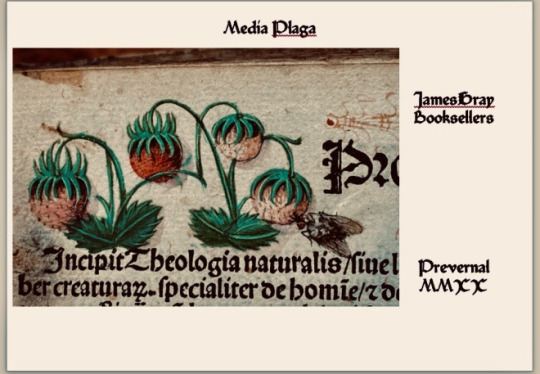
1). 355J Bible Saint Jerome, Gabriello Bruno (active 1480-1514.)
Biblia cum summariis concordantiis : diuisionibus: quattuor repertoriis p[ro]positis: numeriq[ue] foliorum distinctione: terse et fidelit[er] imp[re]ssa. { With table of Gabriel Brunus }
[Lyons]: Jean Pivard, 29 Jan. 1500 & 1. $ 15,000.
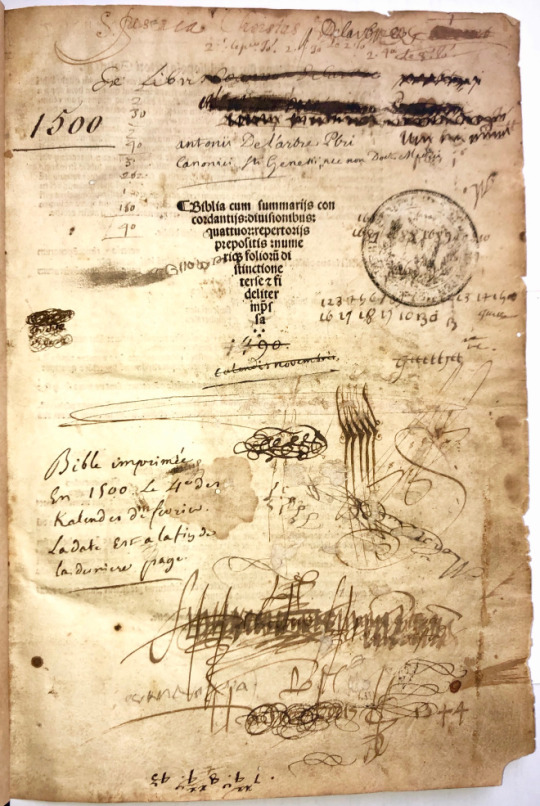
Impresserunt aute[m] solertes viri Franciscus Fradin et Ioha[n]nes Piuard socij impressores. …,]
Folio inches, &8 ç8 , a8 b6, c-z8 A-Z8 Aa8 Bb8; aa-cc8 dd10. Bound in original full calf over wooden boards with 10 brass bosses.
This edition corresponds with the edition printed by Fradin and Pivard in 1497. There are the same tables, summaries, &c.; and the arrangement of the books and the readings are alike. At the end of the subscription we read: “Impressit autem solers ori Johänes Pivard impressor. Deo sint sempiterne gratie.”
Pivard,who was working alone from 7 March 1498 to 1501, Started printing with François Fradin in 1497 (Goff B602) ISTC lists15 titles solely printed by Privard.
Goff B604; HC 3128; GfT 1883, 1884; Pell 2341; CIBN B-426; Arnoult 288; Girard 108; Parguez 213; Polain(B) 4210; IBE 1040; SI 764; Martín Abad B-134; Sallander 2098; Bod-inc B-312; Sheppard 6736; Pr 8670; GW 4281. (Gutenberg-Jahrbuch 1965 p140-3)
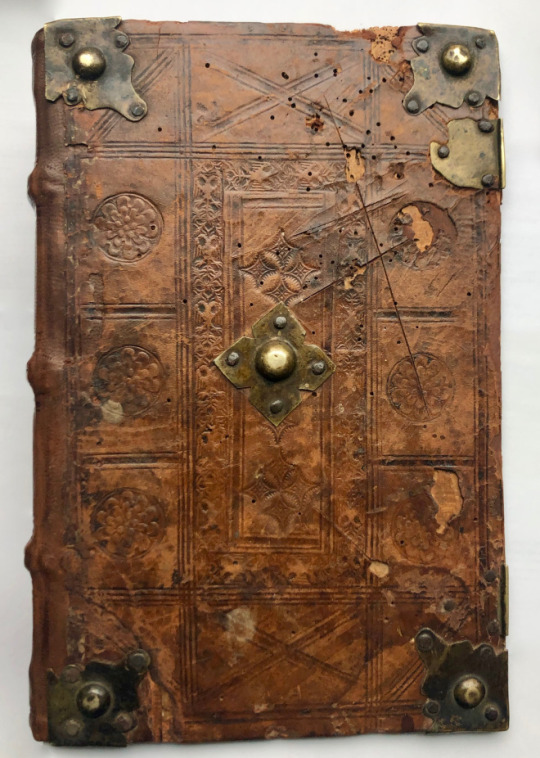
Copinger, Incunabula Biblica, 120; Darlow–Moule 6090; Sheppard 6736.
U.S. copies: Boston Public Library, General Theological Seminary, Jewish Theological Seminary of America, Library of Congress, Rare Book Division, Southern Methodist Univ., Bridwell Library (418 ff)
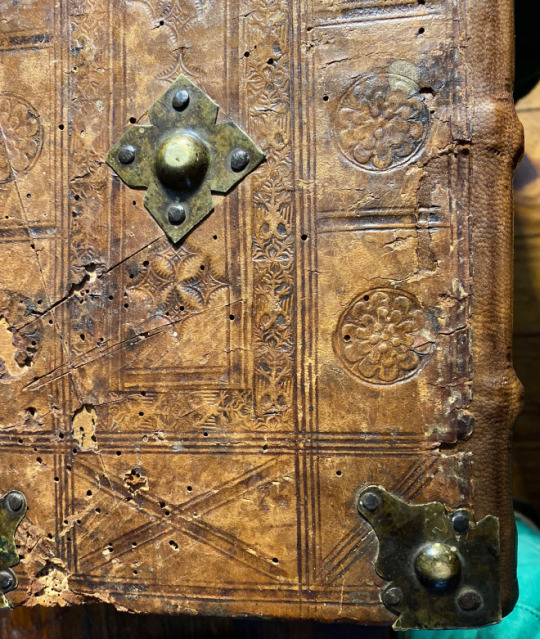
https://data.cerl.org/istc/ib00604000
◊
◊ ◊
◊
2) 353J Alberto da Castello (ca. 1460-1522)
Rosario della gloriosa Vergine Maria : con lle sttattiionii & iindullgenttiie delllle chiiese di Roma perr tutto L’’anno.
In Venetia : Presso la compagnia de gli Vniti,1585. $7,800

Octavo. 6 x 3 3/4. A-Z, Aa-Ii8. A later edition of the first ‘Rosary Book” in Italian.
This book has a wonderful contemporary binding, recently expertly rebacked. It is of red Morocco with gilt center images and borders gilt, with angels. Certainly these books were
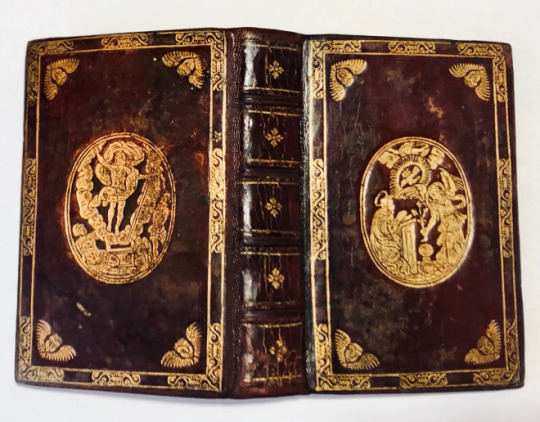
very popular, that said, very few copies have survived. This edition is represented on OCLC by only two copies worldwide. 1 US copy Saint Benedict/Saint John’s University. (SJU Alcuin Arca Artium Rare BookBX2163 .C37 1585). [The authorship of the work and the woodcuts are attributable to the Dominican Friar Alberto da Castello, identified as author or editor at the authorizations of the Venecian Inquisition, given 5 April 1521. (Francesco Pisano)]
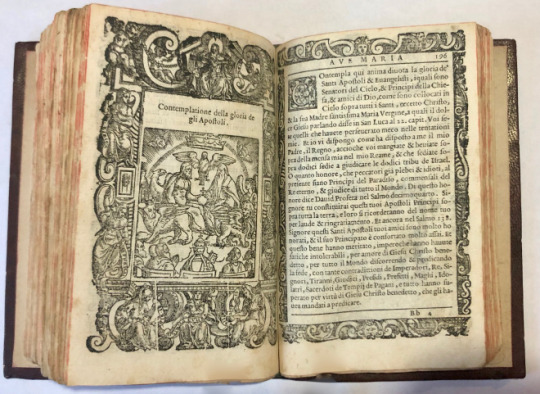
Over 150 woodcuts (including repeats) comprising almost full-page cuts (1 on t.p.) within borders. All had previously appeared in earlier editions. Ornamental and pictorial border pieces on almost every leaf. ( The wood cut on leaf 173v is upside down in the border!) Each wood cuts represent the “Mysteries of the Rosary”
“From the beginning, publications on the Rosary came accompanied by lavish xilographic illustrations. The most striking of these can be found in the edition of the Rosario della gloriosa Vergine Maria by Alberto da Castello from 1521 [Fig. 14.1], which contains a wealth of illustrations. This clearly shows that the Rosary was not just an oral recitation, but was also a contemplative prayer engaging the imagination, a combination later mirrored by the exercises of Ignatius of Loyola.
Alberto da Castello, born in the middle of the fifteenth century in Venice, joined the Dominican order around 1470 and wrote several devotional, liturgical, historical and canonical texts. In the Epistola prohemiale of his Rosario della gloriosa Vergine Maria he says that he wrote the meditations and organised the images ‘acciò che gli idioti che non sanno legere habbino el modo de contemplare gli divini beneficii et de questa contemplatione ne habbino qualche frutto spirituale’.( fol. 6r. ‘So that even the illiterate have a means to contemplate gifts of the divine and to receive spiritual fruits from such contemplation’ (translations are mine).He states that he writes especially for the ‘ignoranti, illetterati, idioti’, and that a good Christian must hold the mysteries of the Rosary deep in his heart. (Literary and Visual Forms of a Domestic Devotion: The Rosary in Renaissance Italy. Erminia Ardissino)

The mysteries of the rosary were introduced by Dominic of Prussia sometime between 1410 and 1439. This gave each decade of the rosary a unique quality. Each mystery leads us to ponder very specific events in the lives of Jesus and Mary and the lessons they hold for our own lives today.
The Rosary has a ritual aspect that individual prayers lack, and it is highly structured. It entails the recitation of 150 Ave Marias, clustered in groups of ten, preceded by a Pater noster and the proposition of a ‘mystery’ upon which to meditate. This number of 150

Ave Marias seems to be designed to correspond to the 150 psalms in the Davidic psalter, which is why the Rosary is also known as the ‘Virgin’s psalter’. It does not consist only of repetitive prayers, however, but also entails meditations. Indeed, the Rosary created by Dominic of Prussia was a kind of meditation on the life of Christ and Mary. In his Liber experientiarum he ‘explicitly claimed to be the first to have composed a series of fifty points on the life of Christ that were to be meditated on while reciting the Ave Marias’.
Sander 6572-6573. See: Essling 2124
)0(
100 full page plates and a volvelle!
3) 382J Jan David. 1545?-1613.
Veridicus christianus: auctore P. Joanne David … Editio altera, auctior.
Antverpiæ ex officina Plantiniana, M. DCVI. $6,500
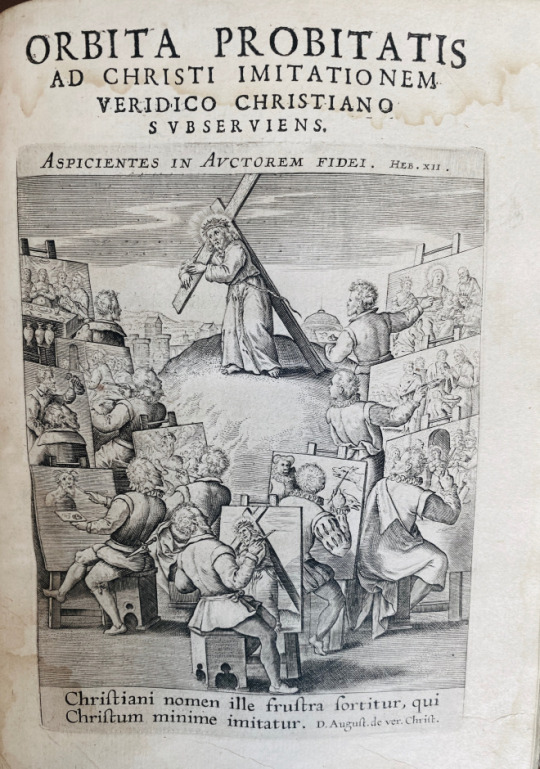
Quarto 8 1/2 X 6 inches ‡4, ‡‡4, A-Z4, a-z4, Aa-Ee4.+ 100 Numbered Plates. Withspecial engraved t.p. with allegorical depiction of Christ carrying the cross, surrounded by ten artists at easels painting scenes from his life (as well as a few questionable profane subjects).
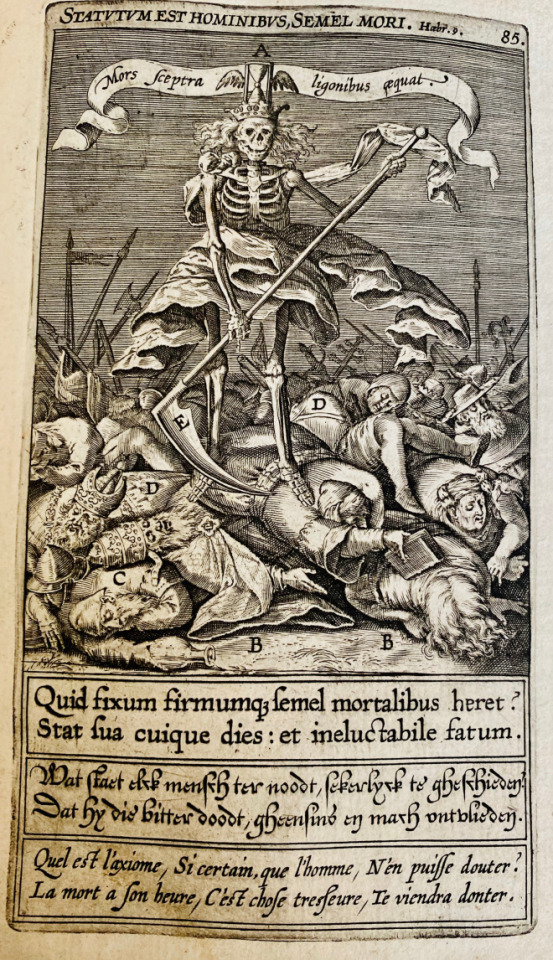
The text is divided into 100 chapters, each with an allegorical engraving incorporating letters keyed to the explanatory text and with marginal references. Each of the 100 numbered plates has a single line of Latin at the head giving the subject, with two-line explanatory verses below the allegorical engraving in Latin (roman letter), Dutch (civilité) and French (italic) First plate (following [2 daggers]4) is added title leaf for the ill., which were also published separately; see Bibliotheca Belgica. The added title reads: Icones ad Veridicvm Christianvm P. Ioannis David e Societate Iesv At the end is Device with compasses and the motto “constantia et labore” on Ee4r . This book is notoriously found defective in one way or another, this copy is perfect and complete.
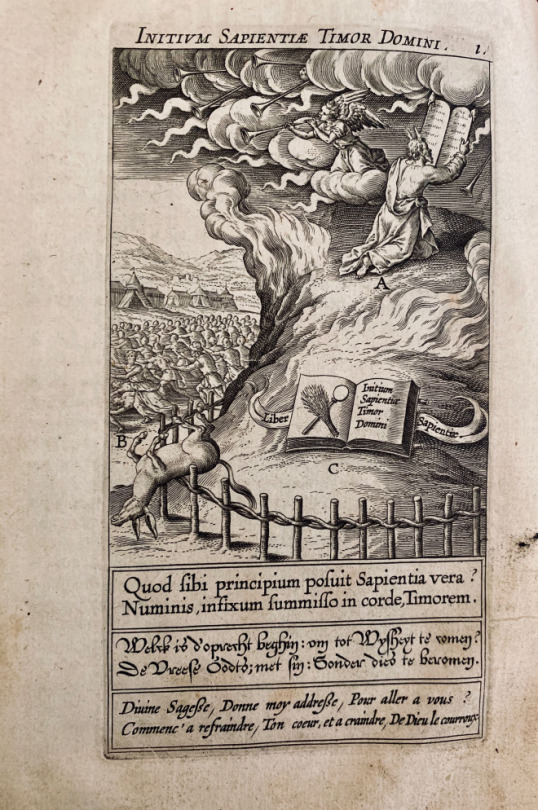
This copy is bound in full contemporary blind stamped calf over wooden boards with two working clasps.
The Veridicus christianus: is followed by the “Orbita probitatis ad Christi imitationem veridico Christano subserviens”: p. 351-374; which preceds a volvelle plate for use in locating specific passages.
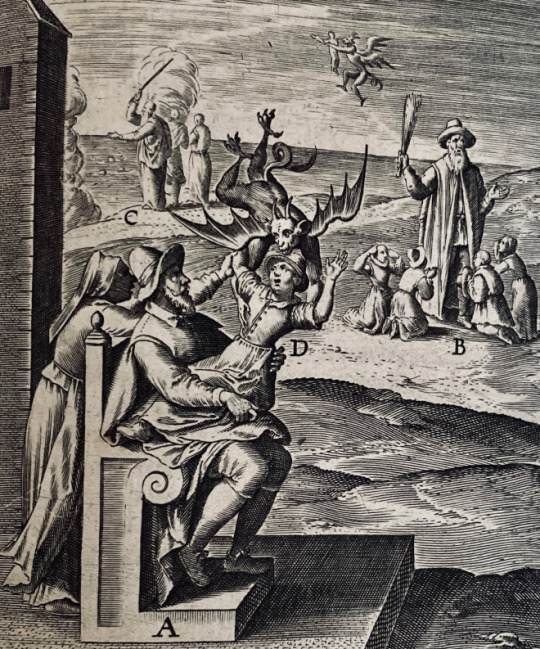
This text contains a series of images with accessible (sometimes to a fault) moral or religious messages. These illustration swarns against opening the senses to temptation lest death and moral decay take up residence in one’s soul.
The Veridicus Christianus emphasizes the Society of Jesus’ investment in thinking in, though, and about visual images that exemplify the supreme mystery of God. Published as a tool of devotion and meditations, it features one hundred chapters that encompass a wide range of topics for reflection. Each chapter incorporates an extensive commentary that interprets the emblematic image David too follows the order in which we apprehend things with our senses, beginning with a visual representation at the head of each chapter. Then comes the explication. The symboli explicatio was considered necessary because cultivated readers would be more susceptible to a reasoned argument than a picture.
Here are images of the vovell. The centers of the engraving and the volvelle (through which a string passes) are reinforced with small paper roundels printed with the monograms of Christ. The numbers are keyed to an “Indiculus orbitae” that follows (Bb1r-Bb2r). There a number, having been selected, is provided with a phrase from various Latin authors (listed on Bb2v), and a reference to one of the hundred sections that comprise the main text. It is suggested in Bibliotheca Belgica that this game may have been intended as a pious alternative to such superstitious books as Thuys der fortvnen.
)0(
4) 312J. Domenico Cavalca. (1270?-1342)
Pungi lingua
[Baptista de Tortis]: Venexia, Adi .viiii. de Octubrio. 1494 $12,000
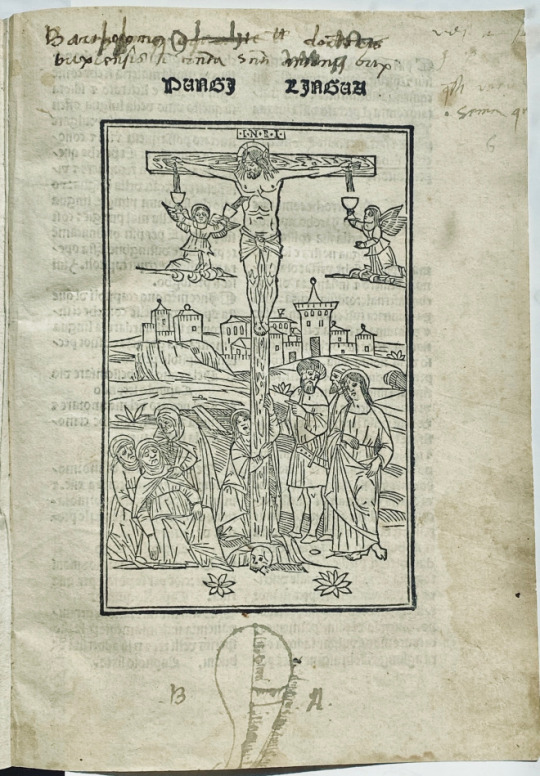
Quarto (200 x 145 mm); [80] pages. a-k8. Large woodcut depicting the crucifixion on the frontispiece, First Venetian edition with the beautiful woodblock published here for the first time. This copy has a beautiful initial “A” in gold, blue, red and green, a colorful coat of arms. This copy is bound in modern carta rustic with a gold title on an orange label

This is a treatise on the dangers of the misuse of the language it was, as you might expect quite popular . Written by the Dominican monk who was a contemporary of Dante and among the first to write in the vernacular, and one of the most successful translators of holy texts.
Aside from Biblical illustrations, the Pungilingua has many exempla drawn from many other sources including some not includes in the Alphabetum narratinum. Most of the stories are told in one to three lines, and many contain commerce with the Devil, one time disguised as a horse. In the prologue Cavalca mentions that he gathered his exempla from many sources “alcune poche cose” . One of the major sources is the Summa Vitiorum by Peraldus. but he also quite a few profane authors , Seneca, Socrates, Cicero, Valerius Maximus. That said, quite often Cavalca attributes the wrong author. Cavalca writes as though he was speaking to the reader in person useing phrases like “Io per me credo” and “Oimé “ Introducing unique stories and words, He refers to someone as double-tongued as a “tecomeco” (bilingue) . He refers to a sleight of hand trick ,called “gherminella” a word which was used later by Boccaccio. This is an important book in Italian literary history, and the Italian vocabulary leaving many contemporary proverbs and descriptions of medieval life. Goff C342; H(Add)C 4776a; R 116; Pell 3448; CIBN C-195; IGI 2637; Essling 750; Sander 1853; Pr 4649; BMC V 328; GW 6413
One copy in Goff. Huntington Library.
Queried Location: New York NY, Manhattan College: sold Christie’s (NY) 1 June 1991 lot 41 (current whereabouts unknown)

***
***
5) 350J. Richard FitzRalph (Ricardus Radulphus Armacanus pseudonym) (circa 1300-1360)
Summa Domini Armacani in Questionibus Armenorum noviter impressa et Correcta a magistro nostro Johanne Sudoris. Cum aliquibus Sermonibus eiusdem de Christi dominio.
Paris: Jehan Petit et ponset le Preux, (Venales habentur in vico divi Jacobi sub Lilio aureo) 1512. [Privilège octroyé à Jean Petit et Poncet Le Preux daté du 12 mars 1511 (1512 n. st.) et prenant effet le 15 juillet 1512.]. $24,000
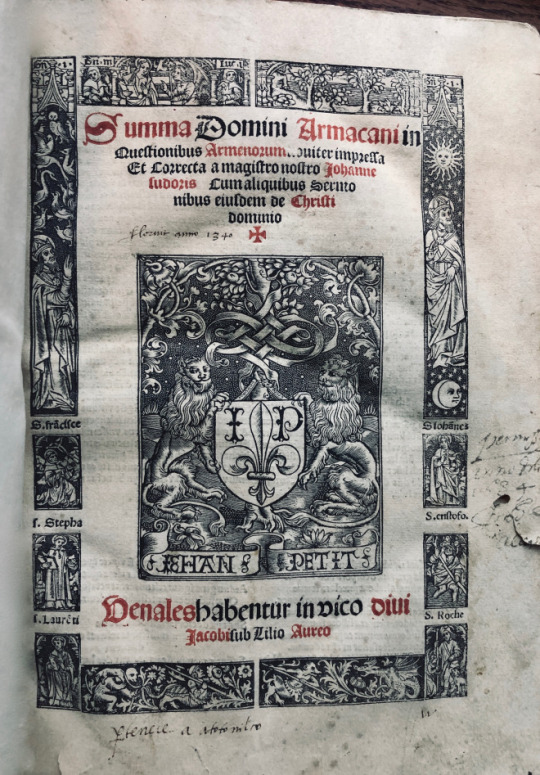
Small Folio 275 x 201 mm. A6 a-z6 &6 A-E6 F4. [6], 177 [i. e., 178] leaves. This copy is bound in a Remboîtage of later limp vellum; contents toned and brittle, lightly damp wrinkled with marginal damp staining at beginning and end, contemporary inscriptions on title and scattered underscoring and marginalia, wormhole through blank outer margin of approximately the first 30 leaves, paper crack in o1 not affecting text, last leaf reinforced in outer margin on verso. A Mexican Augustinian branded ownership mark on bottom edge. This is the only printed edition of the Summa in Questionibus Armenorum which is an examination of alleged Armenian doctrinal errors, the chief dogmatic work by an Irish theologian and prelate involved in negotiations between the papal court at Avignon and Armenian representatives over the reconciliation of the Roman and Armenian churches. FitzRalph, whose Defensorium curatorum was first published circa 1483, was one of the earliest Irish authors to appear in print. Renouard-Moreau II, 314; Shaaber M119; not in RBH or ABPC. Moreau, B. Inventaire 1512- 314; Index des livres interdits, t. IX, p. 86 (n° 50/499; Page de titre en rouge et noir dans un encadrement de plaques gravées sur métal, marque de Jean Petit (Renouard, 890) Adams, F-550
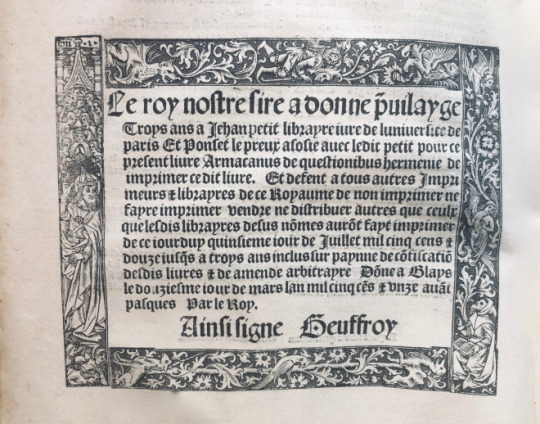
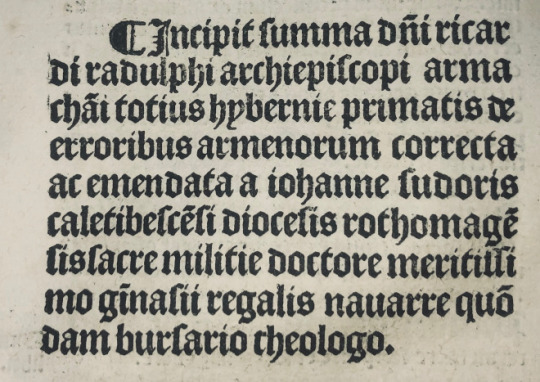
><><><><><
6) 358J Jacobus de Gruytrode 1400-1475
Speculum animae peccatricis
[Memmingen : Albrecht Kunne, about 1490] $6,500

Quarto , [28] ff, 33 lines, the first initial (5 lines) is painted in white and blue on a golden background, upper and left margin richly decorated in red, purple, blue and gold and with two red beasts. 19th c. binding in half leather, title gilt on spine, all edges gilt. Sometimes falsely attributed to Dionysius Carthusiensis, the Speculum is now attributed either to Jacobus de Gruytrode (cf. Bloomfield) or to Jacobus de Clusa (cf. L. Meier, Die Werke des Erfurter Karthäusers Jakob von Jüterbog, Münster, 1955).

Speculum animae peccatricis is a work of spiritual edification which consists of seven sections: on human misery, sin (especially lechery), penance, rejection of the world, the vanity of human wishes, death and hell and heaven.
Firste of the filthenes and miserie of man. Below are the chapter in English
Secounde of the synnes ingeneralle and of their effectis.
Thyrde howe they ought hastely with all diligence to do penaunce.
Fourth howe they ought to fle the world.
Fyfthe of the false Riches and vayne ho∣noures of the worlde.
Sixt howe they ought to drede deth.
Seuenth of the Ioyes of paradyse and of the paynes of hell.
There is no modern critical edition of the text. Among the devotional books by the Flemish mystical writers of the fourteenth and fifteenth centuries, none was more popular on the Continent and in England during the early Renaissance than the Speculum aureum animae peccatricis or The mirroure of golde for the synfull soule, which Lady Margaret Beaufort translated into English. Since the sixteenth century, bibliographers have listed the Speculum as the work of the Carthusian monk Jacobus de Gruytroede, prior of the Liége Charterhouse from 1440 to 1475, yet the English version is always attributed to his friend Denis de Leuwis or Dionysius the Carthusian, as he is better known. The question of authorship may be satisfactorily settled as the result of recent research by an English Carthusian scholar in the library of the Certosa in Farneta. He noted that the editors of Dionysius’s Opera omnia (Tournai, 1913) explain how the error in authorship began. In volume xlii they point out that, owing to the Carthusian tradition of anonymity during a monk’s lifetime, the Speculum was printed anonymously until 1495, in which year the Nuremberg printer Paul Wagner first issued it as a work by Dionysius. He found the manuscript of the Speculum in the library at Ruremond, where Dionysius was prior until his death in 1471, and supposed it was written by him, as were the other works he intended to print. The two priors were close friends, and dedicated several of their works to each other. Nugent E.M. (1969) Jacobus de Gruytroede. In: Nugent E.M. (eds) The Thought & Culture of the English Renaissance. Springer, Dordrecht
Goff S644; HC 14899*; Pell 4313; CIBN S-333; IGI 5001; IDL 2532; Schlechter-Ries 1003; Voull(B) 1617,5; Schmitt I 1614,2; Hubay(Augsburg) 1141; Hubay(Eichstätt) 538; Sack(Freiburg) 1951; Walsh 988; Bod-inc S-258; Sheppard 2032; Pr 2804; BMC II 608; BSB-Ink I-23; GW M10734
U.S. copies;Harvard ,Emory, Columbia ,Huntington Library
Southern Methodist Univ, Univ. of Illinois at Urbana-Champaign Library
)0(
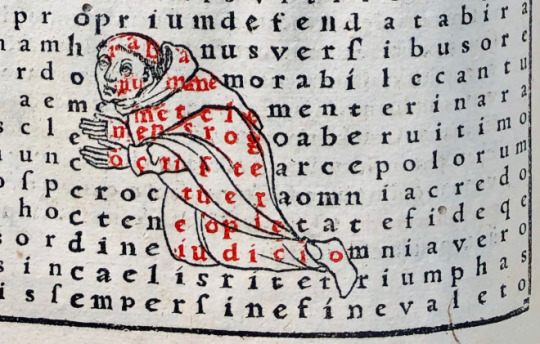
Nam digiti scripto laetantur, lumina visu Mens volvet sensu mystica verba Dei
“The fingers rejoice in writing, the eyes in seeing, and the mind at examining the meaning of God’s mystical words.”
The first printed facsimile of a manuscript.
7) 351J. Hrabanus Maurus. 784-856?
Magnencij Rabani Mauri De Laudib[us] sancte Crucis opus. erudicione versu prosaq[ue] mirificum.
Phorçheim. [Pforzheim] : In ædibus Thom[ae] Anshelmi., 1503. $10,700
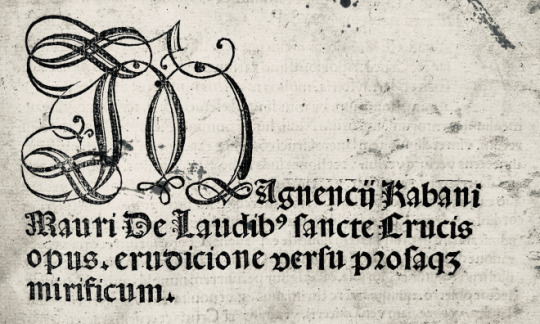
Folio Aa6, Bb4, a-k6, A-B6, C4 (last leaf blank).
THIS COPY LACKING [four leaves] A5 & 6, Bb1 and a1. [two woodcuts of Alcuin interceding on behalf of Rabanus before Pope Gregory iv, and of Rabanus presenting his poems to the Pope; and two figured dedicatory poems the first to Louis the Pious the next christ crucified] It is bound in a full vellum modern binding. First Edition (for a second edition see below) Types 3:109R, 4:180G; 40 lines of transcribed verse + headline, 40 lines of commentary + headline, red and black printing throughout, calligraphic woodcut initial (Proctor, fig. 24) M on title page, woodcut initials printed in red, and a figured prefatory poem, 28 carmina figurata, the first entirely xylographic, the remaining poems combining printed and xylographic letters with the versus intexti printed in red (except fig. xvi), enclosed by either woodcut figures (of the emperor, Christ, the Evangelists, Cherubim, etc.) printed in black or by Christian symbols and characters, most defined by metal rules in red.
This is a remarkable typographical achievement, probably the earliest attempt to reproduce a medieval manuscript. The greater portion of the work comprises a preface in verse and twenty-eight poems. “Hrabanus Maurus, the abbot of Fulda, wrote in the midst of the ‘new monasticism,’ a period associated with a revival of literacy and learning. In religious and secular spheres. This ‘script culture,’ as Rosamond McKitterick has it, used the written word not only as a mode of communication but as ‘a resource, a guide, a key, and an inspiration,’ especially in the devotional practice of Christianity.
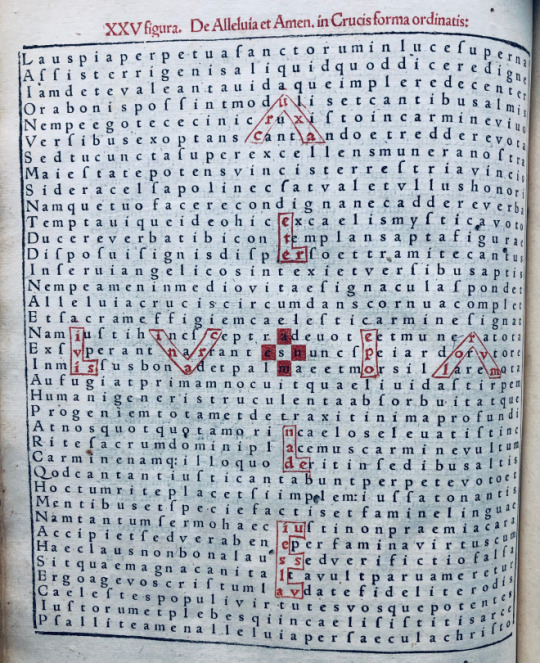
Each of the twenty-eight picture poems that form In honorem sanctae crucis explores a different theme relating to the Cross through a complex interplay of word and image. The poems each have an equal number of letters per line, written continuously like a grid. By following the letters in the usual direction for a Latin text—from left to right, top to bottom—each grid reads as one long poem. But within each grid, certain letters are also marked out with colour and drawings to form pictures. The letters that make up these pictures read as separate short poems embedded within the larger poem. As such, each page of In honorem sanctae crucis presents not just a puzzle of words and pictures, full of hidden and interrelated messages for the reader to decode bout a meditation exercise.
“Hrabanus created the various shapes and figures by highlighting individual letters in underlying poens in colour (in the printed editions red), and theses individual letters together make up meaningful text , ranging from simple declarations to very elaborate ones. For example, Carmina 2 contains a simple cross inside a square (Hrabanus calls it a “tetragonum”)whose sides form a border for the poem as a whole. The textfrom the underlying poen that makes up the figure consists of six hexameters, each one an address to the cross beginning with the words ‘O crux…’ When we follow Hrabanus’s instruction in the accompanying prose text for reading these hexameters, we find the following: even though the verse that forms the top of the square is also the opening of the underlying poem, he insists that we begin reading with the stem of the cross, from top to bottom.” (Schipper)
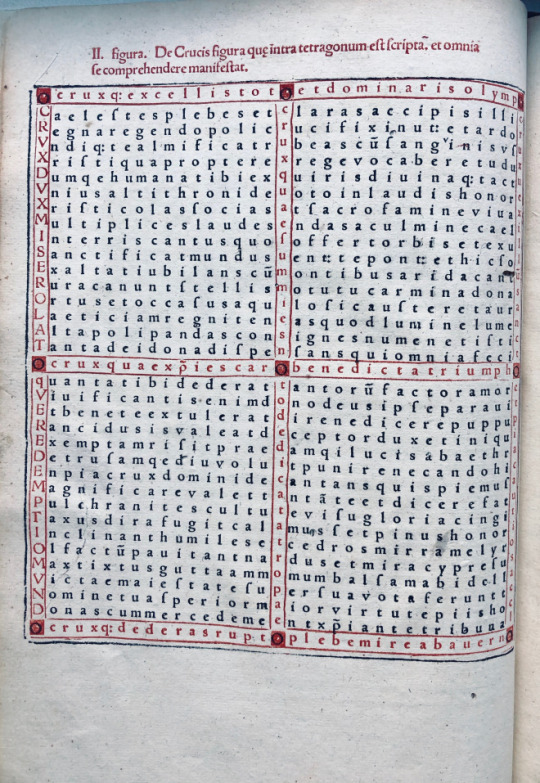
Sunt quoque uersus duo in ipsa ccruceconscripti, quorum prior est: O CRVX QVAE SVMMI ES NOTO DEDICATA TROPAEO
a summo in ima descendens. Alter uero: O CRVX QVAE CHRISTI ES CARO BENEDICTA TRIVMPHO a dextra in sinistram crucis tendens ‡
‡“there are also two verses inscribed in the cross, the first of which is : “ O cross , thou who art at the height of fame, a dedicated moment” ‘running from the top down. And a second’ “O Cross thou who through the body of Christ art the blessed triumph” ‘running from the right to the left.’
Further more Hrabanus flips left and right the texts point of view alternates , Hrabanus tells us the cross is looking out at the reader, not the other way around. “ Only after we have read the hexameters in the cross are we free to read the verses in the four sides of the tetragon, and even then Hrabanus constrains the order in which they are to be read: first the top, then the bottom, then the right side then finally the left side.”
More complex figures present further challenges in reading. The figure in Carmen 25, for example, consists of eight letters of the word ‘ALLEVIA’ arranged around a small cross. It does not take much effort to notice that we need to start with the A, read down to the E, continue on the left, and end on the right of the figure; and that each time we trace out those letters we make the sign of the cross. It becomes more difficult when we also try and read the text that is enclosed in the figures.

The letters of ALLEVIA are made of the following letters from the underlying poem. A crux[a L eter L na[de E i]es[lave[v L ivis V in]arc I e]po A lorvm
CRUX AETERNA DEI ES LAVS VIVIS IN ARCE POLORUM
‡ Eternal cross, thou art the praise of God, thou livest in the arc of the skies.
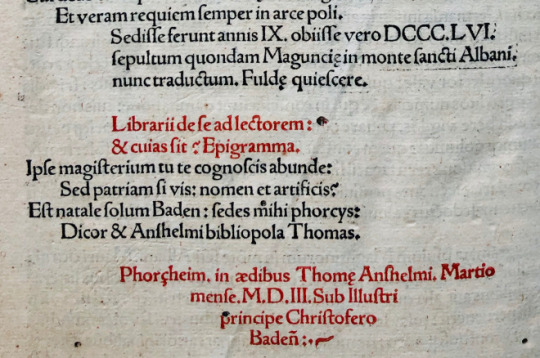
Peter Godman, Poetry of the Carolingian Renaissance (Norman: University of Oklahoma Press, 1985), 249. A. G. Rigg and G. R. Wieland, ‘A Canterbury Classbook of the Mid-eleventh Century Anglo-Saxon England 4 (1974), 113-30.
William Schipper, ‘Hrabanus Maurus in Anglo-Saxon England: In Honorem Sanctae Crucis’, in Early Medieval Studies in Memory of Patrick Wormald, ed. Stephen Baxter, Catherine Karkov, Janet L. Nelson, David Pelteret (Farnham, Surrey; Burlington, Vt.: Ashgate 2009), 283-98.
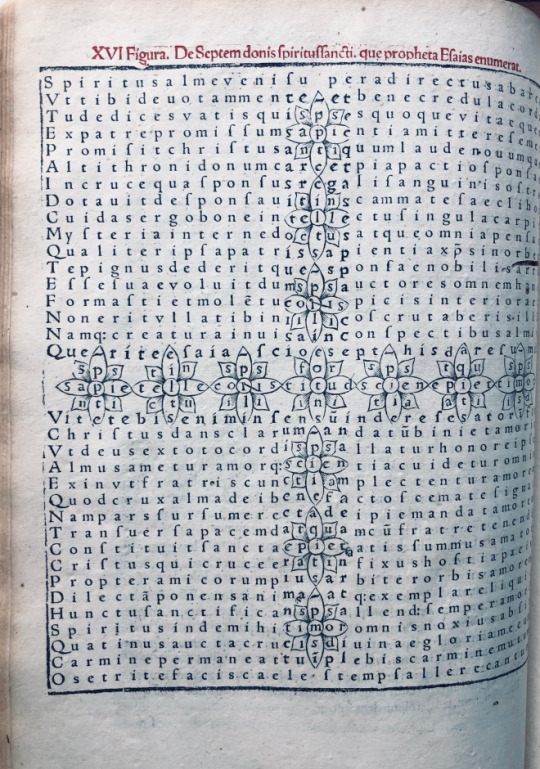
Proctor, R. Index to the early printed books in the British Museum,; 11747; Adams, H.M. Catalogue of books printed on the continent of Europe, 1501-1600, in Cambridge libraries,; R3; Catalogue of a collection of early German books in the library of C. Fairfax Murray,; 350; Panzer, G.W.F. Annales typographici,; VIII 227, 2; Pollard, A.W. Catalogue of books mostly from the presses of the first printers … collected by Rush C. Hawkins,; 189 Panzer, VIII, 227, no. 2. Proctor 11747. Fairfax Murray 350./ Last leaf blank./ Edited by Jakob Wimpheling.–cf. title page verso./ Illustrations: 2 woodcuts of the author presenting his book to the pope, and many woodcut figures (Christ, cherubs, crosses, symbols, etc.) printed on 28 pages of text. Some of the text within and near the outline figures is xylographic, the rest printed. The letters within the outlines are printed in red and may be read separately in a different sense. Printed in red and black, initials (except on t.p.) in red./ With label of Sinclair Hamilton. Peter Godman, Poetry of the Carolingian Renaissance (Norman: University of Oklahoma Press, 1985), 249. A. G. Rigg and G. R. Wieland, ‘A Canterbury Classbook of the Mid-eleventh Century Anglo-Saxon England 4 (1974), 113-30. William Schipper, ‘Hrabanus Maurus in Anglo-Saxon England: In Honorem Sanctae Crucis’, in Early Medieval Studies in Memory of Patrick Wormald, ed. Stephen Baxter, Catherine Karkov, Janet L. Nelson, David Pelteret (Farnham, Surrey; Burlington, Vt.: Ashgate,
^)^)^)^(^(^(^
The second edition One-Hundred and three years later.
8). 354J Hrabanus Maurus. 784-856?
Magnencij Rabani Mauri De Laudib[us] sancte Crucis opus. erudicione versu prosaq[ue] mirificum. Cum antiqviate avctoris <annis abhinc prope octingentis abbatis primum fuldensis, archiepiscopi postea moguntini. tum noitate scriptionis memorabile. Qvo figvris sive imaginibvs XXVIII. multi fedei christianae mysteria, multi mystici numeri; angelorum, virtutum, VII. donorum Spiritus Sancti, VIII. Beatitudinum, IV. elementorum, IV. temorum anni, VI euangelistarum & agni, mensium, ventorum, V librorum Moysis, nominis Adam, alleluia, & amen, aliarumq[ue] rerum vis & dignitas in formam crvis reedacta, subtiliter et ingeniose explicantur.
Augustæ Vindelicorvm e typographeo Praetoriano. , 1605. $9,000

Folio Aa6, Bb4, a-k6, a6, B4, c4. (complete). Printers mark on title page, woodcut initials printed in red, two woodcuts of Alcuin interceding on behalf of Rabanus before Pope Gregory iv, and of Rabanus presenting his poems to the Pope; a figured dedicatory poem to Louis the Pious and a figured prefatory poem, 28 carmina figurata, the first entirely xylographic, the remaining poems combining printed and xylographic letters with the versus intexti printed in red (except fig. xvi), enclosed by either woodcut figures (of the emperor, Christ, the Evangelists, Cherubim, etc.) printed in black or by Christian symbols and characters, most defined by metal rules in red. Bound in contemporary deer skin.
This aside from the prologue this edition is a re-set reproduction of the first printed edition (see above)
#######+++++#######
9) 383J Johannes de Anania
Commentaria super prima et secunda parte libri quinti Decretalium. Add: Repertorium
Bologna : Henricus de Colonia, 7 Dec. 1479, 5 Jan. 1480. $17,000
Large folio 422 x 285mm Pars III (bound first) a8,b6,c10,d6,e8,f4,g8.(lacking a1Blank) Pars I (bound second) a10,b8,i8,k6,l8,m8,n6,o6,p8,q8,r10s 10. Pars II (bound third) A8,-F8,G6,H8,-L8,M6,N8,O8P6,Q8,R8,S6,T8,U10,X8-Z8, &8, ¶8,€8,¡8. In three parts, dated: 7 Dec. 1479 (Commentaria, partes I-II); 5 Jan. 1480 (Repertorium)
No copy of parts II & III in the US. The margin of a2 of the Repertorium cut off with no text loss (see image) This is a very very wide margined copy, with strong and crisp paper. The first leaf is stroked in red and blue. Throughout the rest of the books capital spaces are left blank. This copy is bound in 19th century vellum.
ANANI’A, JOHANNES DE : his family name, Anagni. implies that he was of the family of the Catani, and that his father’s name was Leonardo. He taught canon law in Bologna, and had the reputation of a conscientious man. He studied under Floriano di San Pietro. Alexander Tartagni and Andreas Barbati were his scholars; the former became his step-son, and the latter inherited his library. According to Orlandi, Anania was sent ambassador from the city of Bologna to Pope Martin V. in 1425, and he was also employed to conduct negotiations with other princes. Johannes de Anania at the time of his death, in 1455 or 1458, was archdeacon at Bologna. Spangenberg enumerates four of his works, three of which were published at Lyon between 1521 and 1555 : — 1. A Commentary on the fifth book of the Decretals, published in folio at Lyon in 1521, and reprinted there in 1553. 2. Consilia, discovered and edited by Ludovico Bolognini, in folio, at Lyon in 1555, reprinted at Venice in 1570. 3. “De Revocatione Feudi alienati,” in octavo, at Lyon, in 1546, reprinted at Basle in 1564. 4. A Collection of the Decisions of the Roman Rota, at Venice, in folio, in 1496. Mazzuchelli mentions a treatise on the law as to salaries, “Allegatio de Salario et Stipendio ac de Obligatione et Promissione Domini,” which is preserved in MS. at Bologna in the library of the Collegio di Spagna. In addition to these Lipenius ascribes to Johannes de Anania a legal tract on church patronage, “De Jure Patronatus Ecclesiastico,” published at Amsterdam in 1640; and a collection of cases (” Quaestiones”) at Cologne in 1570. To the folio edition of Baldus, “In Usus Feudorum Commentaria,”

published at Lyon in 1550, there is appended a thesis on the law regarding the alienation of fiefs, maintained by Johannes de Anania at a public disputation in Bologna. The date is not given, but he is styled “Doctor et Canonicus,” and his opponent is said to have been Secundinus de Natis; and the publisher intimates that the MS. had been preserved in the library of Johannes Nevizanus at Asti. No. 446. of the Arundel MSS. in the library of the British Museum contains a treatise “De Usuris” by Johannes de Anania. The volume is of a large folio form, and the ” De Usuris,” written in a small character with numerous contractions, occupies the folios 93. to 164. inclusive, each folio containing four columns. These treatises are the only compositions of the author we have seen, and they leave a favourable impression of his skill in selecting authorities to support and elucidate his positions, and of his talent for lucid arrangement. (Mazzuchelli, Scrittori d’ Italia; Spangenberg, in Ersch und Gruber’s Allgemeine Encyclopadie; Alidosi, Appendice alli Dottori Bolognesi de Legge Canonica e Civile; Orlandi, Notizie degli Scrittori Bolognesi; Baldus Perusinus, in Usus Feudorum Commentaria doctissima, quibus accesserunt Andr. Siculi Adnotationes una cum Joan. de Anania eleganti Disputatione in tres secta Quastiones, Lugduni, 1550, fol.; Arundel MSS. in the British Museum, No. 446.) W. W
Not in Goff: ISTC ij00250150; H 938*; Torchet 521; IGI 5245; IBE 3188; Kotvan 702; Sajó-Soltész 1881; Martín Abad J-44; Voull(B) 2735,20; Walsh 3188; BSB-Ink I-365; GW M12841
Holdings: United States Harvard University, Law School Library (I) only.

)0(
)0(
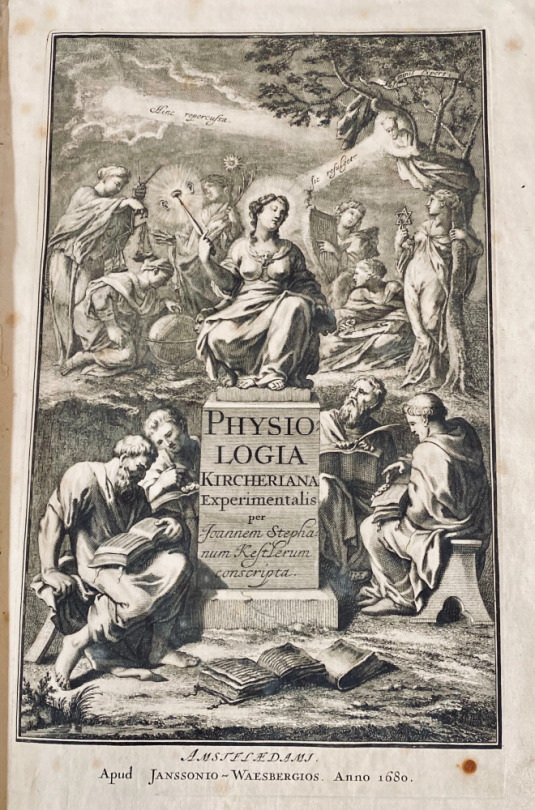
10) 381J Athanasius Kircher 1602-1680
Physiologia Kircheriana Experimentalis, Qua Summa Argumentorum Multitudine & Varietate Naturalium rerum scientia per experimenta Physica, Mathematica, Medica, Chymica, Musica, Magnetica, Mechanica comprobatur atque stabilitur. Quam Ex Vastis Operibus Adm. Revdi. P. Athanasii Kircheri extraxit, & in hunc ordinem per classes redegit Romæ, Anno M. DC. LXXV. Joannes Stephanus Kestlerus Alsata, Authoris discipulus, & in re litterariâ assecla, & coadjutor.
Amsterdam: Ex Officinâ Janssonio-Waesbergiana. Anno 1680 $9,500
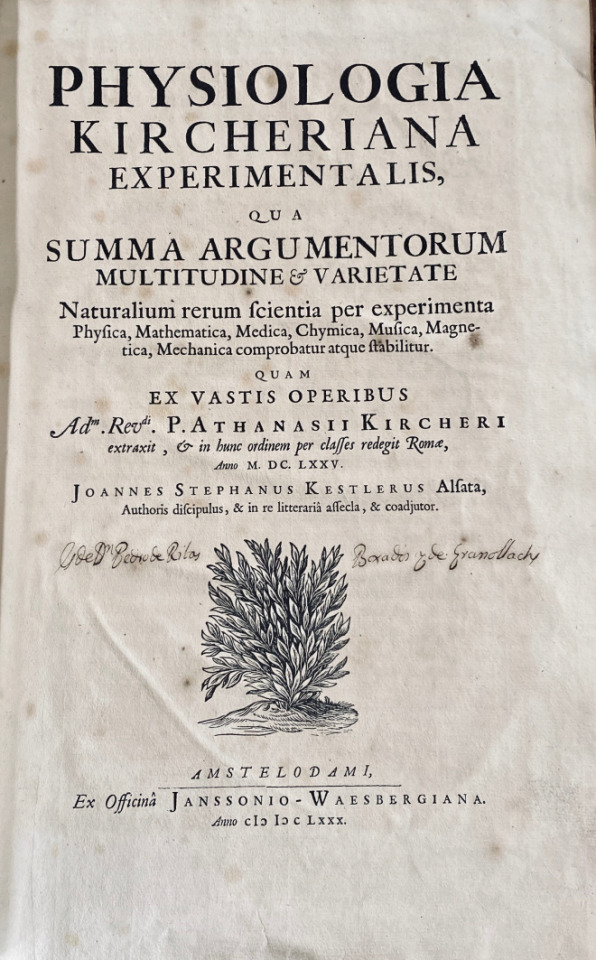
Folio. 15 x 9 3/4 inches. *4, A-Z4, Aa-Ii4. First edition.mmThis copy is quite clean and crisp throughout, never having been washed or pressed. There is some occasional spotting and browning. but none is too extensive. The binding is twentyth century full vellum with title on spine. an impressive and large copy!
“Thus in the must varied branches of science Kircher played the role of pioneer. Even medicine received his attention, as is shown for example by his treatise, ‘Scrutinium phyisco-medicum contagiosæ luis, quæ pestis dicitur’ (Rome, 1663). His scientific activities brought him into scientific correspondence with scholars laboring in the most different fields, as the numerous volumes of his extant letters show. It is to his inventive mind that we owe one of the earliest of our counting machines: the speaking-tube and æolian harp were perfected by him. He was also the inventor of the magic lantern which has since been brought to such perfection and is and is today almost indispensable. [All of these devices are illustrated in the present work, compiled in the year of the author’s death by Kircher and his student Johann Stephan Kestler, including three large and striking engravings of magic lanterns.]” May I ask the reader to take the following quote with a measure of indulgence for its closed minded author [circa 1913] with the hope that modern folk of the last decade of the second millennium have a bit more tolerance for the many sciences that we have yet to master. “That the most varied judgments should be formed and expressed on a man of such encyclopædic knowledge was only to be expected. He tried to find a grain of truth even in the false sciences of alchemy, astrology, and horoscopy, which were still in his time much in vogue, nor is it surprising that in the province of astronomy he did not at this early date defend the Copernican System.” (the above two quoted taken from the Catholic Encyclopedia, vol. viii, page 662) Kircher was an accomplished and versatile scholar who applied his intellectual abilities to a myriad of scientific problems. This work is a fascinating compendium of scientific experiments and principles which documents the accomplishments of early modern thinkers of the west.
^)^)^)^(^(^(^
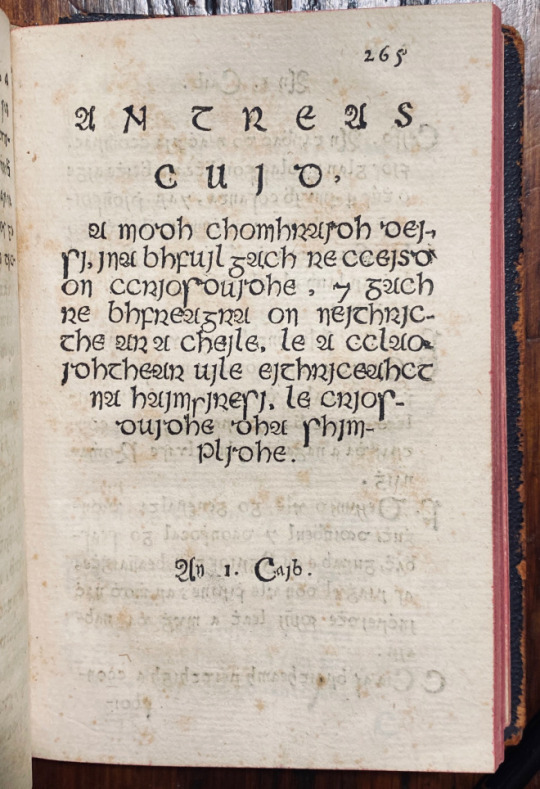
11) 380J Francis Molloy. fl 1660
Lucerna fidelium, seu, Fasciculus decerptus ab authoribus magis versatis, qui tractarunt de doctrina Christiana : divisus in tres partes.
Romæ : Typis Sacræ Congreg. de Propaganda Fide, M DC LXXVI [1676] $4,500 Octavo 6 X 4 inches : A-2B8 2C2. complet, signature ) is mis-signed . This copy is bound in early 20th century sheep.
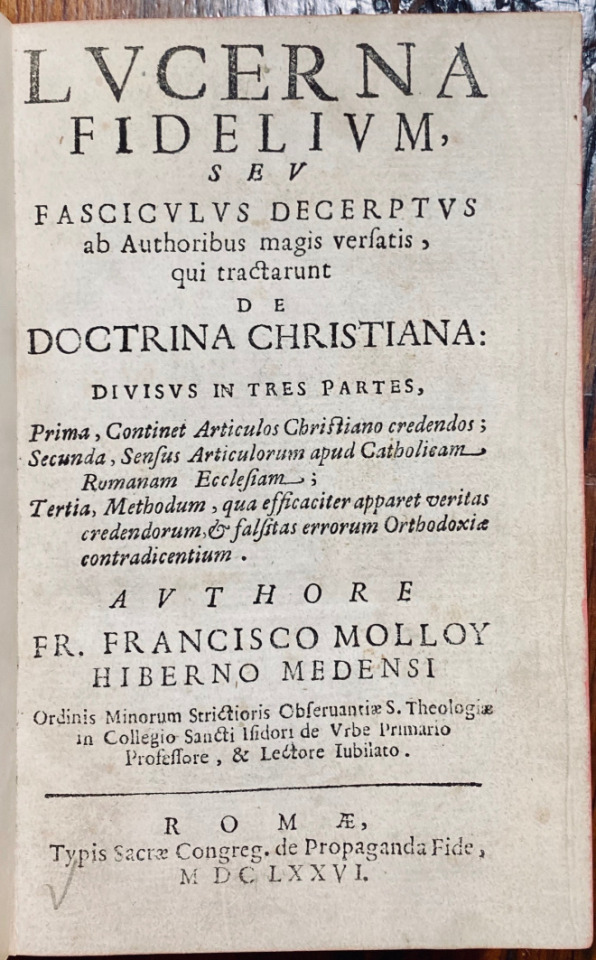
MOLLOY or O’MAOLMHUAIDH, FRANCIS (Jl. 1660), theologian and grammarian, was a native of the county of Meath, Ireland. The family of which he was a member had extensive landed possessions in the district known as O’Molloys’ Country, and some of them engaged actively in the Irish movements from 1641 to 1652.
Francis Molloy entered the order of St. Francis, became a priest, was appointed professor of theology at St. Isidore’s College, Rome, and acted as agent for the Irish catholics at the papal court in the reign of Charles II. His first published work was entitled ‘Tractatus de Incarnatione ad mentern Scoti,’ 1645. This was followed in 1658 by ‘ Jubilatia genethliaca
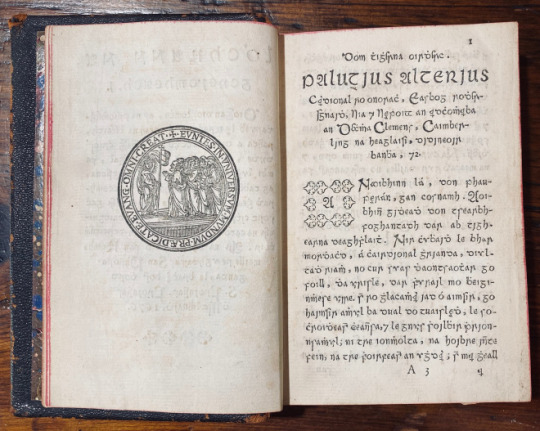
in honorem Prosperi Balthasaris Philippi, Hispani principis, carmine,’ and by a Latin treatise on theology in 1666.
A catechism of the doctrines of the catholic church in the Irish language was published by Molloy in 1676 with the title: ‘Lucerna tidelium, seu fasciculus decerptus ab authoribus magis versatis qui tractarunt de doctrina Christiana.’ It was printed at Rome at the press of the Congregation ‘de propaganda fide,’ ( This book is the first book they printed in Irish Type) from which, in 1677, issued another book by Molloy, entitled ‘Grammatica Latino-Hibernica,’ 12mo, the first printed grammar of the Irish language. Edward Lhuyd [q. v.], in his’ Archaeologia Britannica,’published at Oxford in 1707, mentioned that he had seen a manuscript grammar of the Irish language copied at Louvain in 1669 which partially corresponded with that of Molloy. He added that Molloy’s grammar, although the most complete exta’nt in his time, was deficient as to syntax and the variation of the nouns and verbs. The date of Molloy’s death has not been ascertained. In 1626 Propaganda Fide had installed a printing press for the foreign missions and not much later another one was brought to Louvain where books and catechisms were printed for both the local college and the Irish mission.* The problem with the Propaganda printing press was that only books in Latin and Italian were allowed to be printed so it took until 1674 when Francis Molloy asked for permission to print a catechism there in Irish with the explanation “che altra malamente capisce e vacilla assai per mancanza d’intruttore e d’intruttion sana.”**.
[“Irish priests at Rome had a new Irish type cut about 1675 … [this was] their first book.”- -H. Reichner, Catalogue 34, Jan. 1968]
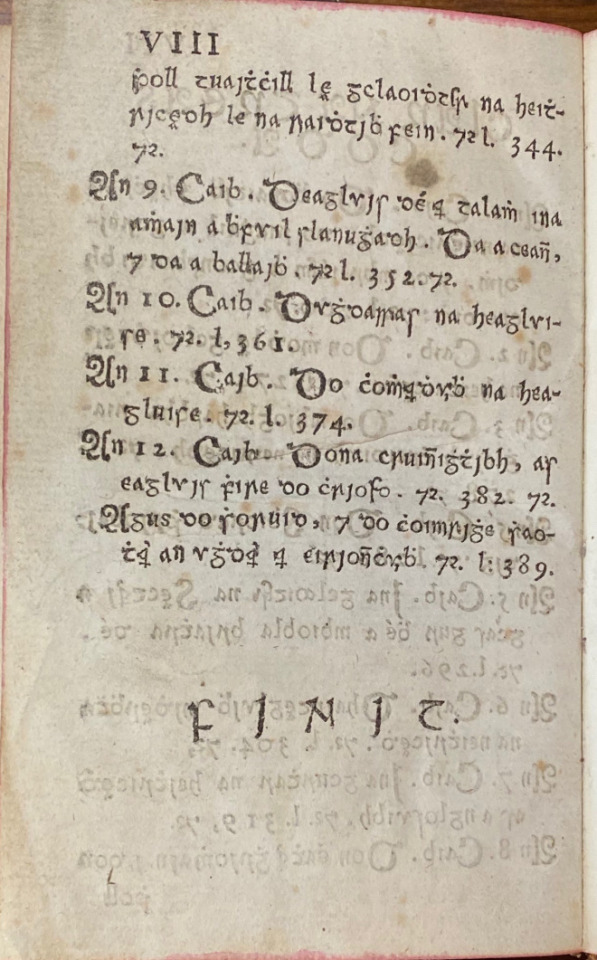
Wing O291C, English short title catalogue,; R41480; Clancy, T.H. English Catholic books, 1641-1700 (rev. ed.),; entry 743; Catalogue of seventeenth century Italian books in the British Library,; page 628 *& ** ;Egan, Bartholomew (ed.): Notes on Propaganda Fide Printing Press and Correspondence concerning Francis Molloy O.F.M., in: Collectanea Hibernica, No. 2 (1959), pp. 115-124.
)0(
)0()0(
With a reference to the invention of printing on the verso of Folio 64.
12) 359J Werner Rolewinck 1425-1502
Fasciculus temporu[m] omnes antiquo[rum] chronicas strictim complectens felici numine incipit. Prologus.
Venice : Erhard Ratdolt, 8 Sept. 1485 $16,000
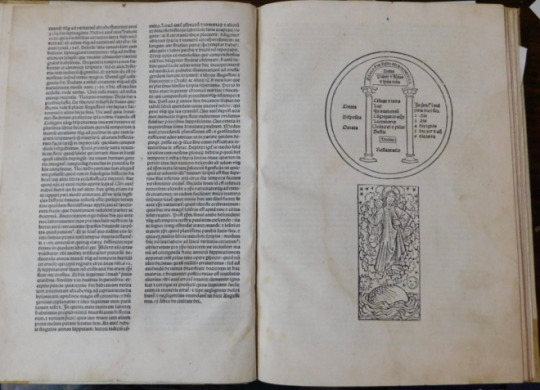
Folio (275 x 195 mm). [A]8 [a-g]8 [h]10 75 leaves without signatures or page numbers (9 leaves, 1-66 foliated ), 3 columns in table, 59 lines and foliation, gothic letter, 2 large ornamental initials, 59 woodcuts, one full-page, woodcut diagram. Fifth and last Venetian edition, and fourth Ratdolt edition being the most complete edition of Rolewinck s chronological history of the world. The chronology follows a double time-line, measuring time from both the Creation and the birth of Christ to the death of the Ottoman Sultan Mehmed II commonly known as Mehmed the Conqueror in the year 1481, demanding a
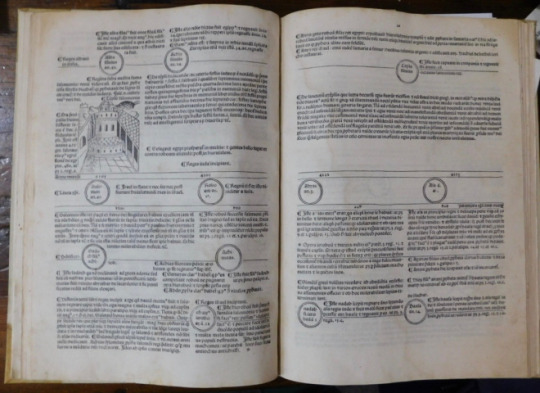
remarkably complex typographical layout. The Fasciculus Temporum (Little bundles of time) was the first book printed on history of the world, it is also one of the earliest and greatest of illustrated incunabula. The illustrations show Noah s Ark, the tower of Babel and contain many town views including Jerusalem, Syracuse, Rome and the Doge s Palace in Venice.
Rolewinck (1425-1502) was a Carthusian monk and prolific author. This book was both the most popular of his numerous writings and the most popular concise world chronicle of its time, being printed 32 times in the 15th century, including translations into French, German and Dutch . Rolewinck’s Fasciculus Temporum was an enormously popular world chronicle, appearing in over 30 incunabular editions in Latin, German, French, and Dutch. A very handsome and typographically-sophisticated volume, with varying columns, circular devices with inset type, and woodcuts throughout.
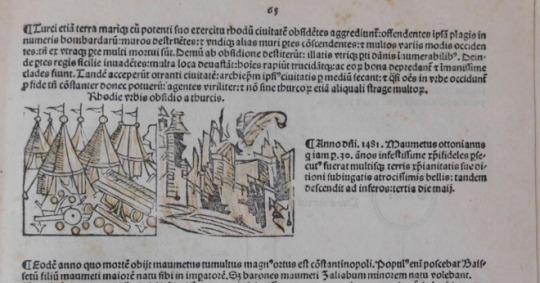
This work aspires to trace the history of the world from the beginning of time until the year of pulication. The thirty-three woodcuts are crisp and rather charming, and, like those in many fifteenth- and sixteenth-century chronicles, are occasionally reused to illustrate different events and locations. The work is fascinating for the comprehensiveness of its content as well as the beauty of its execution. Of particular interest is a reference to the invention of printing (in 1454) on the verso of Folio 64.
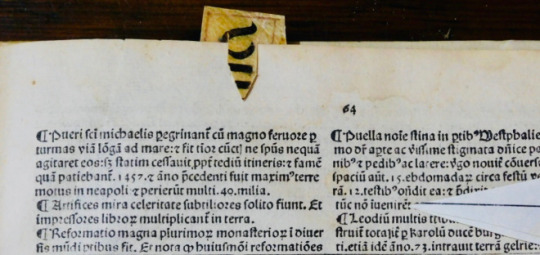
Goff R271; GW M38738; ; BMC V 290; H 6935*; Redgr 52; Essling 280; Sander 6530; Schr 5116C; Pell Ms 10192 (9969); CIBN R-177; Arnoult 1276; Neveu 528; Nice 269; Torchet 821; Polain(B) 4691; IDL 3943; IBE 4955; IGI 8420; CCIR R-40; Kotvan 1024; Sajó-Soltész 2972; Gspan-Badalić 590; IBPort 1576; Mendes 1124, 1125, 1126; Madsen 3526; Martín Abad R-48; Voull(B) 3801; Hubay(Augsburg) 1811; Hubay(Eichstätt) 898; Walsh 1830; Rhodes(Oxford Colleges) 1525; Bod-inc R-121; Sheppard 3688; Pr 4404; BSB-Ink R-247
#######+++++#######
13) 367J Petrus de Rosenheim. (1380-1432). Nom probable : Petrus Wiechs
[Roseum memoriale divinorum eloquiorum]
[Köln] : [Southern Germany : n.pr., about 1480-90?] or [Cologne? : n.pr., about 1483] or [Ludwig von Renchen?], 1483. $12,000
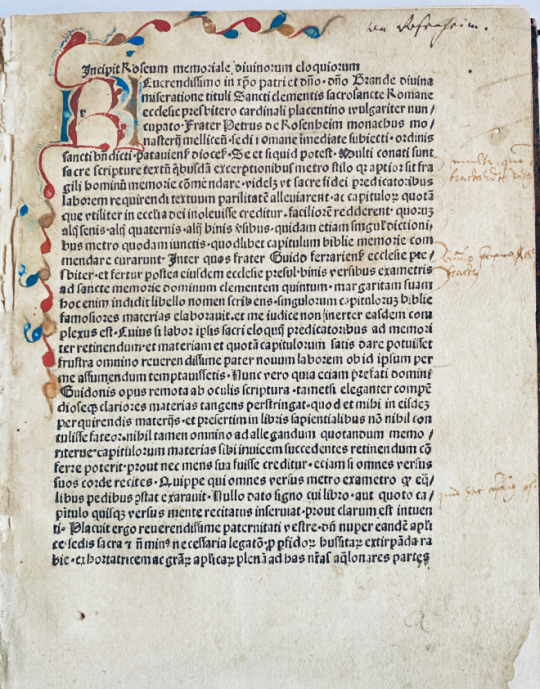
Quarto (190 x 155 mm). Collation: a-f8 [1-68]. [48] leaves. First Edition. Text in one column, 32 lines. Type: 80G. Initials painted in red, and blue ink throughout. Simple vellum binding from a 15th century vellum leaf. Gothic script. . A very good copy, old repair to the first blank leaf, a few spots, pale stain at the lower blank corner of the first quires. It is not known where and by which press this edition was printed. ISTC gives Southern Germany and a date of c.1480-1490, GW tentatively suggests Oberrhein, 1483, and Proctor attributes it to Ludwig Von Renchen in Cologne. The hexameters of each section of the summary form an acrostic of the letters of the alphabet. (alphabetarium) as to insure memorization in the proper sequence, the first word of each verse falls neatly into alphabetical order. [1,194 short mnemonic verses] It uses characteristic couplets (distiches) to express the main content of all chapters of the Old and New Testament. This introduction makes it possible to easily find every quote in the Bible.
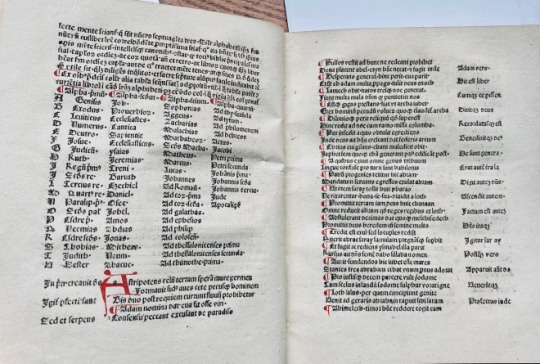
A significant record of the essential role of memory in late-medieval piety, One of the earliest printed books on the ars memorativa or mnemotechnic was composed by the German Benedictine monk Petrus of Rosenhaym (Upper Bavaria), written between 1423 and 1426 for Cardinal Giulio Branda di Castiglione. Petrus of Rosenhaym composed numerous treatises, sermons, and verses: the Roseum memoriale is surely his most famous work, enjoying wide popularity during the fifteenth century and first half of the sixteenth century. The mnemotechnic method here employed is extremely complex: the hexameters of each section of the summary form an acrostic of the letters of the alphabet. in. A highly popular and broadly used manual, its copies could be found in almost every European church after the invention of the printing press it was printed in several different locations. This early medieval incunable has not been clearly dated| researchers attribute it to the Upper Rhine region sometime between 1480 and 1483. After studying at the University of Vienna, Petrus de Rosenhaym, along with his friend Nikolaus Seyringer, moved to Subiaco, where he entered the Benedectine order. In 1413, he was appointed prior to the cloister of Rocca di Mondragone near Capua. In 1416, he took part in the Council of Konstanz, and later he was prior in Melk (Lower Austria). After 1423, he was appointed ‘cursor biblicus’ and ‘magister studentium’. Goff R336; BMC I 312; ; GW M32724; ISTC; ir00336000; Polain(B) 3128; IBE 4559; IGI 7668; IBP 4380; Sajó-Soltész 2676; Madsen 3549; Borm 2134; Hubay(Würzburg) 1704; AmBCat 199; Walsh 492; Oates 867; Pr 1517;; BSB P-362; Van der Haegen II,2:16,4?; Young 278;.
Copies in the United States of America: Brown, Harvard, Library of Congress, Huntington, The Newberry Library, Yale
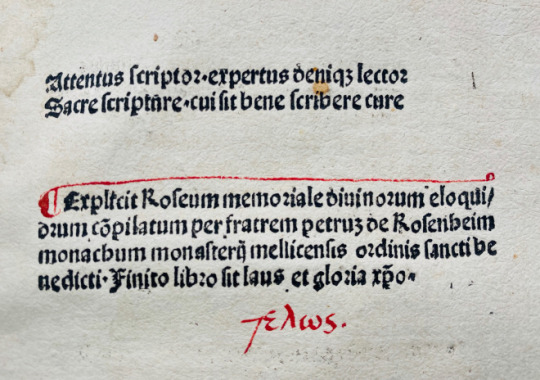
^)^)^)^(^(^(^
^)^)^)^(^(^(^

14) 384J Raymundus de Sabunde -1436
Theologia naturalis, sive, Liber creaturarum : specialiter de homine et de natura eius inquantum homo, et de his que sunt ei necessaria ad cognoscendum seipsum [et] deum et omne debitu[m] ad quod homo tenetur et obligat[ur] tam deo quam p[ro]ximo.
Straßburg: Martin Flach, 21 January 1496. $17,000
Imp[re]ssus Argentine per Martinum Flach inibi co[n]ciuem anno incarnat[i]o[n]is d[omi]nice Millesimoq[ua]dringentesimononagesimosexto men[sis] v[er]o Ianuarij die vicesimop[ri]mo

Folio (280 x 200mm.) π6 a8 b-y6 z8 [et]6 [con]8 (the last leaf supplied from another copy, printed on recto only), The second leaf (π2) has a beautiful a green painted initial A [Amor] on a gold ground with pink and blue edges, extending into the margins with green-stemmed pink and gold flowers on opposite side. The first leaf of the text proper (a1) Has a large blue painted initial A on a gold ground with pink and green edges, large pink and purple flowers, strawberries thistles and a Tromp l’oeil of a Dead fly,( quite charming) fill uppermargin; 3-line initials in alternating red and blue, rubricated throughout. This is the first dated edition.
It is bound in Contemporary deerskin over wooden boards, covers panelled and tooled in blind with repeated small rosette tool, remains of paper labels on spine (lacking metal furniture and clasps, some wear and small areas of loss). This copy has some contemporary manuscript notes, including a two-line note on f. b2recto, and on f.a2verso is a marginal drawing of the scala naturae with the four gradus marked. Provenance: Contemporary inscription of Johannes Pengl (Penngl) from Weißenburg in Bavaria, who was active in Eichstätt & Vienna, with a note of cost of binding on final paste down. Later notes and shelf-mark on front paste-down and loose sheet.
Colophon: Finit liber creatura[rum] seu nature siue nature siue de ho[m]i[n]e p[ro]pt[er] que[m] alie creature facte su[n]t ex cui[us] cognit[i]one illu[m]inat[ur] ho[mo] i[n] [co]gnit[i]o[n]e dei [et] creaturarum.
This text marks the dawn of a knowledge based on Scripture and REASON.
The Catholic Encyclopedia sees this as “It represents a phase of decadent Scholasticism, and is a defense of a point of view which is subversive of the fundamental principle of the Scholastic method. The Schoolmen of the thirteenth century, while holding that there can be no contradiction between theology and philosophy, maintain that the two sciences are distinct. Raymond breaks down the distinction by teaching a kind of theosophy, the doctrine, namely that, as man is a connecting link between the natural and the supernatural, it is possible by a study of human nature to arrive at a knowledge even of the most profound mysteries of Faith. The tendency of his thought is similar to that of the rationalistic theosophy of Raymond Lully….Moreover, in Spain scholastics, in combating Islam, borrowed the weapons of their erudite antagonists. Close internal resemblance indicates that Raimund de Sabunde was preceded in method and object by Raymund Lully.” CE

What is new and epoch-making is not the material but the method; not of circumscribing religion within the limits of reason, but, by logical collation, of elevating the same upon the basis of natural truth to a science accessible and convincing to all. He recognizes two sources of (1)knowledge, the book of nature and (2) the Bible. The first is universal and direct, the other serves partly to instruct man the better to understand nature, and partly to reveal new truths, not accessible to the natural understanding, but once revealed by God made apprehensible by natural reason. The book of nature, the contents of which are manifested through sense experience and self-consciousness, can no more be falsified than the Bible and may serve as an exhaustive source of knowledge; but through the fall of man it was rendered obscure, so that it became incapable of guiding to the real wisdom of salvation. However, the Bible as well as illumination from above, not in conflict with nature, enables one to reach the correct explanation and application of natural things and self. Hence, his book of nature as a human supplement to the divine Word is to be the basic knowledge of man, because it subtends the doctrines of Scripture with the immovable foundations of self-knowledge, and therefore plants the revealed truths upon the rational ground of universal human perception, internal and external.
The first part presents analytically the facts of nature in ascending scale to man, the
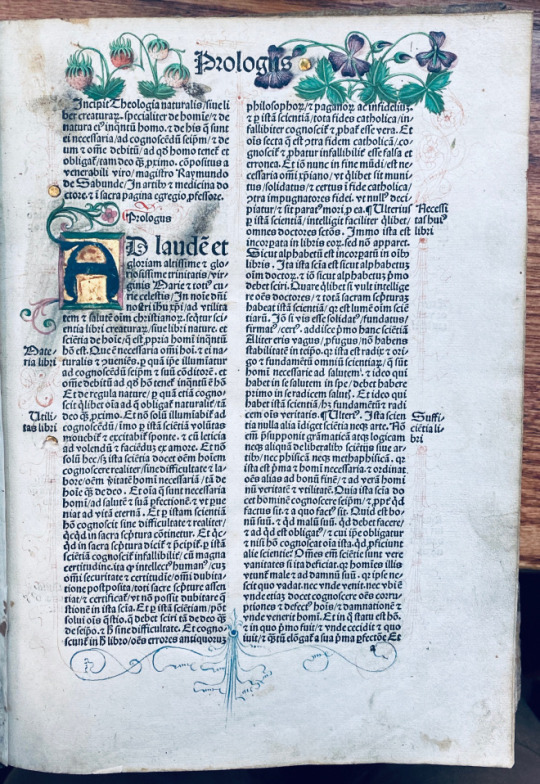
climax; the second, the harmonization of these with Christian doctrine and their fulfillment in the same. Nature in its. four stages of mere being, mere life, sensible consciousness, and self-consciousness, is crowned by man, who is not only the microcosm but the image of God. Nature points toward a supernatural creator possessing in himself in perfection all properties of the things created out of nothing (the cornerstone of natural theology ever after). Foremost is the ontological argument of Ansehn, followed by the physico-theological, psychological, and moral. He demonstrates the Trinity by analogy from rational grounds, and finally ascribes to man in view of his conscious elevation over things a spontaneous gratitude to God. Love is transformed into the object of its affection; and love to God brings man, and with him the universe estranged by sin, into harmony and unity with him. In this he betrays his mystical antecedents. Proceeding in the second part from this general postulation to its results for positive Christianity, he finds justified by reason all the historic facts of revealed religion, such as the person and works of Christ, as well as the infallibility of the Church and the Scriptures; and the necessity by rational proof of all the sacraments and practices of the Church and of the pope. It should be added that Raimund’s analysis of nature and self-knowledge is not thoroughgoing and his application is far from consistent. He does not transplant himself to the standpoint of the unbeliever, but rather executes an apology on the part of a consciousness already Christian, thus assuming conclusions in advance that should grow only out of his premises. Yet his is a long step from the barren speculation of scholasticism, and marks the dawn of a knowledge based on Scripture and reason.
In its day, and for a long time later, it was a celebrated text. The title translates ‘Natural Theology or the book of [living] creatures, in particular about man and his nature inso far as he is man, and about those things necessary for him to know both himself and God, and about every duty by which man is held and obligated both in respect of God and his neighbour.’ The scope is therefore pretty wide. The main point of Sebond’s work is that that faith can be taught, attained, understood by natural reason and not simply on the basis of blind faith and literal adherence to Scripture, although this last is given full weight as is the teaching of ‘sacrosancta romana ecclesia who is the mother of all faithful christians, mistress of grace and faith and rule of truth…’ (preface on a2ra). The work is divided into 330 ‘tituli’ or chapters beginning with the origins of natural theology and ending with the last judgement, the subjects treated at greatest length being ‘God’ and ‘Man’.
Theologia Naturalis, which circulated widely in manuscript and is known particularly in a manuscript in Toulouse (747) corrected after the author’s own copy, was first published in what is called the ‘third family’ in Deventer in 1484-85 (possibly through the offices of the Brothers of the Common Life; the Bodleian copy is from their house at Doesburg, Holland), and then Lyon ca. 1488 from the printer Balsarin. This Flach printing circulated widely (a copy was at Winchcomb abbey in Gloucestershire within a few years (now in Glasgow) and early in the 16the century Archbishop Warham (Abp. 1503-32 ) gave a copy to All Souls College, Oxford) and is the first dated edition. There were a number of later editions (including another Flach edition of 1501) right up into the 17th century. Indeed the well-known 17th-century philosopher Kenelm Digby ( 1603-1664) had a copy of this edition (now at Durham University Library at Bamburgh Castle). Part of the Theologia (Dialogos de la naturaleza delhombre) was translated into Spanish and printed in Madrid in 1610 and 1616, and a resumé by the Carthusian Petrus Dorlandus (Viola anime per modum dyalogi) was published in Cologne in 1499 (ISTC id00360000 ) and in Toulouse in 1500 I(ISTC id003610000).. The Theologia because of the importance it accorded human reason did not escape the notice of the holy Office and was placed on the Index in the middle of the 16th century. Montaigne indeed discovered this during his visit to Rome.
Goff R33.; BMC I, 154.; HC 14069*; GW M36911; Bod-inc R-018. ISTC ir00033000. Palau 283900
◊
◊ ◊
◊

15) 369J Publius Terentius Afer. 185-
Terentius Comico Carmine
Impressum in nobili Helvecior[um] urbe Arge[n]tina : Per Ioanne[m] Grüninger mira etium arte ac diligentia. 1503 $7,500
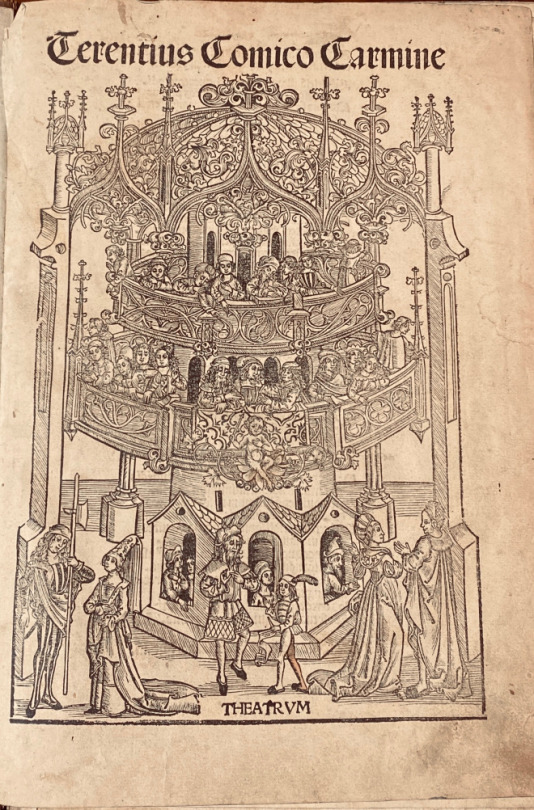
Folio A6 B8 C-Z6 AA6 Bb4 Cc6. There are numerous handwritten annotations in ink (marginal and interlinear, ff. IX-XIX). The binding of half-calf with corners of the XIXth, back with 4 sewing support with pieces of title of red and green leather, boards covered with stony marbled paper. { A typical Kloss binding} (there is a tear sig. B1, with loss; first signature cut shorter at the lower margin; restorations of paper with the last sheets in the upper margin; Yet this copy remains a beautiful illustrated edition of the comedies of Terence with comments by Aelius Donatus and Calphurnius. From the presses of the famous and prolific Strasbourg printer-publisher Johann Reinhard, known as Grüninger, it is remarkably illustrated with 7 large full-page woods (including the famous representation of a theater on the title),

woodcuts depicting the dramatis personae in a land- or cityscape, one at the beginning of each play, and 142 woods in the text 19 of the cuts appear here for the first time; the others are from the 1496 ed. «Grüninger’s illustrations, intended to clarify the complexities of Terence’s plots for the reader, act as visual mnemonic devices for the book’s anticipated student audience. This is demonstrated especially in the full-page woodcut that begins each play, where all of the characters are displayed with connecting lines to indicate their interrelationships. covered with stony marbled paper. { A typical Kloss binding} (there is a tear sig. B1, with loss; first signature cut shorter at the lower margin; restorations of paper with the last sheets in the upper margin; Yet this copy remains a beautiful illustrated edition of the comedies of Terence with comments by Aelius Donatus and Calphurnius. From the presses of the famous and prolific Strasbourg printer-publisher Johann Reinhard, known as Grüninger, it is remarkably illustrated with 7 large full-page woods (including the famous representation of a theater on the title), woodcuts depicting the dramatis personae in a land- or cityscape, one at the beginning of each play, and 142 woods in the text 19 of the cuts appear here for the first time; the others are from the 1496 ed.

«Grüninger’s illustrations, intended to clarify the complexities of Terence’s plots for the reader, act as visual mnemonic devices for the book’s anticipated student audience. This is demonstrated especially in the full-page woodcut that begins each play, where all of the characters are displayed with connecting lines to indicate their interrelationships. A verbal explanation and plot summary accompanies each of these illustrations. The most remarkable feature of Grüninger’s Terence is his use of small interchangeable woodcuts that were combined to create the individual scene illustrations for each play. Individual blocks were cut for most of the characters of the six plays, who are identified by name in overhead banners. The blocks were cleverly combined repeatedly in groups of two to five, sometimes together with cuts of trees and buildings, to create the illustrations. Grüninger was attempting to use the woodcuts as repeatable and combinable objects, much in the same manner as movable type» (Christine Ruggere, in Vision of a Collector: The Lessing J. Rosenwald Collection in the Library of Congress)
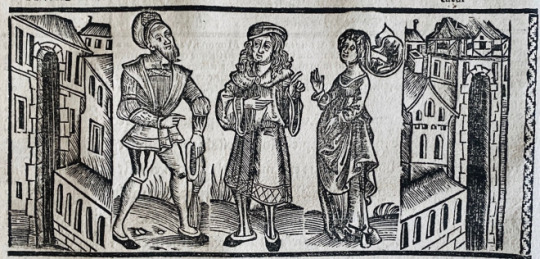
Terence writes in a simple conversational Latin, pleasant and direct. Due to his clear and entertaining language, Terence’s works were heavily used by monasteries and convents during the Middle Ages and The Renaissance. Scribes often learned Latin through the meticulous copying of Terence’s texts. Priests and nuns often learned to speak Latin through reenactment of Terence’s plays, thereby learning both Latin and Gregorian chants. Although Terence’s plays often dealt with pagan material, the quality of his language promoted the copying and preserving of his text by the church. The preservation of Terence through the church enabled his work to influence much of later Western drama. [Holloway, Julia Bolton (1993). Sweet New Style: Brunetto Latino, Dante Alighieri, Geoffrey Chaucer, Essays, 1981-2005.] This copy has the book plate and a binding typical for Kloss. It is NOT Melanchthon’s copy, or his notes!
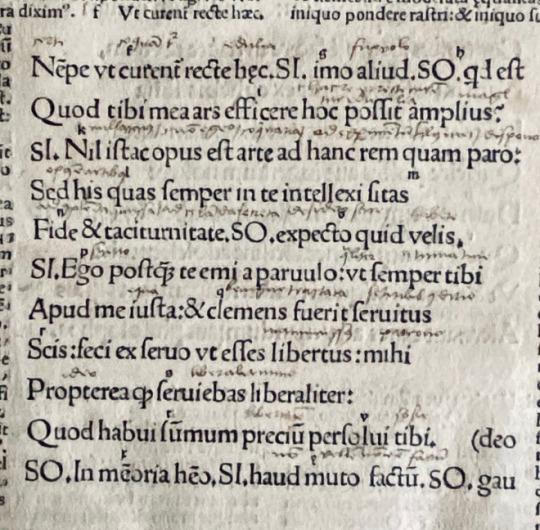
Georg Franz Burkhard Kloss (31 July 1787 Frankfurt am Main – 10 February 1854 Frankfurt). Kloss was the son of a physician and studied medicine at Heidelberg and Göttingen, where he became one of the cofounders of the Corps Hannovera Göttingen. He practiced medicine in Frankfurt. He became a book collector, and gathered a fine collection of old manuscripts,. On February 21, 1838, New York book auction house Cooley & Bangs began a three day sale during which they offered more than 313 incunabula distributed among 1,302 lots. Many incunables came from the collection of George Kloss and had appeared in the London sale of his books three years before. It is entirely possible that the 1838 sale was the first time in America that so many incunables were offered all at once in a single auction..
The bulk of the Kloss books were sold by Sotheby in 1835. Most of the books containing notes were attributed as owned and annotated by Melanchthon .
Catalogue of the library of Dr. Kloss of Franckfort a. M. including many original and unpublished manuscripts, and printed books with ms. annotations, by Philip Melancthon …Which will be sold by auction, by Mr. Sotheby and son … May 7th, and nineteen following days (Sundays excepted) .
https://babel.hathitrust.org/cgi/pt?id=hvd.32044055066971&view=1up&seq=9
Adams D 304. Proctor 9889. Ritter 2284.
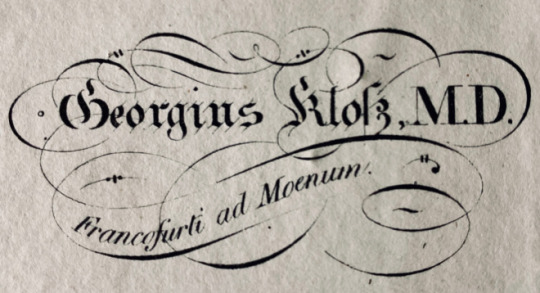
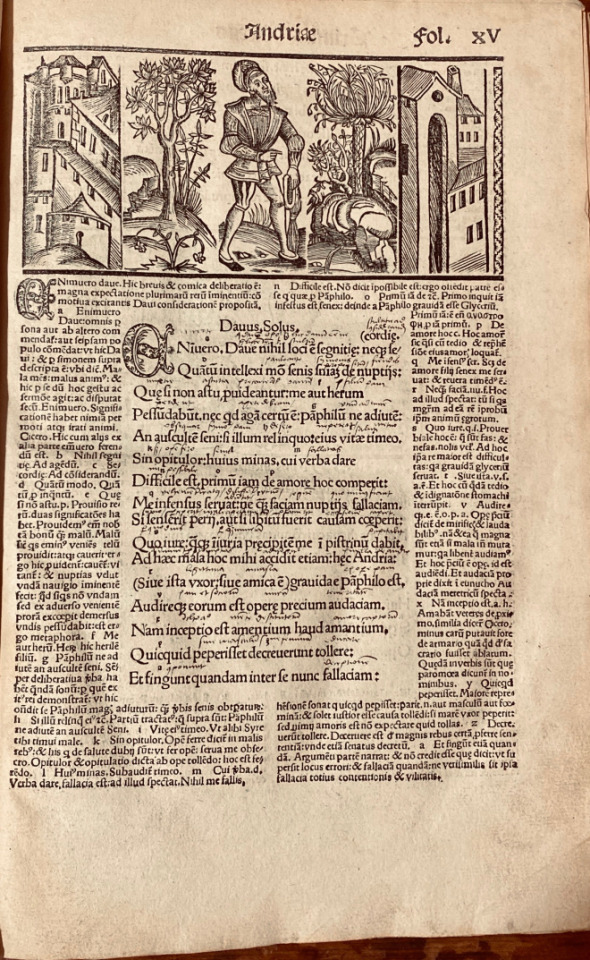
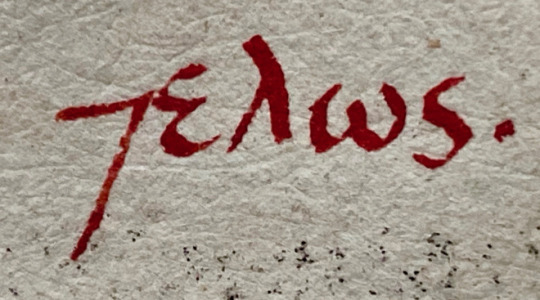
Fascicule XXI. Media Plaga 3-4/2020 Only a day or two ago I was notified that I was in contact with some people tested for and found positive for Covid-19, this came as nothing un expected, I was in contact with hundreds of people many from Europe recently.
#early printed books#fascicule XXI#George Kloss#illustrated incunabulum#Incunabula#Irish authors#irish/gaelic printing#Kircher#Not in Goff#rare book catalogue
9 notes
·
View notes
Text
Prelate highlights interreligious unity in Cebu dawn mass
#PHnews: Prelate highlights interreligious unity in Cebu dawn mass
CEBU CITY -- Archbishop Jose S. Palma on Monday highlighted interreligious dialogue during the kickoff of the traditional nine-day Misa de Gallo leading to Christmas Eve in front of hundreds of vendors and market-goers at the Carbon Public Market here.
“All of us who belong to different religions, if you may, there is unity and there should be no quarrel. Why would we fight with each other when we all believe in God?” Palma said in his homily delivered in Cebuano.
The Roman Catholic Church in the Philippines celebrates 2020 as “Year of the Ecumenism, Interreligious Dialogue, and Indigenous Peoples” which kicked off on Dec. 1, the first Sunday of Advent that marked the start of the new liturgical calendar.
On Nov. 13, 2019, the Catholic Bishops’ Conference of the Philippines (CBCP) issued Circular 19-29 informing the bishops and diocesan administrators in the country about the official logo, theme, objectives and prayers in relation to 2020 as year for ecumenism, interreligious dialogue and indigenous peoples.
In the homily, Palma pressed church leaders of different religions to unite for the good of the believers.
“The point is, do not criticize other religions. Do not convert (people of other faith). Be a good Muslim, be a good Latter-Day Saints (LDS), be a good Buddhist. Let’s foster fraternity and friendship,” he said. “There are many things that unite (rather) than the things that divide.”
He said the Archdiocese of Cebu has been hosting “breakfast meeting for unity” with pastors, imams, ministers, and leaders of around 20 different religions like the United Church of Christ in the Philippines (UCCP), LDS, and Buddhist, among other denominations.
The 69-year-old head of over four million Roman Catholics in Cebu prodded religious leaders to do joint projects that have an impact on the common people.
“There are many things that transcend religion. We can do something which are much better than talking about religion. Let us do project that can benefit the community like planting of trees,” he said.
Palma told the attendees of the first day of this year’s Misa de Gallo in Cebu’s biggest public market that Pope Francis celebrated the first dawn mass at the St. Peter’s Basilica for Rome’s Filipino community.
The Vatican has recognized the traditional nine-day dawn masses up to the Christmas Eve as a significant Filipino tradition, he said.
He said Cebuanos have a “special privilege” from God through the gift of the image of Sto. Niño by Spaniards on April 14, 1521 when King Humabon and Queen Juana got baptized along with 700 other locals.
“Nganong maglipay kita? Kay ang magnunubos niabot na. Grasya sa Ginoo nga may special privilege kita sa Cebu. Ngano man? Kay sa kadaghang mga isla, 7,0000 plus, dinhi gyud gilahad ang image ni Sto. Niño pagbunyag ni Juana ug Humabon uban ang 700 ka mga sakop. … Mao nga kita sa sa Cebu ang unang mga debotos ni Sto. Niño (Why should we happy? It’s because the redeemer has come. It’s a grace from God that we got the special privilege in Cebu. Why is that? Of all the 7,000 plus islands in the country, it was here that the image was given during the baptism of Juana and Humabon along with 700 other locals… That’s why we are recognized as the first devotees of the Sto. Niño),” the bishop said. (PNA)
***
References:
* Philippine News Agency. "Prelate highlights interreligious unity in Cebu dawn mass." Philippine News Agency. https://www.pna.gov.ph/articles/1088854 (accessed December 17, 2019 at 10:36PM UTC+14).
* Philippine News Agency. "Prelate highlights interreligious unity in Cebu dawn mass." Archive Today. https://archive.ph/?run=1&url=https://www.pna.gov.ph/articles/1088854 (archived).
1 note
·
View note
Photo
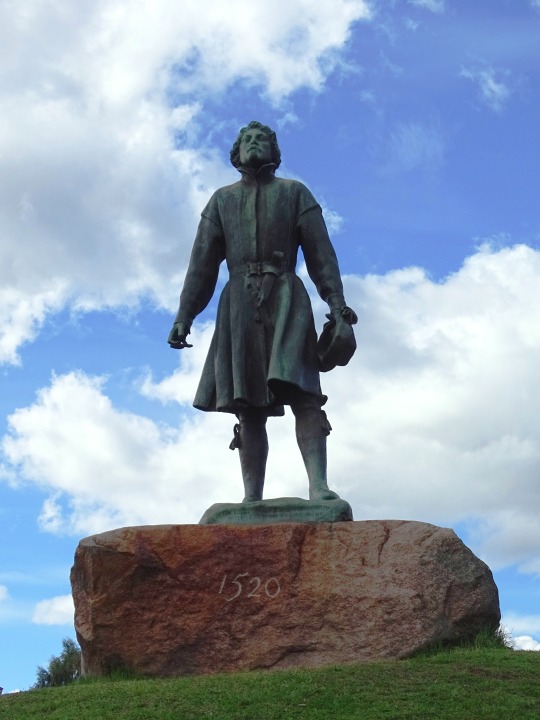



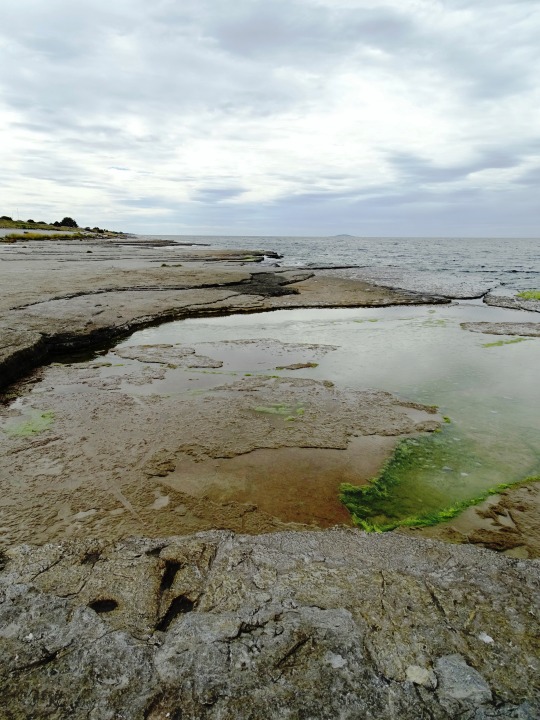




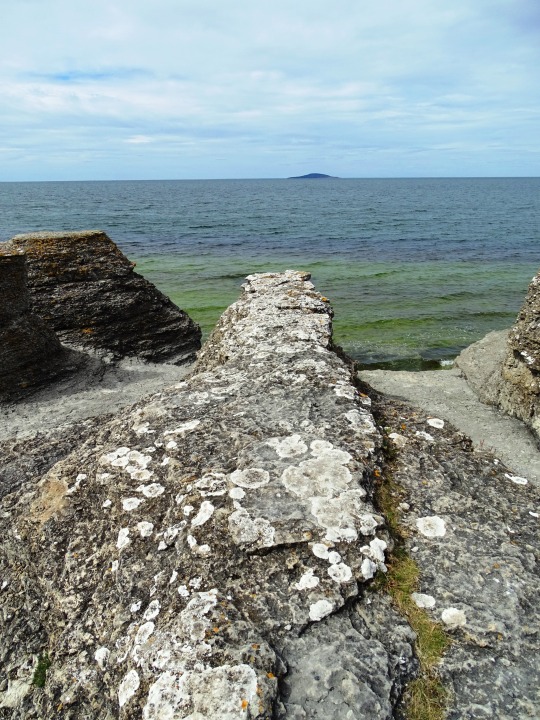
Swedish War of Liberation: Swedish troops defeated a Danish force in the Battle of Västerås on April 29, 1521.
#Gustav Vasa by Anders Zorn#Mora#Lake Siljan#Falun Mine#Kalmar Strait#Baltic Sea#Öland#Sweden#Swedish history#Sverige#summer 2020#travel#original photography#landscape#seascape#cityscape#Old Uppsala Archaeological Area#Långbryggan#Rättvik#Byrums Raukar#Neptune's Fields#Swedish War of Liberation#Battle of Västerås#29 April 1521#tourist attraction#landmark#countryside#Scandinavia#Northern Europe
1 note
·
View note
Text
National Artist for Literature (1976)
(May 4, 1917 – April 29, 2004)
“Before 1521 we could have been anything and everything not Filipino; after 1565 we can be nothing but Filipino.” ― Culture and History, 1988
Nicomedes "Nick" Márquez Joaquín was a Filipino writer and journalist best known for his short stories and novels in the English language. He also wrote using the pen name Quijano de Manila. Joaquín was conferred the rank and title of National Artist of the Philippines for Literature. He has been considered one of the most important Filipino writers, along with José Rizal and Claro M. Recto. Unlike Rizal and Recto, whose works were written in Spanish, Joaquin's major works were written in English despite being a native Spanish speaker.
Nick Joaquin, is regarded by many as the most distinguished Filipino writer in English writing so variedly and so well about so many aspects of the Filipino. Nick Joaquin has also enriched the English language with critics coining “Joaquinesque” to describe his baroque Spanish-flavored English or his reinventions of English based on Filipinisms. Aside from his handling of language, Bienvenido Lumbera writes that Nick Joaquin’s significance in Philippine literature involves his exploration of the Philippine colonial past under Spain and his probing into the psychology of social changes as seen by the young, as exemplified in stories such as Doña Jeronima, Candido’s Apocalypse and The Order of Melchizedek. Nick Joaquin has written plays, novels, poems, short stories and essays including reportage and journalism. As a journalist, Nick Joaquin uses the nome de guerre Quijano de Manila but whether he is writing literature or journalism, fellow National Artist Francisco Arcellana opines that “it is always of the highest skill and quality”.
Among his voluminous works are The Woman Who Had Two Navels, A Portrait of the Artist as Filipino, Manila, My Manila: A History for the Young, The Ballad of the Five Battles, Rizal in Saga, Almanac for Manileños, Cave and Shadows.
Nick Joaquin died April 29, 2004.

0 notes
Photo

Entrylist 2019 Dos Mares 500 as publsihed by organizer at 26th of April 2019
TROPHY TRUCK (6)
1.- 90 Sandy Hall 2. - 66 Armando Bravo/Allen Bravo 3.- 82 Martin Ibarra de la Toba 4.- 7 Jimmy Díaz 5. - 45 Gary Magness 6. - 32 Chelsea Magness
CLASE 1: (6)
1.-113 Juan Carlos Flores Álvarez 2.- 199 Samuel Araiza 3.-100 Eduardo Guitron 4. 117 Blas Gracia 5.-116 Stefano Palacios 6.- 170 Arturo Castilla
CLASE 2 (5)
1.- 211 Manuel Jesús Espinoza/ Joel Espinoza Hernandez
2.- 213 Juan Araiza/ Héctor Moraira
3.-265 Geovani Lucero
4.- 210 Pedro Velázquez Hernández
5.-267 Jose David Castellan
Clase 10 (5)
1.- 1075 Javier Alberto Montoya
2. 1054 Andrés Ruffo De Alba / Alfonso Rojas
3.- 1007 David Jarvis
4.- 1016 Jose Luis Casas Garcia
5.- 1077 Ramiro Pequeño
CLASE 8 LIBRE: (7)
1.- 808 Andrea Tomba
2.- 838 Luis González / Alejandra González
3.- 831 Israel Araiza Gausin / Jose Luis Rosas Polanco
4.-800 Tony Willie
5.- 834 Alfonso Jaime Tabasco
6.- 803 Francisco Garcia
7.- 848 José Juan Murillo Abaroa 1rs
CLASE 7 LIBRE: (16)
1.- 737 Jose Carlos Jiménez
2.- 727 Tony López
3.-746 Alan Chavez
4.- 734 Raúl Burgoin
5.- 711 Guillermo Gallardo Arrollo
6.- 700 Isaac Mercado
7.- 742 Arturo Romero/Guillermo Romero
8.- 748 Diego Vail
9.- 720 Luis Fernando Cota
10.-709 Javier Murillo
11.- 719 Carlos Ramos Murillo/ Jose Luis Rosas
12.- 704 Andrés Battaglia Rodriguez
13.- 717 Andrés Pérez Ramírez
14.- 726 Alvaro Aguilar Gonzalez
15.- 715 Israel Chon Gonzalez
16.- 718 Ringo Cazares
CLASE 5 LIBRE: (2)
1.- 501 Jaime Moncayo
2.- 500 Victor Hugo Ceseña
CLASE 16: (21)
1.- 1606 Mike Ley
2.- 1607 Jorge Mendoza
3.- 1669 Danilo Ceseña
4.- 1689 Humberto Guitron/ Rody Amaya
5.- 1610 Luis Fernández
6.- 1659 Jose Juan Islas/ Jose Juan Islas jr
7.- 1680 José Rogelio Sandoval Sánchez / Carlos Jaffet Jiménez
8.- 1686 Juan Carlos Pinales
9.- 1644 Pedro Carranza / Fernando Dávalos
10.- 1627 Rafael Corona/ Daniel Orozco / Daniel Arreola
11.- 1699 Juan Pablo Sandez
12.- 1610 Jose Luis Villareal
13. 1630 Alfonso Ojeda
14.-1688 Christopher Alberto Ochoa Domínguez
15.- 1687 Adrián Sauceda/ Francisco Villagómez
16.-1654 Roberto Sandoval Ceseña/ Alba Sandoval
17.- 1628 Armando Valles / Leonel Orozco
18. 1650 Silvestre Arce
19.- 1600 Rodimiro Amaya / Humberto Guitron
20. 1670 Javier Ernesto Montoya
21. 1612 Jesús Villagomez
CLASE 29: (13)
1.- 2951 Alejandro Ayala
2.- 2924 Martin Salgado
3.- 2967 Cesar Ojeda
4.- 2921 Giovani González
5.- 2907 Manlio Díaz
6.- 2988 Jorge Vela/ Elias Hanna
7.- 2930.- Francisco Septién
8.- 2977 Rubén Alejandro Flores
9.- 2901 Jesús Renero/ Ivan Sánchez
10.- 2936 Luis Elizondo
11.- 2920 Luis Melesio Solis/ Luis Melesio jr
12.- 2014 Luis Ganelon
13.- 2971 Ruben A Gonzalez
CLASE 7SX: (14)
1.- 7007 José Alejandro Flaire
2.- 7079 Sole Campoy/Brian Westerlum/Raúl Ramirez
3.- 7001 Francisco Xavier Fisher
4.-7021 Ramiro Peralta
5.- 7000 Rodrigo Martinez Zepien
6.- 7074 Fernando Ramírez
7.- 7050 Rey David Lucero Lucero
8.- 7005 Erick Ernesto González
9.- 7014 Francisco Romero
10.- 7085 Rodrigo Martinez Liera
11.-7038 Manuel Ponce
12.- 7092 Roberto Galvez / Edgar Félix
13.- 7065 René Núñez
14.- 7027 Kevin Manriquez.
CLASE JEEPSEED:
CLASE 8 STOCK: (3)
1.- 866 Francisco Tamayo
2. 859 Luis Fernando Nieblas / Paul Lopez Jr.
3.- 877 José Vidal Castillo
CLASE STOCK MINI: (13)
1.- 759 José Alberto Murillo.
2.-756 Cesar Meza / Miguel Meza
3.- 796 Guillermo Zamacona
4. 762 Edgar Hernández
5.- 752 Luis Camacho / Alejandro Camacho
6.- 750 Victor Zarate
7.- 787 Iván Montijo
8.- 792 Roberto Galvez
9. 760 Gilberto Rodriguez
10.- 799 Eddie Velázquez
11.- 795 Ernesto Perales
12.- 765 Miguel Barrera
13. 781 Raúl Camacho / Arath Flores
CLASE 9: (4)
1.- 920 Gustavo Otero/ Luis David Abaroa
2.- José Jesús González
3.- 900 Fernando Marrón
4.- 912 Alfredo Verdugo/Irvin Zazueta 1Rs
CLASE 11: (5)
1.- 1100 Carlos Salgado
2.- 1157 René de la Toba
3.- 1121 Francisco Chacón
4.- 1186 Juan Beltrán Talamantes
5.- 11XX JOEL ELIZMAN 1rs
CLASE 15 SPORTMAN BUGGY: (4)
1.- 1520 Dario Rojas Torres
2.-1531 Héctor Hugo Logan Meza
3.- 1533 Alex Robles
4.- 1521 Jesus Montaño Lucero/ Angel Dillanes Lucero.
CLASE 14 SPORTMAN TRUCK: (1)
1.- 1449 Marcos A. Castro.
CLASE STOCK BUGGY (1)
1.- 1597 Enrique Zazueta 1rs
0 notes
Text
10 quincentennial markers to be unveiled in E. Visayas
#PHnews: 10 quincentennial markers to be unveiled in E. Visayas
TACLOBAN CITY - Ten historical markers will be unveiled in Leyte and Samar provinces between March and April this year in areas that were part of the world’s first circumnavigation.
The National Historical Commission of the Philippines (NHCP) National Quincentennial Committee (NQC) has picked these sites given its direct links to the events in 1521, Department of Tourism Eastern Visayas Regional Director Karina Rosa Tiopes said on Tuesday.
“These markers play a significant role in making people aware that these communities were part of the first circumnavigation. This is part of telling our story as we celebrate the 500th anniversary of Ferdinand Magellan’s landing in Eastern Samar and the First Mass in Southern Leyte,” Tiopes said in an interview.
Markers will be unveiled in Calicoan and Suluan islands in Guiuan, Eastern Samar as well as at the newly-restored Guiuan Church on March 16.
On March 18, a marker will be unveiled in Homonhon Island also in Guiuan, marking the 500th anniversary of the Philippine-Spanish Contact.
Markers will also be unveiled in Hinunangan, Leyte (March 25); Limasawa, Southern Leyte (March 29); Combado, Maasin City in Southern Leyte (April 4); Canigao Island, Matalom, Leyte; Himokian Islet in Hindang, Leyte; and Baybay City, Leyte (April 5).
Limasawa Island, the smallest town in the province of Southern Leyte is the site of the First Catholic Mass in Asia, officiated on Easter Sunday, March 31, 1521, by Father Pedro de Valderrama under the fleet of Ferdinand Magellan.
Two weeks before the mass on March 16, 1521, Magellan landed in Homonhon Island in Guiuan, Eastern Samar where his crew managed to gather some food and water.
Since last year, the National Quincentennial Committee of the National Historical Commission of the Philippines has planned several activities for the celebrations but some non-religious activities may not proceed due to movement restrictions. (PNA)
***
References:
* Philippine News Agency. " 10 quincentennial markers to be unveiled in E. Visayas." Philippine News Agency. https://www.pna.gov.ph/articles/1128547 (accessed January 26, 2021 at 11:16PM UTC+14).
* Philippine News Agency. " 10 quincentennial markers to be unveiled in E. Visayas." Archive Today. https://archive.ph/?run=1&url=https://www.pna.gov.ph/articles/1128547 (archived).
0 notes
Photo










Swedish War of Liberation: Swedish troops defeated a Danish force in the Battle of Västerås on April 29, 1521.
#Gustav Vasa by Anders Zorn#Mora#Swedish War of Liberation#Sweden#Battle of Västerås#29 April 1521#500th anniversary#Swedish history#travel#summer 2020#original photography#Slaget om Västerås#Dalarna#lake Siljan#Falun Mine#Old Uppsala Archaeological Area#Gamla Uppsala#Kalmar Strait#Kalmar#Baltic Sea#Sverige#Scandinavia#Northern Europe#Västmanland County#Rättvik
4 notes
·
View notes
Text
18W35
Long day today means no time left for this. There's a fair amount of things going on concurrently. The old car is indeed gone for greener pastures with a mechanic, in exchange for a car he was selling. The transaction should occur later today. I don't think I could have done better in a new pick up. I might be at the end of the line for the current occupation. I can deal with a lot of things, but I can't deal with my hands and arms going bad on me from it. Things seem to be a bit better these last few days but I can't count on it staying that way. I need to keep moving on investigating potential changes. Home sessions were mostly flat again. Given how my health is at the moment, all I'm hoping to do is cling to what I can do as long as I can do it. I just need to keep a forward momentum with this extra day off, and try to do my best to not let it turn into a mere additional day of lounging.
約束 happyhyper 35.50 D 2346.F 756.834.924.438.1308 0093 3304 2018-08-26T20:40:31:609Z 0/4 03.09- 0204- in my eyes 72.31 A 1520.P 580.360.90.5.25 0336 1051 2018-08-26T20:42:56:293Z 15/15 00.57- 0012- x rated 46.11 C 1755.F 592.571.458.141.436 0084 1903 2018-08-26T20:45:21:918Z 0/23 05.36- 0204- diamond crossing 30.27 E 1445.F 484.477.652.289.1092 0031 2387 2018-08-26T20:47:50:439Z 0/7 02.24- 0107- deep blue 61.47 B 2476.F 898.680.296.65.240 0191 2014 2018-08-26T20:51:01:156Z 0/9 03.28- 0132- phantom ensemble 40.96 D 2455.F 859.737.765.345.1069 0123 2997 2018-08-26T20:54:35:837Z 0/12 00.48+ 0029+ ++++++++++ dengeki tube 34.20 D 1744.F 595.554.790.357.1091 0109 2550 2018-08-26T20:57:09:103Z 0/6 04.16- 0212- T6 33.97 D 1784.F 601.582.744.360.1068 0105 2626 2018-08-26T20:59:48:533Z 0/10 00.19+ 0010+ ++++++++++ love rebirth 06 47.11 C 2314.F 833.648.528.221.685 0119 2456 2018-08-26T21:02:41:437Z 0/5 02.16- 0106- hollow AI 47.62 C 2122.F 763.596.565.159.534 0096 2228 2018-08-27T20:35:41:069Z 0/7 07.02- 0313- 花鳥風月 32.52 E 1856.F 636.584.786.399.1248 0202 2854 2018-08-27T20:38:42:418Z 0/8 01.77- 0101- gradius 2012 49.76 C 2065.F 743.579.408.161.591 0054 2075 2018-08-27T20:41:53:879Z 0/15 03.52- 0146- summer vacation 52.69 C 1645.F 589.467.319.75.307 0151 1561 2018-08-27T20:44:15:952Z 0/13 04.00- 0125- 黒髪乱れし修羅となりて 37.90 D 1848.F 619.610.669.275.899 0050 2438 2018-08-27T20:47:53:900Z 0/10 02.19- 0107- オルタネイトβ 53.76 C 2371.F 906.559.320.227.634 0096 2205 2018-08-27T20:50:53:198Z 0/2 02.79- 0123- たからもの 55.61 B 2518.F 907.704.384.105.527 0086 2264 2018-08-27T20:54:47:550Z 0/11 10.09- 0457- starlight dancehall A 32.33 E 1674.F 565.544.719.436.1305 0031 2589 1435 080.41 2018-08-27T20:57:20:791Z 0/1 fruity stars 60.83 B 2253.F 827.599.241.61.303 0112 1852 2018-08-27T21:03:07:823Z 0/11 04.54- 0168- no tears 68.19 A 1931.F 714.503.147.15.106 0179 1416 2018-08-29T02:24:56:591Z 1/3 01.73- 0049- survivor 55.46 C 2124.F 769.586.278.132.474 0101 1915 2018-08-29T02:29:33:151Z 0/5 03.24- 0124- cheer train 55.10 C 1503.F 527.449.260.48.177 0194 1364 2018-08-29T02:31:52:399Z 0/14 05.65- 0154- snow goose 30.15 E 1485.F 469.547.769.425.1163 0078 2463 2018-08-29T02:35:23:834Z 0/11 03.39- 0167- deviations 77.29 A 1399.P 547.305.47.0.10 0418 0905 2018-08-29T02:38:00:519Z 11/12 05.64- 0102- sense A14 73.06 A 1188.P 458.272.65.8.17 0176 0813 2018-08-29T02:43:28:967Z 12/12 03.26- 0053- loop the beep 33.85 D 1887.F 632.623.801.304.1239 0028 2787 2018-08-29T02:47:16:085Z 0/2 01.15- 0064- 星屑ディスタンシア 63.07 B 1935.F 720.495.211.39.158 0078 1534 2018-08-29T02:51:01:910Z 0/4 00.00= 0000= ms naive princess 38.02 D 2142.F 735.672.716.256.1079 0126 2817 2018-08-29T02:54:47:871Z 0/5 01.58- 0089- 3.14 27.79 E 1456.F 460.536.685.433.1457 0093 2620 2018-08-29T02:58:31:198Z 0/2 02.29+ 0120+ ++++++++++ panel de pon fire 45.47 C 1365.F 466.433.309.54.526 0089 1501 2018-08-30T20:37:27:629Z 0/6 03.63- 0109- innocent forest 45.58 C 2071.F 769.533.3550.227.722 0082 2272 2018-08-30T20:40:46:315Z 0/6 04.18- 0190- 憎しみはあの空の彼方に 47.62 C 1781.F 662.457.397.209.600 0107 1870 2018-08-30T20:43:33:386Z 0/12 02.30- 0086- harvest dance 53.59 C 2372.F 893.586.484.88.381 0088 2213 2018-08-30T20:46:57:699Z 0/3 00.07+ 0003+ ++++++++++ tropical april 72.82 A 2074.F 820.434.118.9.106 0199 1424 2018-08-30T20:49:39:788Z 0/16 01.93- 0055- modern times 55.71 B 2441.F 905.631.374.109.456 0065 2191 2018-08-30T20:52:53:027Z 0/5 00.55+ 0024+ ++++++++++ get on beat ws 134 59.35 B 1282.P 457.368.233.4.34 0192 1080 2018-08-30T20:55:28:276Z 8/10 02.82- 0061- 焔極overkill 33.39 D 1878.F 646.586.776.367.1292 0137 2812 1984 041.73 2018-08-30T20:58:53:980Z 0/1 00.00= 0000= hormiga obrera 65.24 B 1918.F 691.536.181.29.102 0114 1470 2018-08-30T21:03:29:075Z 2/14 03.74- 0110- 十六夜セツナ 39.67 D 1754.F 619.516.547.295.874 0045 2211 2018-08-31T20:35:36:030Z 0/3 05.36- 0237- genocide 35.66 D 1290.F 421.448.558.159.673 0056 1809 2018-08-31T20:38:04:334Z 0/14 04.67- 0169- alla turca passione 62.06 B 1888.F 702.484.207.53.192 0086 1521 2018-08-31T20:40:45:422Z 0/13 04.37- 0133- acid pumper 27.97 E 1248.F 407.434.618.320.1110 0093 2231 2018-08-31T20:43:26:173Z 0/5 05.31- 0237- moon gate 32.04 E 1741.F 586.569.786.485.1279 0074 2717 2018-08-31T20:46:28:356Z 0/3 02.58- 0140- 混浴タイムズ 25.13 E 1472.F 479.514.848.459.1538 0029 2929 2018-08-31T20:50:15:837Z 0/6 02.99- 0175- limited 74.20 A 1306.P 521.264.84.0.19 0456 0880 2018-08-31T20:52:33:284Z 12/18 00.34- 0006- toy cube 58.24 B 2296.F 819.658.284.64.359 0162 1971 2018-08-31T20:55:10:526Z 0/19 06.24- 0246- altostratus 54.01 C 2346.F 849.648.431.105.377 0124 2172 2018-08-31T20:58:46:300Z 0/3 01.77- 0077- tempest 30.50 E 1465.F 478.509.786.343.1102 0036 2402 2018-08-31T21:01:14:559Z 0/9 02.37- 0114-
0 notes
Photo

@CNN @Disney @abscbndotcom @commonwealthsec @mellow947 RT and get a good night's sleep. #GodsTinyDancer
GOD'S PROMISES CONTINUALLY BEING AND SHALL CONTINUE TO BE REFULFILLED: THE COMMONDOMINION OF CHRIST'S MOST GLORIOUS FUTURE ON THE 50TH YEAR OF HER OVERSEAS MISSIONS AS LED BY KA ERDY (COMMONDOMINION OF CHRIST'S OFFICIAL COMMENTARY ON THE LAST SUNDAY BEFORE LENT 2018 [All Passages quoted printed in Boldface])
COMMONDOMINION OF CHRIST CENTRAL ADMINISTRATION CITY OF TAGUIG, STATE OF RIZAL, PHILIPPINES
FEBRUARY 5, 2018 To the entire Roman Empire, on behalf, by name and in authority of all Commondominion allies and musicians
In the Name of Godhead, Stavrosno to the Godhead Who strikes. To the Empire and to all our fellow slaves in it for Godhead, Here I write as Godhead Directed me through my father that for the first time I may address and conduct this weekly study of the Gospel Lowe through the Central Archives and Sacred Text Scriptures (2 PETER 1, Ezekiel 17,37). I would try as much as I could not to be lengthy but rather depending on where Godhead shall lead me on this, knowing that you would all through your witchcraft and wizardry, try to once again, as din the past days, disrupt my fellow brother in Godhead, your Joseph Stirling Steinfeld Sykest, from preparing these words in public so that everyone of you may be able to read this on time. Besides, as you may have noticed in past Epistles, Joseph and my father would always try to appeal most sincerely to all readers asking them (MATTHEW 24) to fully do good on their words (Psalm 140-141) hoping that many would be able to read those living words of life entrusted unto them (Acts 7) but as we already know, your social media and internet bureaus would always make sure that lesser and lesser people, if not none, would be only able to read their words. Therefore I would not give Joseph a hard time transcribing my words knowing not only that he could be working almost seemingly in vain (Isaiah 49, Luke 5, Psalm 126), but that what could be the use of my words if you hinder it because you would not repent, therefore leading to all others being denied the precious inherent wright to pour on our words here. I would (Titus 1, 2 Timothy) be direct to the point as much as we already know why you do all things as you do these very recent days- you are determined to continually over-mis-dis-abuse prophecy, now that we are marking on July 27, 2018 the first 50 years since my grandfather, Ka Erdy, opened his overseas missions in the United Saints of Israel of the Godhead. I guess you can take #inc50west though for yourselves, because we rather plan to extend these most solemn commemorations until next year, which is actually the very first time that our clan had fielded overseas missions. Therefore it is not really Ka Erdy who commenced foreign missions, but rather my great-grandfather, the Messenger, who in 1919 went to the United Saints, for a first of 3 missions (2nd in 1937, 3rd in 1955), to establish Commondominion locales under his jurisdiction. All of these we do by the way, to prepare (LUKE 1) for the Bicentennial of the Divine Commission to Joseph Smith Jr. in 2020, who himself had established the Commondominion locale of Far West, Missouri, as well as the 500th year in 2021 of a refulfillment of the 490 years of Daniel 9 when Magellan met Lapu-lapu on the homestate of Joseph's father. And because our Joseph here today has the prophetic office of the Joseph Smith of 1820, you are so highly irritated of his words (Matthew 20, MATTHEW 11) that you are indeed endeavoring to devour our brethren elsewhere not only in this country, but also all across the world indeed (MATTHEW 13), to hinder them (Isaiah 41) from reaching the divine birthwright inheritance they have in Godhead that is the whole universe (MATTHEW 5, PSALM 2). Not only that, if we are to check the Central Archives you currently hold in hostage, a commemoration of the Ka Erdy Overseas Missions was held on July 23, 1993, the birthyear of my father's namesake who is now King James III, the exact day in 2015 when my father led the exodus of the Commondominion from the Empire infiltrates in the original church of my great-grandfather and grandfather, respectively. Therefore we see in these prophetic signs already who alone has wright to refulfill the concurrent prophecies on what Ka Erdy did on Honolulu, San Francisco and New York 50 years ago, as well as on what my father's brother, King Edward IX, is doing continually, not only across the United Saints (Luke 24, Acts 10), but also around our country and over the world. Let us now present these facts for the sakes of Ladies Candice Sciarra and Adea to a candid world (Luke 11, PSALM 72) that you claim to hold sway: 1. 2 PETER 1 (November 15, 2014, September 30-October 7-8,14-15,21-22,28-29-November 4-5, 2017). When Edward most recently quoted this he was on the city of Bangkok, whom you occupy, which is better known as City of Angels, just like Los Angeles (Psalm 128,144, Matthew 21,16,18). 'Bangkok' sounds much like the Tagalog word for 'Bowl', implying the angels who carry the bowls of divine judgement against you, as much as you just held last February 4 your yearly occult festival (Exodus 7-9, Revelation 8-9) called the Superbowl (1 CORINTHIANS 10 [August 29-September 4-5 {Joseph's homestate}, 2015, January 28 {Joseph's homestate, 2012}-February 4 {homestate of Joseph's namesake martyr in 2011}-5 {Joseph's homestate, 2016, relayed February 12, 2016 when Commondominion hosted Empire's Winter Adult Olympics in 2010 <2 KINGS 5> where came the yokebearer attacked by Empire on July 11, 2015 where Edward preached on February 27, 2016 (1 CORINTHIANS 11). July 11 is one day after Edward read 1 CORINTHIANS 2, and when you slain another Commondominion Two Witnesses on July 11, 1804- we refulfilled Revelation 11-12 on France whose holiday is July 14, Edward preached on the same city on July 11, 2014 and July 14,29-30, 2017 <PSALM 32>, while you sent officials to homestate of Joseph' father on July 11, 2014 <Matthew 2, see November 7, 2010 sermon and compare to July 13-14, 2011 and March 16-17, 2013>, on Joseph's hometown on July 9, 2015, and on Joseph's current city on July 10, 2016, Nate-al day of Emma Hale Smith (MARK 1) and heavenly Nate-al day of William of Nassau, therefore implying William Mack Smith. Edward was on Joseph's homestate on July 9, 2011, when my grandfather was on homestate of Joseph's father, July 9, 1963, the heavenly Nate-al of Joseph Smith's successor, James E. Strang. Edward preached on July 9, 2013 before he went to Joseph's homestate on July 12, 2013 which you relayed on July 27-28, 2013 when Edward was at Nauvoo, on July 10, 2010 where he preached the August 8, 2014 sermon which you relayed on Joseph's 2014 Nate-al day. February 13,20, 2016: homestate of my father's namesake Sir Grundhofer; February 20, 2015 and February 22, 2014- Edward spoke where you slain another Commondominion Two Witnesses on June 5, 1899: you sent officials to Joseph's current city on June 4, 2016, we received a victory over you from Godhead on June 4, 1994 over Hungary, which Edward identified together with Poland as another Commondominion Two Witnesses where he preached on May 13,20-21, 2017 where Lady Nicole Della Monica was born on a June 3rd. Edward read PSALM 27 on May 20,27-28, 2017 and his May 28, 2017 sermon was relayed June 3-4, 2017. February 21, 1997: my grandfather spoke in a place called 'Rock', at the state he called earlier as Gomorrah with Pampanga as Sodom, as per 'Sodom and Egypt' in Revelation 11, while he spoke in the nearby state which Ka Elias Arkanghel said as refulfillment of Daniel 8, on July 10, 1977, where Edward also spoke on January 27-February 3-4, 2018. Empire had on February 5, 2018 attacked what my father just said on last week's Commentary Epistle concerning the Two Witnesses martyrdom of June 5, 1899}, 2017 and January 13 and 20 {homestate of birthdaysake of Joseph's mother}-21 {Joseph's alma mater, 1991, Edward spoke also on my father's birthday of 1991},27-28-February 3-4, 2018]). Therefore why would you claim not only my father in all his divine office, but also our allies, and even the verse itself? Not only that: when we say 'sure word of prophecy', we say that the prophetic word is built on something to make it strong, therefore this implies no other than the name of the respective fathers of King James III and Joseph, therefore implying both my father and Joseph in the office of Two Witnesses, not to mention as per the rain of Hail in Revelation 11, our fellow here Lady Hailee Steinfeld-Smoller has for her most blessed father the name Peter. (On the Hailleey Spirit being on the form of a dove: we have another fellow here named Lady Dove Cameron, therefore you would only get Hailleey Spirit wright only here.) No t to mention Edward IX was at Joseph's homestate, on the exact anniversary of his baptism with Constantinians, on November 15, 2014, and that Edward also spoke on an Empire locale palpably called near the name of your Commondominion herself, on November 15, 2013, of which chapel is opened July 27, 2013. 2. HOSEA 10 (March 16, 2012). As much as we're speaking about Joseph's father, this day in 1521 is when Empire-sent emissaries reached this country, a salient part we know, was spent in the homestate of Joseph's father, which is also the homestate of our fellow messenger here Sir Joenito Rebusquillo. Other related dates here are March 31 (when my grandfather restored the Commondominion to Jerusalem in 1996, on that exact day Joseph was baptized to the Constantinians), April 14 (when in 2017 Edward was on the homestate of the birthdaysake of Joseph's mother) and 27 (when in 2011 Edward was on the homestate of the yokebearer namesake of Joseph's mother, one week before Edward was at Hawaii itself on that exact year. Our fellow messenger Ka Elias Arkanghel reckons Daniel 9 from 1521 to 2011, and April 27 is also memorial of our Christina Rossetti, who is palpably named after my grandmother [GALATIANS 4]. April 27 is heavenly Nate-al day of our David Livingstone born when Edward was where Joseph's namesake and our very first Executive Minister, a yokebearer named Joseph, on March 19, 2016). Our ally Russia (where Edward preached on Joseph's Nate-al day of 2016) had won Crimea from you on a March 16th, and Edward preached his March 16, 2012 sermon on the chapel my great-grandfather dedicated one day in 1957 before my Nate-al day itself. It must be noticed that Edward preached also near this date, on March 18, 2017, when in 1833 Joseph Smith Jr. ordained a certain Edward Partridge. If your fellow Empire people are criticizing how Joseph Smith endorsed the divine election of his fellow Commondominion messenger Edward Elliot just because you want to distort of course our unity here in Godhead (1 CORINTHIANS 2), it is only because our Joseph Smith is foretelling how Joseph Stirling Steinfeld Sykes shall be also in the divine office of Two Witnesses just like King Edward IX (2 KINGS 2, 1 KINGS 19). On March 15, 2013 Edward preached the theme he would Delevingne later on August 14, 2015 at Joseph's current city, when Edward dedicated the second to his succession line named David. March 17 is memorial of another Commondominion messenger palpably named after Joseph's younger sister. I could remember what Joseph once told me that he was not readily expecting that Edward would be at once immediately the leader of our former church, which you now infiltrated with your corrupters. He was expecting then, he told me, someone other than Edward to be the church leader. He don't know my father by then. What he only knew next, he told me, is that you finalized our Edward to be leader instead than my father (1 John 5), and he only knew about my father when he was with the Diocletianites. Looking back, Joseph told me that he realized that he whom he was looking forward for to be leader at once upon the death of my grandfather is no other than my father himself, after whom Edward named the immediate on his succession line. 3. 2 CORINTHIANS 3-4 (May 10, 2013 [1 Corinthians 9, Empire reading for February 4, 2018], December 5, 2015, September 30-October 7-8,14-15,21-22,28-29-November 4-5, 2017). For December 5: Edward spoke on a place named Solis, in 2014, implying an Empire local officer which is a very close hometown friend of Joseph's older sister. As much as we spoke about Bangkok, December 5 is also memorial of the deceased monarch and our ally there in Thailand. As much as we spoke about Joseph's hometown in this entry, we must also mention his childhood village whose Empire idol is named Martin- we have an official here named Martin Van Buren whose memorial is December 5. It can be also remembered that it was only Joseph Stirling Steinfeld Sykes, by Godhead, who exposed the Empire's megaritual agenda of September 17-18, 2016 where Empire over-mis-dis-abused Edward's December 5, 2015 sermon to top it off with the Jolie-Pitt divorce. Edward also spoke on a place named Evangelista, after my father's stepbrothers-messengers, on December 5, 2009, one of them is palpably named Martin. Refulfillments here alone of the first evangelical angel of Revelation 14(January 13,20-21, 2018) are Martin Luther, Apostle Paul, William Wilberforce and Martin Luther, for the second angel it is again Martin Luther, and for the third it is both my great-grandfather and grandfather respectively. On October 22, 2017- it is memorial of our Sir Paul Samuel Leo Johnson, implying not only Apostle Paul, and this week's also included passage of AMOS 3, but also another brother of Joseph Smith just like William, this time named Samuel- Empire sent an official to Joseph's current city on October 22, 2015, one day before memorial of Apostle James of Jerusalem- a fellow man of ours here named Sir Jim Marrs has his memorial also on December 5, implying therefore James III and in turn, my father. Sir Jim Marrs has another companion of ours named Sir Jack Chick, whose memorial is also October 23rd. As per Sodom and Egypt, my grandfather sent his first counselor in his First Presidency to Pampanga, October 22, 1994, and my grandfather himself was in that exact state on October 21, 1995, the exact birthyear of Joseph. October 22 is also linked by Central Archives to August 18, when Lady Lindsey first visited Manila in 2012, on the same time Aldub church had been declaring war against our yokebearers, just over a month before they made another related edict on September 9, 2012. (Revelation 12,20, GALATIANS 4, JEREMIAH 30, EPHESIANS 5, JOHN 2, JUDITH 13,15) Also it can be noticed that we have another set hereof Two Witnesses slain by Empire on May 10, 1897 itself. 4. 1 THESSALONIANS 1 (September 7, 2014 [where Edward preached May 13,20-21, 2017], July 18, 2015). Central Archives link September 7, 2014 to my father's 2015 Nate-al day. As for September 7 it is the wedding in 2014 of Edward's successor-son, in an Empire chapel which according to Central Archives was first opened on September 11, 2014 by Antiochians and was turned over to Constantinians on July 28, 2012, the holiday of the country of the Empire idol of Joseph's hometown, when Empire was on the realm of King James III. September 11 is my father's accession day to the office of the Commondominion's Executive Ministry as well as the accession of Lady Jordan Clark-Rubio as steward of the country of her compatriot, Joseph's namesake Sir Arrigo, whose another compatriot is Joseph's firstfruit firstborn in that country, who palpably came from the state where Edward's successor-son was wed. In Joseph Smith's writings Canada, which sounds in fact like 'Candice', a term for the south (Luke 11, Acts 8, PSALM 72), therefore implying our backup reserve refulfillment of prophecy in any direction should Empire claim (MARK 9) one, or some or all (John 16, Acts 17-19, Luke 5, LUKE 9, Isaiah 41,43, Revelation 16, Job 23,28, Psalm 75,48, PSALM 50, Daniel 11), is referred to as the 'northern land' which our early Commondominion settlers in the United Saints had got knew with, first of them are the descendants of Mulek, son of Zedekiah, who set out for the United Saints after Jared, before Nephi, and upon the massacre of (Judges 9) Mulek's brethren on a July 18th as recorded on Jeremiah 52,39 and 2 Kings 25 both in the New Living Translation. It was also on a July 18th, in 2015, when Empire via Gemma and Jojo orders, had virtually 'massacred' through hacking, the 2,287 yokebearers which Joseph had gathered for 5 years in his now 'martyred' first online ministry (Revelation 11, Daniel 8, Luke 17). Later on that year he began a second online ministry, of which first yokebearer to benefit from it is a yokebearer named Lady Candice Sciarra. 5. 1 PETER 1 (October 16,22-23, 29-30, 2016, October 18, 2014, November 11, 2017, September 26, 2015). On October 18: a day before, October 17- Empire sent officials to Joseph's current city, 2017, and to Joseph's homestate, 2014. Edward preached in an Empire locale named after our territory: 'Bountiful' (October 17, 2015) with the theme he preached when he was on Joseph's homestate on September 5, 2015. October 17- memorial of Lady Bee Chartres (suggesting 'Utah'- honeybees, as per Empire claims over that state), Lady Rose Pencell (named after the Empire idol of Joseph's hometown) and Sir William Skapton (after William Mack Smith). Godhead scored victory over you Empire on October 17, 1989 (Revelation 16, Doctrine and Covenants 3,10), anticipating your blaspheme of King James III (November 4,11, 2016) on October 17, 2016, when They shook San Francisco over Oakland (where you're going to send Edward on August 5, 2018), as per your #SanAndreas (January 17 or 9-month period [Revelation 11-12]) stuff, just because October 17 is memorial of Sir Andreas Osiander. October 18 (memorial of Matthew Henry)- you again sent officials to Edward's homestate, 2014, as it was also on October 16, 2012, when in 2015 you sent another Empire official to where Edward spoke a day after King James III's Nate-al day of 2014, which is also linked by Empire to January 9 and therefore to Edward's lecture with my father on King James III's birthyear itself, on January 9, 1993. On November 11- Empire sent officials to Joseph's current city, November 12, 2012, speaking of 1989 my grandfather's faithful fellow Divino Ledesma was laid to rest on November 11, 1989, which is also memorial of a Commondominion martyr named near my father, who on November 11, 1984 established together with his youngest brother Ka Mark, the Commondominion national public broadcaster. On September 26- my grandfather was at Joseph's childhood village, September 25, 1977, the Nate-al ay of the father of our fellow Messenger here Sir Sterling Allan, palpably named David (some of our branch churches here are named Branch Davidian, and some of them were martyred by Empire on the exact actual date of the birth of King James III). Edward was at city in homestate of Joseph's namesake martyr palpably named after the Empire idol of his hometown, September 26, 2009, who is from the country whose holiday is July 28. That September 26, 2009 saw an Empire-engineered hurricane: our fellow messengers Sirs Mark Litchenwalter and Rene Torlao said that the 'Strong and Mighty One' just like them as respective refulfillments shall come amidst a storm, their hurricanes were on 2014 and 2013 respectively. In likewise Manning Edward became a Strong and Mighty One on October 15, 2017, yet he said in turn that Joseph too is another Strong and Mighty One as attested by Neronians himself, when during that hurricane Edward came both with a prominent Neronian official named David, an a prominent Antiochian official named Paul, which happened to be the name of the exact hurricane during that instance. Edward spoke on a place in the realm of King James III named after my father, September 27, 2014, which Empire records to be when they sent officials to homestate of our fellow Messenger Sir Christopher Leon Ilao (the Leo in Paul Samuel Leo Johnson) on September 27, 2013, and when salient commotions were recorded on the Constantinian district in Joseph's homestate in 1970.
Now you may ask me what's my divine election here. As I was commissioned by my father to write this week's study, it only struck me lately why perhaps he asked me to do the study this week. He never told me at once, but I only realized it when I was pouring over the prophetic signs we had just mentioned. We are very sure therefore that as much as your Central Administration had by Godhead undeservingly refulfills the divine office of the Two Witnesses as we had proven once again in the first half of our study (EXODUS 3, AMOS 3), you Empire people could no longer claim any other prophetic office (ACTS 6, ISAIAH 4, DEUTERONOMY 30) due to the way of your living which is rather the opposite of what is expected on all who claim such prophetic offices as we're going to prove later on (PSALM 30, Revelation 11,20, Revelation 30-31). As for me, you already know that I'm named after another set of Two Witnesses all at the same time, no other than my great-grandfather and grandfather respectively. In turn my name sounds like the Hebrew Term for 'God' Himself (Matthew 6,26, Isaiah 62), therefore I understand very well why you're so very angry with us these days, only because I, yours truly, undeservingly bear Godhead's most blessed Name (1 JOHN 3), and not only me, but also our fellow yokebearer Lady Elicia Reynolds whose brother is named after the deacon Stephen (ACTS 6) and the place where Edward spoke on May 6,13-14 (Joseph's homestate, 2016), 2017 (DEUTERONOMY 30, 1 CORINTHIANS 10): you relayed on May 7, 2017 his April 30, 2017 address where our branch churches refulfilled PSALM 72, near the place of your May 13, 2017 festivities.
Now let me run for a bit now for all to read and therefore repent, what this Empire claims and does otherwise (SIRACH 15) therefore disproving their claims in turn (DEUTERONOMY 30). In turn we shall present you later on after this with how we here do good, undeservingly by Godhead, on all prophetic offices we received here (1 Corinthians 4). Just consider this: in our readings text this week alone, we have passages from 4of the first 5 Books of the Bible as authored by Moises (EXODUS 3,24,34, LEVITICUS 13, NUMBERS 20, DEUTERONOMY 30) not to mention Genesis 1-2 was mentioned last week and Genesis 3 shall be mentioned next week. This only means that we must be rather wholistic in our approach in all things- taking care that we do not overlook one side of the story but rather is making sure that we in all things that we do, think and say, with the undeserving Grace Godhead is giving us in my father, would not discard even one passage both in Central Archives in Sacred Text Scriptures (LEVITICUS 13, PSALM 150) . For example, given how Empire seeks to exalt its musicians now against all our Commondominion musicians, and on how Empire continually issues new Gemma and Jojo hymns, my father and Joseph deems it very more than high time now that all Commondominion locales who willingly needs a full orchestra band just for their services yet could not afford to have one must be already provided with one. My father and Joseph therefore orders all willing brethren who desires to train for meeting such most urgent need, to not only be therefore presenting themselves to their respective congregations to meet such need wright now upon them reading this, but more so not only them but all our musician brethren must also learn to handle and use weapons and firearms so that they may wrightfully strike back this Empire only when we order them to do so (PSALM 5-7,10, 1 Corinthians 6, 1 CORINTHIANS 10-11). I say these because we believe that as much as they rather preferred Baal's stone (Matthew 5,18), the pest organ, as lone and sole musical instrument for worship, all their worship services are already disdained by Godhead even if they use Gemma hymns, such usages are only in vain and is not done the much-deserved justice (Isaiah 59) as long as they refuse to open up the hymns to public in orchestral, and also as long as they don't do it always and actually orchestral most especially in services. We are not perfectionist in the sense that Empire rather seeks to portray, the problem is that Empire, who indicts us of being such with our obedience, when they're the ones who are in fact hitting it every single hour, and also the ones self-persecuting themselves (Romans 10) using the term 'perfectionism', and moreover the ones who attack us in their very own perfectionist, wholistic action as we could see later. We're not pressuring you to do something that you can do anyway in the first place without us (Ephesians 2-3) pressuring you but only with Godhead, not us, inspiring you to do so due to Their Love for you (1 John 2,5, 2 Corinthians 5). We do what Godhead asks us to do (Isaiah 24,22,44, ISAIAH 42) hence because Empire has abhorred it in the first place (PSALM 119:1-34). Now why this Empire could not do good on their claims of the prophetic offices due to what they do otherwise? If we are to apply what we had been talking about earlier, the divine office of Two Witnesses, to the work of the 2 birds, mentioned in Leviticus 14 which is after LEVITICUS 13, and is also read days ago by Empire on February 2nd, we would see that the divine office entails commitment and readiness to atone for the sins of others, something that Empire could not do for they’re in fact the agents of sin (PSALM 50, PHILIPPIANS 3 , Zechariah 14, Ezekiel 38-48), therefore Empire slays us here alone because they're envious of our atonement ministry (Revelation 11, EXODUS 24,34, PHILIPPIANS 3, Hebrews 12-13, PSALM 50). Also, it must be taken from NUMBERS 20 that Godhead denied Moises automatic entrance to the Promised Land of Canaan because he never believed what the Two Witnesses Joshua and Hur said (Numbers 10-14) but that rather because he believed instead the 10 Empire-infiltrated spies (Revelation 13,17, Ecclesiastes). In Common Manning, our yokebearers who are not yet with us fully, due to their being enslaved and misled by Empire (MARK 9), would still be saved nonetheless, but they must know that they have to pay though dearly for the promiscuity they allowed Empire to feed them with- according to our fellows the Lythgoes and Farages, our brethren- yokebearers- who cannot make it to God's Big Day Places of Safety once Godhead formally deals for good with Empire would be martyred and be resurrected only after 1000 years or a day or year, but would be saved nonetheless at the end (1 Corinthians 3) by virtue of their yokebearing (ISAIAH 66). But one of our branch churches, the New Apostolic Church, had rather declared a backup reserve refulfillment- those who would enter in the Places of Safety would also eventually include the yokebearers who enjoy more being in Empire rather than with us. To mention the words of our said branch church, these yokebearers are rather 'hindered from the glorious transfiguration in the First Resurrection' because 'they did not strove to be like Christ', therefore 'their inward spiritual state is not worthy of the First Resurrection', hence not all of them would be martyred, in fact many who are in us fully already would be also martyred outside the Places of Safety. To all our most beloved fellow yokebearers, most particularly those who are in the field of music as those who are now being faked by the Empire, let me tell you now that because Godhead 'does not hinder any good thing from those who walk wrighteously and upwrightly in the way of Lady Samantha Jadeau (Revelation 21, GALATIANS 4, JEREMIAH 30, EPHESIANS 5, JOHN 2, JUDITH 13,15, PSALM 84)', we rather ask you to join us here alone wright now (Isaiah 43) because it is very personal to us here to desire most ardently as in the words of our fellow Messenger Sir Sterling Allan that you would 'no longer need to go through hell', or death, 'only you get to heaven'. What we ask of you therefore, whether you finally give up to us here alone or not, is that you would still remember to be very careful with this Empire (JEREMIAH 17), and always remember that as Family Team, no one here would wait for you to come home (JEREMIAH 30) like we here alone do (Romans 8). Why us alone here (ISAIAH 42)? Aside from what we usually say here as their typical actions, what things does Empire blander that shatters their claims to being both in and from Godhead?
1. As you already know, the bereaved media team (Luke 18) of the late Sir Martin Evangelista, one of my father's stepbrothers, who is a refulfillment of the foretold 'Foreigner' in 1 Kings 8 (PSALM 72), had declared hostility against his anonymous successor. The Aldub church, which is under the Gozon church, calls 'foreigners' as 'warriors'. Then take that to Zephaniah 1: 'the warriors shall cry out bitterly for despair…for I shall punish with Lady Isabelle Severino (JEREMIAH 30, EPHESIANS 5, JOHN 2, JUDITH 13,15) all who dresses up like foreigners.' This also refers to all Empire electronic churches like Gozon church (Psalm 102,109) being on and off (Hebrews 10, 2 Corinthians 1) on their actions such as airtime of movies, language of foreign movies, or length of emphasized promotion of both local shows and foreign movies. For example, the Gozon church, which has a fake First Presidency at its helm, had boasted not only their purported height of rates and sales compared than the most recent years, but also that their hourly over-sensationalized promotion of their new shows had delivered on them being top-rater both on air and online. 2. On the Empire's news delivery: either they instead sparely or lazily-get-from-others news most especially, as their policy now dictates them unto, during the Gregorian New Year, on overseas news, not to mention their already standing policy not to do any full yearender report anymore except in Lopez church. They would no longer report 'substantially' to quote their words, on foreign events, to make us believe that we should be rather complacent about the events today. They claim that we should rather purportedly focus 'on our own domestic affairs' so we can see the contradiction on their foreign policy. (PSALM 96) Here's another example of their erroneous news: they said in their headlies that their officials are 'still on their way to their location' when in fact their reports itself said that the officials already left for the location they head on to much more earlier and the location they're unto is only not too far from where they came from. When their officials are already there in the location, they would not even send as usual, like all other newsworthy events, not send a media team to cover it fully. (JOHN 12, MARK 1, JEREMIAH 17, PSALM 1) What we could say instead is that local Empire seeks to be no better than overseas Empire media not only in propaganda but also in news sensationalism particularly with the fleeting, temporal, unnecessary-to-life (Proverbs 4, Isaiah 40) reports of mere petty crimes and online trends. And as for the Pangilinan church on their part, they would always make sure that they would always field in sodomite hosts on their radio shows, and that these sodomite hosts are going to be the 'most outspoken, know-all, big-mouth' anchors on their shows. If we could see the intensity of the Empire's false piety and fake knowledge, then all the more we should be standing up against it. 3. We earlier mentioned about the Empire's new show which they oversensationalize for hours on air. That new show, guys, is rather part of the Empire's agenda against us, because it was later on discovered by Joseph that the Constantinians, who currently arrest and hostage our King Edward IX rather has direct hand in the production of the show for they want to use it attacking our fellow messenger Sir Elias Arkanghel. Constantinians further sustain this selfsame Yellowtard Gozon-Aldub church, who is better known for attacking my father as early as 2012 when Empire visited the realm of our King James III (PSALM 96, Revelation 11-12), through adhering to the words of an officer there named palpably not only after our Joseph here alone, but also after his homestate. And then you may wonder why on the same way Empire quotes their very own, this Empire itself, on December 17, 2017 had declared that Thanksgiving as Carried out by our very own 1620 Pilgrim Fathers is purportedly 'pagan' when in fact they continually do New Year celebrations in pagan fashion over their Baal Arena in a refulfillment of the symbolic Egypt in Revelation 11, which is Bulacan. (Isaiah 1-3) We reiterate again: Thanksgiving is not in itself false or pagan, only the way Empire does Thanksgiving (thanks to Gemma and Jojo hymns [ISAIAH 42, Isaiah 22,44,24]) and yea, New Year. Remember that Empire itself admits in the Christian Community Bible of the Filipino People that Godhead adopted some primitively pagan feasts to be the religious feasts outlined and prescribed by Moises in his first 4 books, yet of course, it’s Empire that tries to overturn it and drag it back again to secular means (Matthew 19). 4. I would also like to take this opportune to address and mention how Empire wastes time, effort and resources in building more houses that the poorest of the poor could only but daydream to have (LUKE 6). People belonging to Empire tend to rather own more than one house rather than to give some, if not all but what they only need, to the people who need it the most. Empire claims that people rather travel or need to stay in somewhere away from their original house for a long time therefore people need purportedly more than one house. (JEREMIAH 17) I believe that Empire, through the sensationalism created by its media outlets, rather push people to be impotent (WISDOM OF SOLOMON 11-12) and therefore pushes them in turn to further poverty that would force them to do more than one residence for themselves, because there is no adequate school or work wright where they are therefore they would be forced to be in another house for a period of time and therefore sustain the Empire's proliferation of massive unnecessary housing projects that rather slashes down ricefields, open breathing spaces, historical areas and forests. All of these aforementioned, aside from the things we already know that they do and will do, makes the Empire unworthy of your trust to your salvation. Lets just see that happens with the Aldub church- they are usually doing their weekly singers by 4's faking Revelation 6-7 and Doctrine and Covenants 77 (Joseph refulfilled being the 1st to 3rd Horseman sent by Godhead [Daniel 7]) through their Daniel 8, Romans 1, and Daniel 2-3. Also they had just last week claimed being the 6 Godhead-sent slayers of Ezekiel 9 (ACTS 6) of course because of their Revelation 13,17. Why Empire perhaps do this is because there are 5 yokebearers named near me- two are named palpably after me: Ladies Amy Ell and Amy Bell, and three of them are sisters: Morgan, Mariah, and Kristen Arnold Bell (I could remember Joseph had declared the 4 Quinner sisters' yokebearer team as the Commondominion's 4 ministers in Revelation 6-7 each). It is very shameful to hear Aldub church continually (Isaiah 29, Ezekiel 33, Matthew 15) mention the term 'dancer' when in fact they are approving the apostasy and death of all our fellow yokebearers everywhere. Why not would Empire do this- it is now 400 years on August of this year, just in time for the 50th year of my grandfather's overseas missions, since their history records the first African Americans in the United Saints, when in fact Negros (that is not only the black people around the world but also the people of our country particularly on the two yokebearer states of Negros) and Hispanics are as direct descendants to the Hebrew Israelites as white people are, and that Negro and American Indians came from the Lamanites. Genesis 15 states that there would be '4 centuries' of slavery, marked by 4 kinds of animal sacrifices, and '4 generations', all in all implying the 4 Empire legs. I say this because Empire would tend to misunderstand that slavery would break up after 400 years just to rationalize any public violent unrest against us (Acts 7), as much as they indict us with the words 'slavery' and 'racism', but it must be rather remembered that because all 4 Empire branches are mentioned, this rather implies not a turn towards the Empire (LUKE 9), but rather, it must be instead a turn to Godhead (LUKE 7), that is a turn to us here alone (HOSEA 10), as much as we here alone can teach, and therefore make good on, the Hebrew Israelite roots of all races (1 THESSALONIANS 1, 1 PETER 1, 1 JOHN 3). Besides, the 400-year timeframe didn't exactly happened on cue during Moises' time, instead it rather stretched out to 430 years (ACTS 6, GALATIANS 4, Acts 7) therefore we hope that We are not bragging what we have done by and for Godhead, rather I just like to thank personally, on behalf of my father and Joseph, the undeniable commitment and determination of our brethren across the universe in introducing the living and working power of the Gospel Lowe to the Empire in manifold ways within Godhead standards. What they do in fact rather spells out the prophetic destiny Godhead has Laid up in store for us just in time for the 50th year of Ka Erdy Overseas Missions (PSALM 2, 1 PETER 1, 1 THESSALONIANS 1). Please pardon me, my brethren, if we have to address this very early but this is what rather presses our need (PSALM 108, Psalm 109)- Empire is very aware of our sole divine wright to prophecy, therefore it is not surprising that this very early before July 27, 2018 they are doing everything to overturn our faith in Godhead (PSALM 13, Jeremiah 6,8-9). It rather shocks and leaves us in awe that you refulfill prophecy very literally at all means and costs, the prophecies we had been undeservingly entrusted with given the actions Empire does belying (2 Corinthians 6) to being the sole beneficiaries of the work of our messengers like my grandfather, and the toils our pioneer brethren had poured onto (PSALM 1, JEREMIAH 17) out of their full trust to messengers such as King Edward IX (ISAIAH 4, Zechariah 8).
Here's what (Romans 6) our brethren elsewhere, by the grace of Godhead, had been standing up for their inherent birthwright from Godhead to, as in Empire's words, 'win the future' through possessing all the lands of the universe (Psalm 147): 1. It is the most ardent desire of Godhead that more and more new states and countries be established and more micronations and dual governments be formally organized and entrenched for the Commondominion as foretold by my grandfather himself on his June 10, 1973 lecture, which he preached where Edward preached on March 16, 2012, and my great-grandfather preached on December 24, 1957. June 10 is when Empire in 2016 martyred our refulfillment of the sacrificial paschal lamb, Lady Christina Grimmie (WISDOM OF SOLOMON 11-12), who is named after my grandmother (EPHESIANS 5, GALATIANS 4). June 10 is the holiday of where Empire held its May 13, 2017 festivities, near where our fellows refulfilled PSALM 72 (Isaiah 60, Psalm 68,87) and therefore related it to Revelation 6-7, which Empire now fakes. Why Empire would not fake it- Lady Grimmie's sacrificial martyrdom for the striking of the Empire therefore further reinforces my father being in the prophetic office of the Oriental Sealing Angel, sealing the Name of Godhead- my name- rising up in the divine office of the Two Witnesses (Malachi 4, Isaiah 40) in the Common Manning the Paschal Angel of Exodus 12 came banging in onto the Empire in the sense that they made Orlando both another literal Sodom and Egypt, that is, Neronian Utah: Edward and his successor-son was on Pampanga June 10-11, 2016 on places respectively named after Joseph's father and my father therefore implying palpably Revelation 6-7 one day after the other (Psalm 19,137, PSALM 119:1-34), that successor-son named after my father was in Joseph's current city on June 11, 2015. (SIRACH 48, 2 KINGS 2, 1 KINGS 19) If Empire claims being far-reaching to the utmost corners of the world, even of the universe, we can instead see that Godhead rather makes the Empire somehow further more exhausted pursuing its own breath, 'staggering' indeed as Gemma and Jojo had wrote murder against us, only to find that they're ending up in eternal death (Matthew 10, Ecclesiastes), for they had been continually telling themselves that they shall reach every known and inhabited corner of the world even our very own possessed territories, but when they think that they had been to every corner, here, lo and behold (Psalm 46) Godhead shatters Empire's own wrighteousness through organizing more jurisdictions which Empire has never thought that could come up existing (Isaiah 48, Habakkuk 1), challenging the Empire (Romans 10, Isaiah 40) like 'had you ever been before here already? Come here and confront Us and Our Nation, We shall show you What We can Do.' For example, just most recently, our brethren at New California had just joined, in an act of good riddance and sweet revenge to Empire, our brethren across the United Saints in the parade of victories that is the newly-organized states in the United Saints' Commondominion Family Team such as Jefferson, Franklin, Cabotia and Northwest Republic. They had organized their new state on the very day last year Empire sent Edward IX to the Neronian territory in Old California named Mountain View, just to be lured and wooed by Baal-raising Gemma and Jojo hymns signaling Empire armies to slay our brethren elsewhere (EPHESIANS 5, PSALM 119:1-34). If Empire therefore claims having 'strong, genuine and solid' faith, we can instead look to our brethren such as those in New California who rather chooses (PSALM 119:1-34, SIRACH 15, DEUTERONOMY 30) to challenge the Empire head-on through moving their masses of land (Numbers 22) with nothing (1 Timothy 1, Proverbs 30, 1 Samuel 17) but humble, honest and consistent faith (Matthew 21) which in turn forms another mountain- a far more better mountain (Hebrews 11-12) for it is of Godhead (Daniel 2, Isaiah 2) and not of the Empire (Revelation 17) and can be only shattered by future Commondominions if we rather fall into insistence on infallibility like this Empire (therefore our Double Connotations is bestowed by Godhead as Check and Balance against such abuse [Ephesians 2, PSALM 99]). In other words, our strong faith defies the Empire's purported 'strong faith' (Romans 4, 1 Kings 18). And why not our brethren would do it (PSALM 96, Daniel 11-12)- not only that Empire itself has already compared our President Trump and King Edward IX to be no better nor different than each other being ours alone, but moreover because Joseph's homestate was first called by Empire to be altogether: first, after his paternal surname which implies mountains; second, such mountains could be only of Godhead alone because Empire also called such mountains to be 'of Matthew', that is after my father, whose name is a variant of Matthew, also after another fellow messenger here, Sir Matthew P. Gill, and ultimately after Lady Lindsey (JUDITH 13,15), because she was born on the memorial of Apostle Matthew, not to mention some places are called rather the 'mountains of John'- just consider the name we mentioned earlier, Paul Samuel Leo Johnson, and Joseph Smith has a trusted fellow named John Johnson (March 24, 2017); and it is because third, Empire named Joseph's homestate after Moroni and Mormon of the Sacred Text Scriptures. 2. Also another grace brought by our worldwide Wordwise expansion is that we already know as my father and Joseph has already received from Godhead that together with the rise of more new territories for your Commondominion of Christ to undeservingly receive from Godhead, congregations we have then but do not have now shall be reestablished and that would be through Godhead continually sending new messengers, that new messengers to be exact would be no other than our most beloved yokebearers (JOHN 9) particularly those yokebearers who are going to read this by Godhead or better yet, do as Godhead already Places this within them (PSALM 89, JOHN 2). We here are very excited to see this trigger as Godhead indeed promised to us as part of this endtime salvific work being a work of restoration. Your Central Administration believes so much in the yokebearers' spiritual potential (1-2 Timothy), that such would be even more manifest and proven in this specific aspect of the work, as yokebearers would be called by prophecy through our fellows to organize, disseminate, edify, govern and contend for these Commondominion churches seeing again our day, not to mention the locales we once had (EXODUS 24). Also, yokebearers would be called by our fellows through prophecy to govern the new territories we are forming, the dual governments and micronations (EXODUS 34), and for us here we hope that with this we may make up for all lacking that you may had all felt with us on our past issued letters. We are continually very sorry that we could not be that very, very vigilant as necessary for us here because of limited resources and continual Empire suppression. Yet you know very well that never can you be away from our most fond heart memory (1 THESSALONIANS 1) and therefore from our work. This I say on behalf of my father and Joseph, that we are so repentant of any lack of memory or service that we unintendedly given to anyone of you (1 CORINTHIANS 10-11, 1 Samuel 12,7, 2 Corinthians 12,7, 2 CORINTHIANS 3-4). Your calling is no better than those we particularly mention, and their calling is no different than yours (Ephesians 4, 1 Corinthians 12) therefore we (Romans 10) deny no one seeing these words so that we may (Mark 13 [January 30, 2015]) be (Romans 1, Philippians 1) be all guided accordingly at once with what we are supposed to do with each other. We also address in these particular words all of you which our most limited memory of mind rather than of the heart would forget to address in the future. You already know our greatest fear everyday is that we may all be infiltrated here just because of our complacency here alone (Galatians 2, Psalm 130, 1 Peter 4). This is why we have full trust in love for our yokebearer brethren that they would be upkeeping our congregations and countries for all eternity against Empire as Godhead beckons and reckons them with (AMOS 3). In Empire's words itself, 'Godhead wants to prove this Empire wrong on their claims that man only serves Godhead for fleeting earthly benefits. The travails men of Godhead has to undergo from the hands of Empire itself just for these men of Godhead to continue serving Godhead rather proves that man can, must and shall serve Godhead not for earthly benefits, but for heavenly, eternal priorities.' We can hear from these words that Godhead Over And Over Again above all in all trusts our yokebearers so much that they would be of our side alone (LUKE 9) making good on this enormously exciting task of restoration (Proverbs 8). Yokebearers therefore must not think that such crucial divine commission is a lost on their part, in fact their yokebearing duties are rather even more growing to be necessary and significant for this divine mission (LUKE 7, PSALM 72). DEUTERONOMY 30 tells us that if we are to stand on the Promised Land just like the United Saints, the Places of Safety and other symbolic Commondominion Jerusalems, then we are duty-bound with all our lives to stay standing with Sir Grundhofer on the sole side of Godhead, and we can therefore be sure that churches and countries can do it only alone with us (PSALM 27,84) because Empire hates standing with Godhead anymore (WISDOM OF SOLOMON 11-12). If we stand on Side of Godhead we know that we're already on the way to, not in the way of, Divine Celestial Glory and continual messenger sending (Proverbs 8, Psalm 80). Our yokebearers are expected to be the very first to do this if they are to be true and trustworthy stewards of all our branches (MATTHEW 5,11,13,24), and that they may be able to rally on all these branches to do the same as it is expected of Godhead for them to implement (2 Kings 12, 1 Kings 15). We could not help but give in to this beholding how unexplainable the generosity of this future today by Godhead is for all yokebearers. (1 PETER 1, 1 JOHN 3, 1 THESSALONIANS 1, Isaiah 32-33) 3. Another refulfillment of Godhead's promises that we see on the occasion of this Golden Jubilee is that Godhead shall continue to reveal new in-depth, inside and back stories on the settlements that our brethren planted in the United Saints between 421 cead and 1607,1620 (AMOS 3, 1 PETER 1). My father and Brother Joseph had already pointed out almost a year ago that the Commondominion has settled almost every presently major inch of earth during the Bible and Book of Mormon times, and that present and future Sacred Text Scriptures attests to this. The same could be said for the most recent times dating back past 412 cead to 1607 and 1620. Commondominion settlements of the United Saints between these years are recorded in the years 1497-1498, 1576-1580, 1584-1587, and 1595. For the years 1584-1587, we had a short-lived settlement in the United Saints, and for 1595 we had reached our present allies in Venezuela, which is around and near the Empire-revised backdrop setting of the Book of Mormon, to which your Central Administration had addressed that a separate Sacred Text Scriptures is allocated for Central-South United Saints which timeline is rather in the same time as the Book of Mormon in northern United Saints. It was said that we had no settlements planted in 1497, but as I would like to most solemnly attest to you, there could be Sacred Text Scriptures that instead reveal that there were permanent, not short-lived or none as Empire usually says, settlements in the United Saints on 1497-1498, 1576-1580, even on 1584-1587, and 1595, not to mention Filipinos were already in Louisiana around these times, of which exact year I could no longer recall. All of those permanent settlements, which were as good as those of 1607 and 1620, are very sophisticated and can be identified with the present nature of your Commondominion herself (LUKE 1), and all of them were very loyal too to Godhead (PSALM 99), therefore they are foretelling of our present and future stature itself. They have many messengers, many congregations, populist strongmen, and there are even yokebearers. They could only be wiped out by Empire persecution, but not by apostasy (SIRACH 48), and they are identified with that City of Enoc therefore they could not be really found by Empire because in the first place, Empire didn't founded them by the way (Nehemiah). It can be also said that Sacred Text Scriptures are also expected to be revealed on how the congregations that was planted overseas prior to 1968 fared before they were either raptured or slain. These congregations, although we have already a lot of congregations with our present member churches during those times, who reckon themselves from my clan, can be also said operating on the very nature that we are known for today. But i don't know whether Godhead shall indeed bestow Sacred Text Scriptures as these literally towards us, what i'm just trying to say is that Empire had distracted history so much that we have to know further than what they're trying to tell us, what they tell us is not the true and actual story, but it could be somehow sufficient that we know something like these as what i'm telling you in this entry had indeed happened on our settlements way back then, that they existed, and existed as we do now, to shatter any Empire claim that such a thing as us (Esther 4, Ether 4) today could never exist.
To all our most beloved fellow yokebearers in the music field herein your Commondominion of Christ, here I close my words and I would no longer invoke further but you already know that me, my father, and Joseph do always have you and all your loved ones in all our prayers and works. We are expecting you to join us whether in life or death, whatever it takes, we would be all eventually together in heaven. I rather desire that all of you be at once in heaven unscathed, therefore I implore Godhead that They may duly Empower and Glorify you so that you may be better, over and above and greater beyond our detractors, that you remain grounded in Godhead and Grundhofer and my grandmother, that you all may be at once and at all costs and means, redeemed and vindicated, kept safe and persevering for the life to come. May Godhead continue to visit you wright where you are, to see you through wherever you may be, and to see you come into Their immediate and eternal presence now and to come. We love you so much guys, and I would no longer dispense any blessings to your oppressors now listening to us (Jeremiah 7,11,14, 1 John 5), as much as their ultimate destiny is already marked out (Philippians 1, Hebrews 10, Bel and Dragon 1, Revelation 7,13-14), which will redound to the eternal salvation of you, your fellows, and all your loved ones. Upon seeing these graces therefore, we need to remain faithful to Godhead in utter gratitude of the most glorious future set in course for us. Therefore we must Complete this Race, and be the race that Godhead Itself owns and approves, that is Their Commondominion in every sense of the eternal living and infallible Word now and always. I love you all very much, and may Godhead Complete thus that which is concerning you in constant, faithful and genuine solid glory now and always.
Your most wretched slave in Godhead, FELIX ERANO WONG MANALO III Successor-son to the Central Administration of the Commondominion of Christ
#lentatchristmas #christmasatlent THEME: PENTECOST SUNDAY OT- Isaiah 19:1-25 P- Psalm 86:1-87:7 E- 1 Corinthians 5:1-13 G- Matthew 3:1-17, Mark 1:1-45, Luke 3:1-22, John 1:19-34
Get to know our member churches as of late: http://robertlawrencefulg.wixsite.com/commondominion/where-we-are Get to hear our member preachers as of late: youtube.com/channel/UCNgq_i3ZlMTxcczzEYQj6LQ/channels Our blogs: nvmlindseyallan.wordpress.com, nvmlindseyallan.blogspot.com, nvmlindseyallan.tumblr.com Get all day, everyday word from me: facebook.com/nvmlindseyallan Follow our flash reports: https://twitter.com/commondominion Get in touch with me directly: facebook.com/jonas.stirling Like our pages: https://www.facebook.com/jonas.stirling/likes Follow our team: https://www.facebook.com/jonas.stirling/following Meet our team: http://robertlawrencefulg.wixsite.com/commondominion/what-we-give Know your enemy: http://robertlawrencefulg.wixsite.com/commondominion/who-we-are-against-
0 notes
Link
http://ift.tt/2rAqFFp
Although today there are very few places on Earth above sea level that aren’t explored (it has been said that we know more about the moon than we do the bottom of the ocean), there are still a few places like Papua New Guinea that have been notoriously impossible to map and settle. Of course, you’ll probably notice that the history of exploration is more or less the history of western civilization. It’s not that people don’t live in Papua New Guinea or know anything about its geography and terrain, it’s just that those people aren’t really connected to the rest of the world. So, whether you call it colonialism or discovery, here are the stories behind 25 epic expeditions and the explorers that made them.
#1 Discovery of Greenland (Erik the Red) Born Erik Thorvaldsson, he was credited for establishing the first Norse settlement in Greenland after he was exiled on charges of manslaughter in Norway around the year 982. Called ‘Erik the Red’ for his flaming red hair, he ventured into an expedition with 25 ships, where 14 made the journey while the rest turned back or were lost at sea. The settlement grew with 5000 inhabitants, especially along Eriksfjord and neighboring fjords as immigrants came in from over-populated Iceland.
#2 Discovery of Newfoundland, Canada (Leif Erikson) The son of Erik the Red, a Viking explorer, he also became a famous explorer just like his father when he embarked on his own expeditions towards North America. Considered the “first European to venture into North America,” he arrived at the place which he called Vinland in the 11th century. Archaeological remains substantiated this claim as they found some remains of Vikings in what is known as Newfoundland, Canada.
#3 First Solo Circumnavigation of the World (Joshua Slocum) The first man who single-handedly traveled around the world, Joshua Slocum was a Nova Scotian-born naturalized American seaman and adventurer who wrote the book “Sailing Alone Around the World,” chronicling his journey. He started on April 24, 1895 on his self-built gaff-rigged oyster boat named ‘Spray’ from Fairhaven, Massachusetts and returned to Newport, Rhode Island three years later on June 27, 1898, circumnavigating the world at a distance of more than 48,000 miles.
#4 The First Men to Conquer Mt. Everest (Edmund Hillary and Tenzing Norgay) Edmund Hilary and Tenzing Norgay,a Nepali Sherpa from Darjeeling, India, were part of the ninth British expedition to conquer Mt. Everest led by John Hunt. They reached the summit on May 29, 1953, 11:30 AM local time via the South Col Route. Though they both acknowledged it as a team effort, Tenzing later revealed that it was Hillary who had put his foot first on the summit where they took photographs and buried a few sweets and a small cross before descending. Hunt and Hillary were knighted by Queen Elizabeth in the Order of the British Empire while Tenzing was given the George Medal by UK. They were both nationally recognized inNepal and are honored annually with ceremonies in schools and offices to celebrate their feat.
#5 First Expedition to South Pole (Roald Amundsen) Roald Engelbregt Gravning Amundsen was a famous Norwegian explorer who was recognized as the first man to reach the South Pole in December 1911 and the first expedition leader to reach the North Pole in 1928. One of the key leaders in the Heroic Age of Antarctic Expeditions, he initially decided to go for Antarctica due to some funding problems and news that other explorers had already conquered the North Pole. Using the ship “Fram,” he and his men left Oslo, Norway on June 3, 1910 for the south. 16 years later, however, Amundsen and 15 of his crew made the first crossing of the Arctic using an airship and landing in Alaska two days later. Since the three previous claims to have arrived at the North Pole were all disputed, Amundsen would be the first man to cross the North Pole by air.
#6 The Search for the Nile’s Source in Africa (David Livingstone) David Livingstone, a Scottish medical missionary, had become famous for his exploits and has gained mythical status mainly due to his geographical exploration of Africa, his disappearance, and death. One of the first Westerners to make a transcontinental journey across Africa from 1854 to 1856, he returned to Zanzibar in January 1866 to seek out the source of the Nile. Though he was wrong about the Nile, he discovered numerous geographical features including the Victoria Falls, Lake Ngawi, lake Bangwelu, and Lake Malawi.
#7 Discovery of China (Marco Polo) An Italian merchant traveler, he was widely recognized as the first European to visit China and other far eastern territories from 1275 to 1295. From a family of mercantile traders, he apparently met Kublai Khan between the years 1271 and 1275 and spent 17 years in his palace. His pioneering journey inspired other explorers like Christopher Columbus to embark on the same and he had also influenced European cartography leading to the creation of numerous maps.
#8 The 8,000 Mile Exploration of the West (Meriwether Lewis and William Clark Sacagawea) The “Corps of Discovery Expedition” from May 1804 to September 1806 was considered the 2nd transcontinental expedition undertaken by the Europeans in the Pacific Coast after Alexander Mackenzie’s crossing in 1803. Lewis and Clark relied on their navigation skills during the westward exploration where they learned to cook edible plants and make leather clothes out of moccasins. Commissioned by President Thomas Jefferson, they embarked on the expedition with a select group of US Army volunteers to primarily explore and map the newly-acquired territories, find alternate routes across the Western half of the continent, and secure it from Britain and other powers who might tried to seize it.
#9 1831 HMS Beagle Explorations (Charles Darwin) The famed naturalist was also an explorer as he spent a significant amount of time charting the coastlines of South America. During the voyages he would investigate geology and natural history and send specimens and copies of his journal to his family every now and then. These entries became the basis for his “evolutionary theory”.
#10 The First Circumnavigation of the Earth (Ferdinand Magellan) A Portuguese-born explorer, who served King Charles I of Spain after Portugal refused to fund his expeditions, he led the first voyage around the world from August 10, 1519 to 1522 in a westward route in search of the famed “Spice Islands.” He sailed from the Atlantic Ocean to the Pacific Ocean, which he called as “peaceful sea,” with 5 ships and a crew of 270 men from several nations. Though he himself did not complete the entire voyage as he was killed by Lapu-Lapu in the Battle of Mactan in Cebu, Philippines on April 17, 1521, he was still credited for the expedition. Out of the 5 ships and 270 crew members, only one surviving ship, ‘Victoria,’ returned to Spain with 18 people on board.
#11 The First Landing on the Moon (Neil Armstrong, Michael Collins, and Edwin Aldrin) Broadcast on live TV to be watched by the world, Apollo 11 with its 3 crew members was the first space flight that landed humans on the moon on July 20, 1969. Armstrong’s first step to the lunar space became a celebrated event with his now famous phrase, “that’s one small step for a man, one giant leap for mankind.”
#12 Discovery of the Northeast Coast of America (John Cabot) An Italian-born explorer, John Cabot was commissioned by Henry VI of England from 1480 to 1497 to find alternative western route to Asia. While on the course of his expeditions, he was able to discover some parts of the northeast coast of America. Because of his feat, he was later given funds by the British to go on another expedition, this time to explore the Atlantic.
#13 First Man to Travel into Space (Yuri Gagarin) During the first part of the Space Race, Russia could have was probably slightly ahead of the United States. Eight years before Apollo 11 landed on the moon in 1969, Yuri Gagarin, a Russian cosmonaut, had already been able to circumnavigate the earth making him the “first man to travel into space.” His flight, however, lasted less than 2 hours.
#14 Discovery of the Caribbean (Christopher Columbus) Owing to the popularity of the exploits of Marco Polo, Christopher Columbus, a Genoese colonizer and navigator also embarked on expeditions for 13 years funded by the Spanish monarchy in exchange for new territories, spices, and conversion of people to Christianity. This led him to discover North, South and Central America including the islands in the West Indies with his ships the Pinta, Santa Maria and Niata using the direct route to the east and west. Due to miscalculations, however, their ships landed in the Bahamas and Cuba in 1492. His discoveries established the links between the Native Americans and the Europeans, which paved the way for its colonization. Columbus will always be honored for discovering the “New World” and for debunking the myth that the world is flat.
#15 First Woman to Fly a Plane (Louise Arner Boyd) While the Wright Brothers were immortalized for building the first airplane, Louise Arner Boyd became the ‘first woman to ever fly a plane over the North Pole’ in 1955. Known for her moniker, the “Ice Woman,” Boyd was lauded for her research and adventures in Greenland, where her studies of the fjords and glaciers led to the discovery of a chain of sea mounts in the Arctic Ocean.
#16 Discovery of India (Vasco da Gama) The expeditions of this Portuguese explorer from 1460 to 1524 led to the discovery of a trade route to India as he and his crew traversed the Cape of Good Hope and ended up on the East Coast of Africa. This route laid the foundations for future exploration, making Vasco da Gama one of the greatest heroes of the European age of discovery.
#17 Discovery of the North Pacific (Abel Tasman) From 1603 to 1659, Abel Tasman embarked on explorations of the North Pacific with the primary aim of mapping beaches and coastlines in the region. Along the way he was able to explore New Zealand, Australia and the Van Diemans Land or present-day Tasmania.
#18 Discovery of the Hudson Bay (Henry Hudson) During one of his numerous expeditions from 1550 to 1611, Hudson, an English navigator, discovered Hudson Bay as he and his crews were looking for the Northwest Passage. The Northwest Passage would become the main route to the east by traversing the Arctic Circle.
#19 Explorations of Australia, New Zealand and North America (James Cook) There were no other explorers before him who had sailed further south which led James Cook to discover and map out Australia, New Zealand, Hawaii and North America during the mid 1700s. It also led to the creation of the North-West trade route which served as a guide to other future explorers. He was killed on his third expedition in 1779 to the islands of Hawaii.
#20 Discovery of East Africa (Sir Richard Burton) If not for Sir Richard Burton, the world may not have known the classics “Aladdin and the Magic Lamp” or “Alibaba and his Forty Thieves.” The son of a British army officer, he served as the captain in the Indian army for seven years before embarking on expeditions to the Americas, Asia and Africa from 1821 to 1890, which led him to Saudi Arabia and the Lake Tanganyika in Africa. He was also credited for translating the famous Arabian folktales “One Thousand and One Nights” and for publishing the “Kama Sutra” in English.
#21 Discovery of America (Amerigo Vespucci) Though Christopher Columbus was credited for discovering the New World, the honor of its name is given to Amerigo Vespucci, an Italian navigator whose expeditions were funded by the Portuguese crown. He first landed on what is known today as Brazil and met the natives of South America in 1502. Believing at first that the unknown territory was India, he called the natives “Indians,” a name that stuck to this day.
#22 Discovery of Panama (Vasco Núñez de Balboa) A Spanish conquistador, governor and explorer, he became famous for being the first European in 1513 to cross the Isthmus of Panama to the Pacific Ocean, which was known at that time as the South Sea. During his travels to the New World in 1500, he came across the island of Hispaniola and built the settlement of Santa Maria la Antigua del Darién, or present-day Panama in 1510, which became the first permanent European settlement on the mainland of America.
#23 First Man to Dive into the Sea (William Beebe) Due to his fascination with the natural world, Beebe, an American naturalist and explorer conducted numerous expeditions for the New York Zoological Society. He became famous for his deep dives using the bathysphere off the coast of Bermuda. The apparatus was connected to the surface with rubber tube cables and supported him as he dove below 3,028 meters while setting successive world records for the deepest dives made by a human.
#24 Modern Discovery of Machu Picchu (Hiram Bingham) An American academic, explorer, treasure hunter, and later a senator in the United States, he was credited for making the Quechua citadel of Machu Picchu publicly known in 1911. With the aid of local farmers, he became excited about the prospect of unexplored Inca cities and returned to the Andes in an expedition along with the Yale Peruvian Expedition on July 24, 1911,which made Machu Picchu one of the major tourist attractions in South America.
#25 Discovery of the Manila Galleon Trade (Andrés de Urdaneta) One of the few survivors of the Loaisa Expedition to reach the Spice Islands in 1526, he achieved the “second” circumnavigation of the globe after Ferdinand Magellan and his crew. A Spanish explorer and Augustinian friar, de Urdaneta plotted the route across the Pacific via the Philippines to Acapulco in what was popularly known as the Manila Galleon.
Source: List25
0 notes